At the entrance sign with the dune field and Sangre de Christo Mountains in the background.
Park Visit: October 8-9, 2018
I have three National Parks that have long been at the top of my NP bucket list: Dry Tortugas in Florida, Kobuk Valley in Alaska, and Great Sand Dunes in Colorado. Great Sand Dunes would be the first of these parks I get to check off (I would later visit Dry Tortugas, click here for that blog post). And I’d be visiting it with my new friend and ‘best road trip buddy ever’, Gwynn. We had already survived a slightly harrowing experience on Mount Elbert, Colorado’s highest mountain, and a casual, not harrowing at all visit to stunning Black Canyon of the Gunnison National Park and were finding our groove as travel companions (mostly me making bad puns and her cringing).
Gwynn and I were coming from Black Canyon earlier in the day and arrived after dark at the Great Sand Dunes Lodge, which is about three miles from the entrance station and the closest accommodations outside the park. It’s a basic motel. It’s clean and close. More importantly, all the rooms have sliding glass doors that look out on to the dunes which are about two miles from the lodge. When I woke the next morning and pulled the curtains back on the glass doors, my face immediately lit up. There they were, right in front of me! They were framed by the Sangre de Cristo Mountains, which circle the dune field to the east. I took a walk on the property to get a cleaner view of the dunes. As I walked down through the brush, a couple deer wandered in front of me. They’re hard to see, but they’re in the following photo in front of the smaller trees on the left.
The view of the dune field from the motel, with the Sangre de Christo Mountains in the background
Walking the trail from the visitor center
After a continental breakfast at the motel, we headed into the park. First stop was at the visitor center. One of the things I really wanted to do was camp out on the dunes. Permits are free but must be picked up in person at the visitor center. A ranger will sit down with you in a side room to go over the rules and regulations and fill out the paperwork. Once you’re passed the day use area, basically the eastern slope of the dune field facing the park road, you can camp anywhere you want. They just don’t want you camping within sight of the road or campground. With that, we were all set to spend the night amongst the tallest sand dunes in North America.
Behind the visitor center there is a trail that heads towards the dunes through a narrow band of trees. Being October, the leaves were turning bright shades of yellow and orange, which contrasted brilliantly against the darker mountains surrounding us. The trail came out onto Medano Creek, which forms the eastern and southern edges of the dune field. The creek is seasonal, usually running just in the spring, so now it was just a wide sandy flat. So far I was getting the impression that Gwynn wasn’t nearly as impressed with Great Sand Dunes as I was.
Once we crossed the creek, we hit the dunes. We decided since we’d come this far we would carry on to High Dune, the second highest dune in the park, at about 700 feet above the surrounding plain. The dunes are actually very stable, with certain ones, such as High Dune and Star Dune, being labeled on maps and they don’t go anywhere. And the day we were there the sand was relatively damp, which helps anchor the sand and makes it easier to walk on. It can be tricky to navigate your way to High Dune. It’s easier to stick to the ridge lines, but just when you think you’ve got a good route picked you run into a depression that drops 50-100 feet that you have to go around.
Gwynn pausing to take in the view as we work our way up a ridge line
Eventually we made it to the ridge line leading up to High Dune. Despite the sand being fairly damp and stable, it’s still sand. It’s a work out hiking up 700 feet of sand. Once we were at the summit though, we were treated to a sweeping 360-degree view of the dune field undulating for almost six miles to the north, the Sangre de Cristo Mountains wrapping around you to the east, and the wide open expanse of the San Luis Valley, to the west. The way back down was much faster and easier. We doing a combination of running and surfing as the sand gave way under our feet. This area is also popular for sand sledding, with several families nearby hauling their sleds up the giant dunes and whizzing back down.
Looking northwest from High Dune
When we got back on the solid ground of Medano Creek, Gwynn gave me an understated “Okay, that was pretty cool”. Neither of us liked admitting when the other may have been responsible for something cool, so I took it as a small victory. We hadn’t planned on hiking all the way to High Dune, so neither of us had brought water. It was only a mile and a half from the visitor center to High Dune, but it felt like five. We were both kind of beat, so we decided to go get some lunch in town before coming back to hike into the dunes for the night. We drove to the small town of Blanca, about 25 miles from the park, and stopped at Lu’s Main Street Cafe. It’s a small town diner with huge portions and was excellent.
After lunch we headed back into the park. For camping, we were instructed to drive to a place called ‘Point of No Return’ to park the car and start our hike. The road into the park is paved up to Piñon Flats Campground. The road turns to dirt after Piñon Flats and a mile later at Point of No Return the road becomes a primitive dirt road that goes up and over the Sangre de Cristo Mountains. You have to have a high clearance 4WD vehicle to do this portion of the road. However, the one mile section between Piñon Flats and Point of No Return is billed as just a normal dirt road. When you’re in a rented Ford Focus, it feels anything but normal. It’s a rough road. We (I say ‘we’, but Gwynn was doing all the driving) were dodging and weaving through ruts and potholes, going up on banked corners trying to avoid obstacles, and probably never going more than 20 mph. We passed one group of guys on the road who gave us that look of “where the hell do they think their going in that thing?” I tell you where we weren’t going; anywhere passed Point of No Return in a rented Ford Focus. If that was the ‘good’ dirt road, I’d hate to see what the primitive road looks like. Actually, I take that back. Both Gwynn and I own high clearance 4WD vehicles and had we had either vehicle this road wouldn’t have been a problem. I’d love to go back to Great Sand Dunes and tackle that primitive road with my Toyota FJ Cruiser. Someday.
Along the road to Point of No Return
After finally getting to Point of No Return, a small parking area that only holds four or five cars, we loaded our packs and headed off. In about a third of a mile the trail came to the Sand Pit Picnic Area. There was a pit toilet, so we took advantage of the last bit of civilization we’d see until the next morning. As we were getting ready to head off again, I saw a Jeep Wrangler coming down the primitive road. I was so jealous! I wanted to play! But we carried on, crossing the dry Medano Creek bed and into the dunes.
There were only a few steep slopes to deal with. Each step up came with a little backslide. I was keeping an eye out for a suitable spot. There are no established campgrounds on the dunes. Once you’re passed the day use area, you’re free to pitch a tent anywhere on over 20 square miles of sand dunes. We came up over a rise and that’s when I saw it; a nice flat spot nestled amongst the dunes, and I couldn’t see the road or campground so we were good. That would be our campsite for the night. We were only about a mile or so from the car, but it felt like we had left planet Earth far behind. Dramatic clouds crept overhead. The snowcapped mountains formed an impenetrable wall behind us, while waves of dark streaked, khaki colored sand seemingly carried on forever in front of us. I’ve only ever seen a handful of landscapes that seem so utterly foreign and make me feel so small and insignificant (in the best possible sense), and this was one of them.
Not a bad campsite. That’s our tent in the middle.
One of the dunes around our campsite
After setting up the tent, we each went off to explore the area, being careful not too go far and lose sight of the tent. There are no trails on the dunes and the winds make quick work of erasing footprints. It was getting close to sunset. We didn’t want to get lost out here. I roved around the area, constantly gawking at the otherworldliness of the landscape. Gwynn was stamping out a giant heart on a slope of one of the dunes. A fitting symbol for what I was feeling for this place.
As the sun neared the horizon, we headed back to the tent for dinner. After dinner I stayed outside the tent to heat water up to make tea. During the last vestiges of daylight, it started to hail. It was very small, light hail, more like tiny snowballs than solid balls of ice. Now the dunes were covered in a veneer white polka dots. Just when I thought this place couldn’t get any more alien looking.
The night wasn’t exactly restful. The wind whipped ceaselessly, shuddering the tent all night. Sleep was sporadic. In the morning, when I could tell it was light outside, I poked my head out of the tent to see what it was like. What I saw took my breath away. The sun was just rising over the Sangre de Cristo Mountains, casting a warm glow which created deep, dark shadows that swirled amongst the dunes. The sky was a mix of brilliant blue patches poking through ominous dark gray clouds. I immediately grabbed my camera and boots and bolted out of the tent to try to capture the scene. Clouds were moving in on the sun and I knew I wouldn’t have long before it went away. It was a little hard to take in just how unreal and beautiful it was. I ran up a nearby dune, just out of view of the tent and started shooting.
Sunrise over the Sangre de Cristo Mountains
We explored the area again for a while and then packed up camp. It would be our last bit of adventuring in the park, as we needed to get to Taos Ski Valley in New Mexico to prepare for our summit bid of Wheeler Peak the next morning. As the clouds rolled by, the light on the dunes was always changing and shifting. The hike out was smooth, as going down the dunes is always easier and funner than going up. We bobbed and weaved down the dirt road back to the visitor center for a quick stop, then for another bite to eat at Lu’s, and then hit the road for Taos.
Great Sand Dunes was a magical place and one of the coolest landscapes I’ve ever seen. October was a really good time to go. The heat of summer has passed (I hear the dunes can get over 100˚ F on a hot summer day), but the snow hasn’t started falling yet either. It was cool enough where we usually had a few layers on and used our cold weather sleeping bags at night. This visit was all too short, but I will hopefully return there someday. I’d love to maybe do two nights on the dunes and go deeper into the dune field, as well as tackle the 4WD road. But for now, I’m thrilled to have finally knocked off the first of my personal big three national parks!
Gwynn’s giant heart. A sentiment we both shared for Great Sand Dunes National Park.
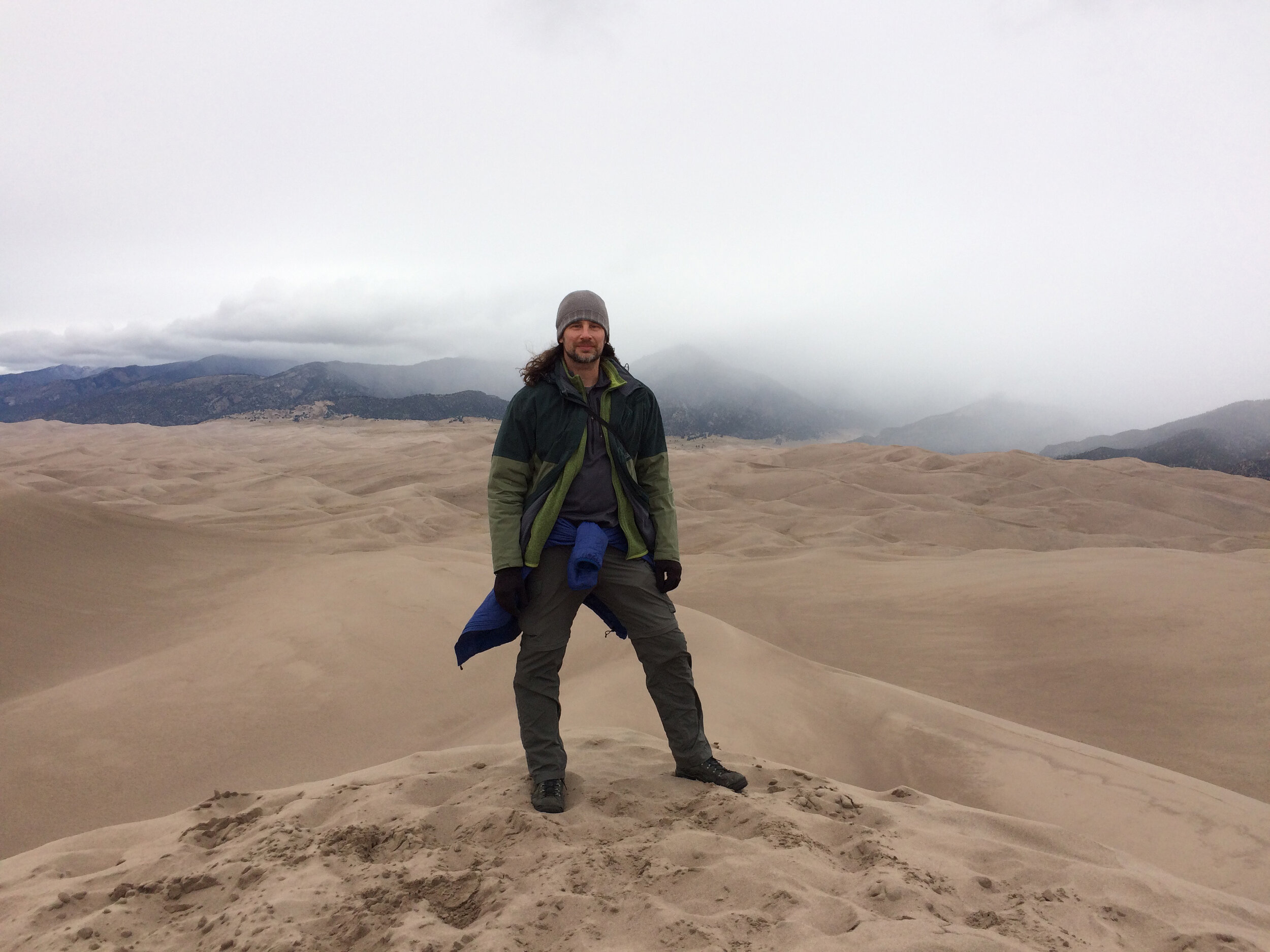
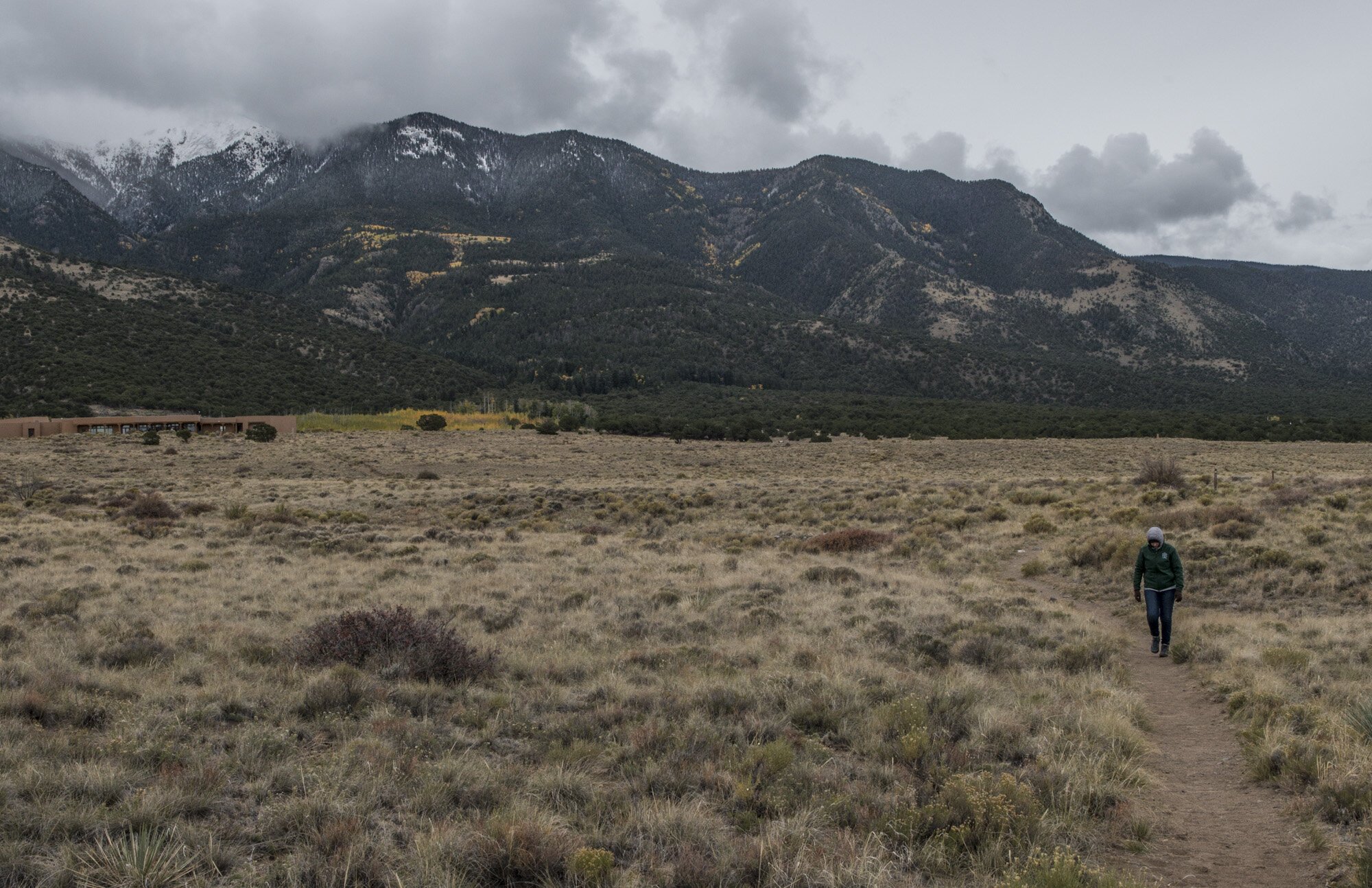
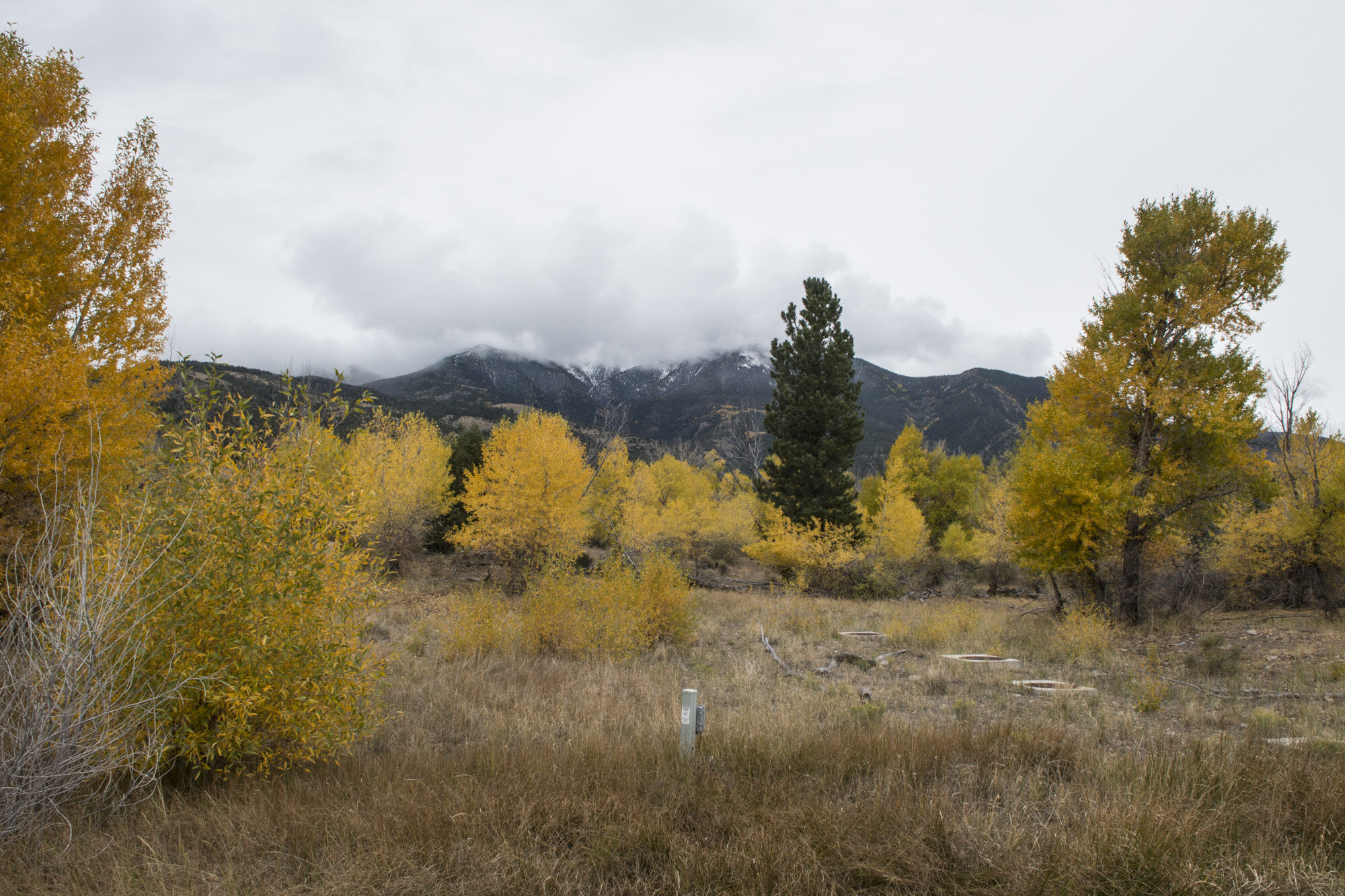
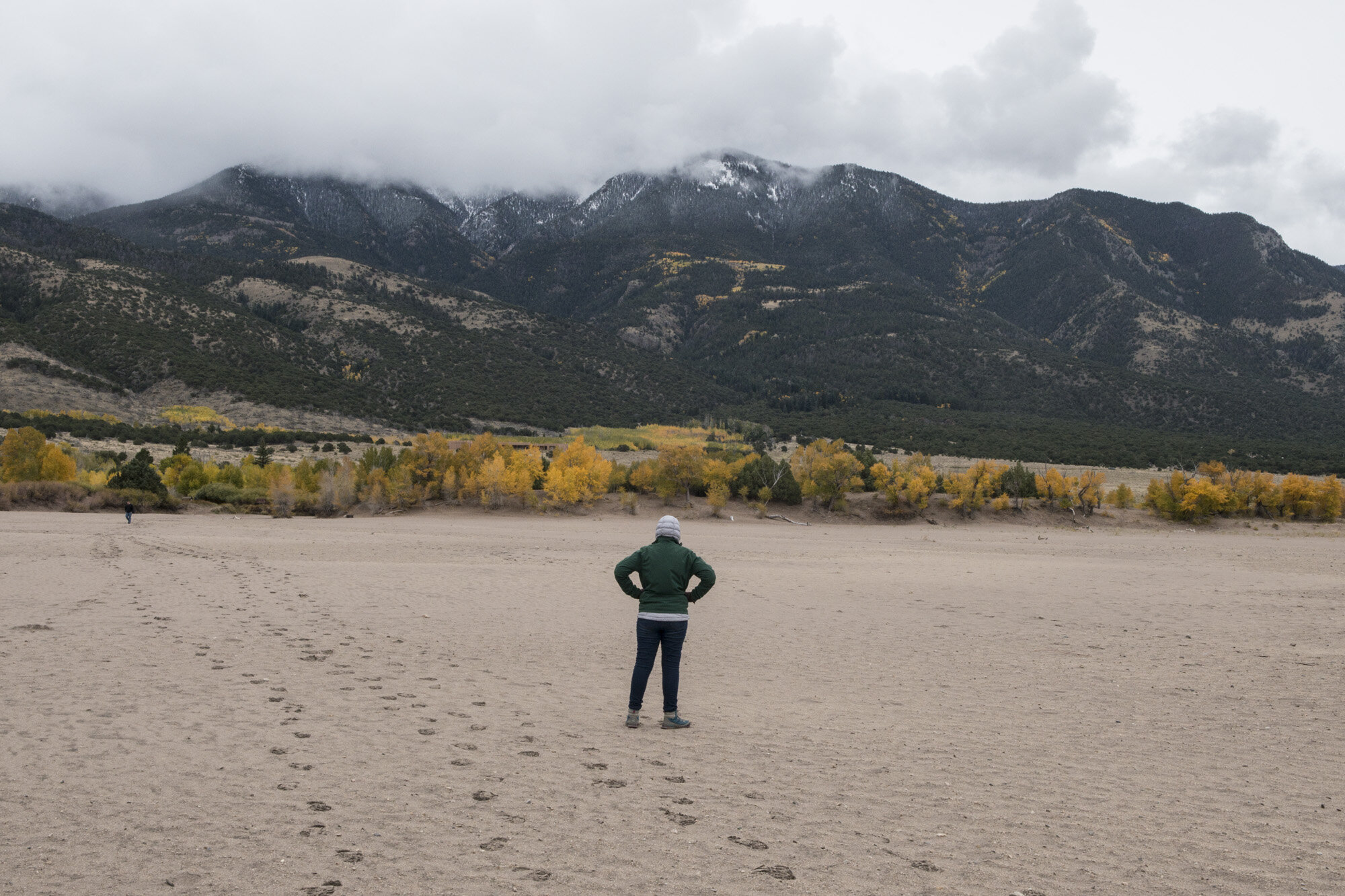
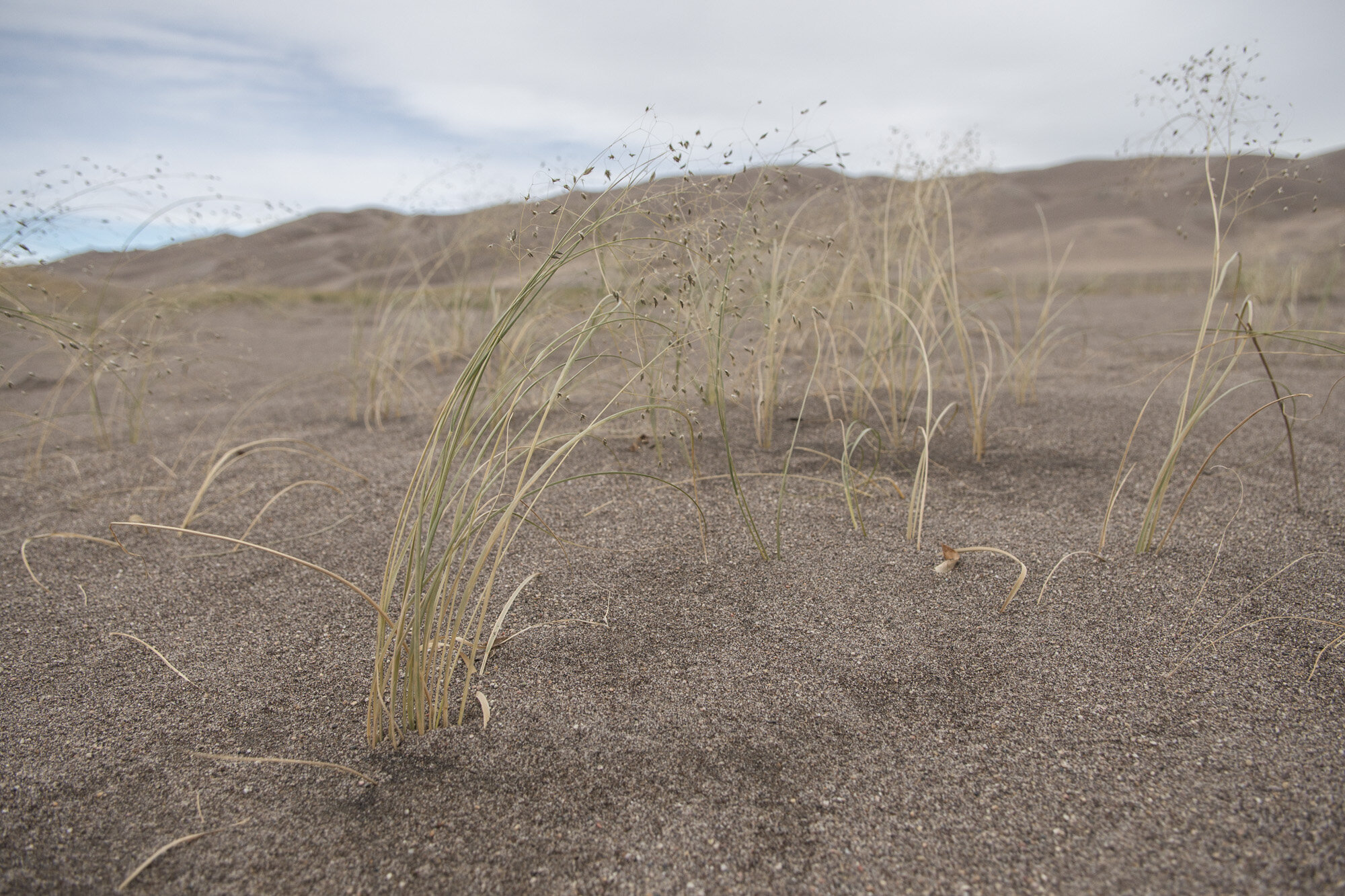
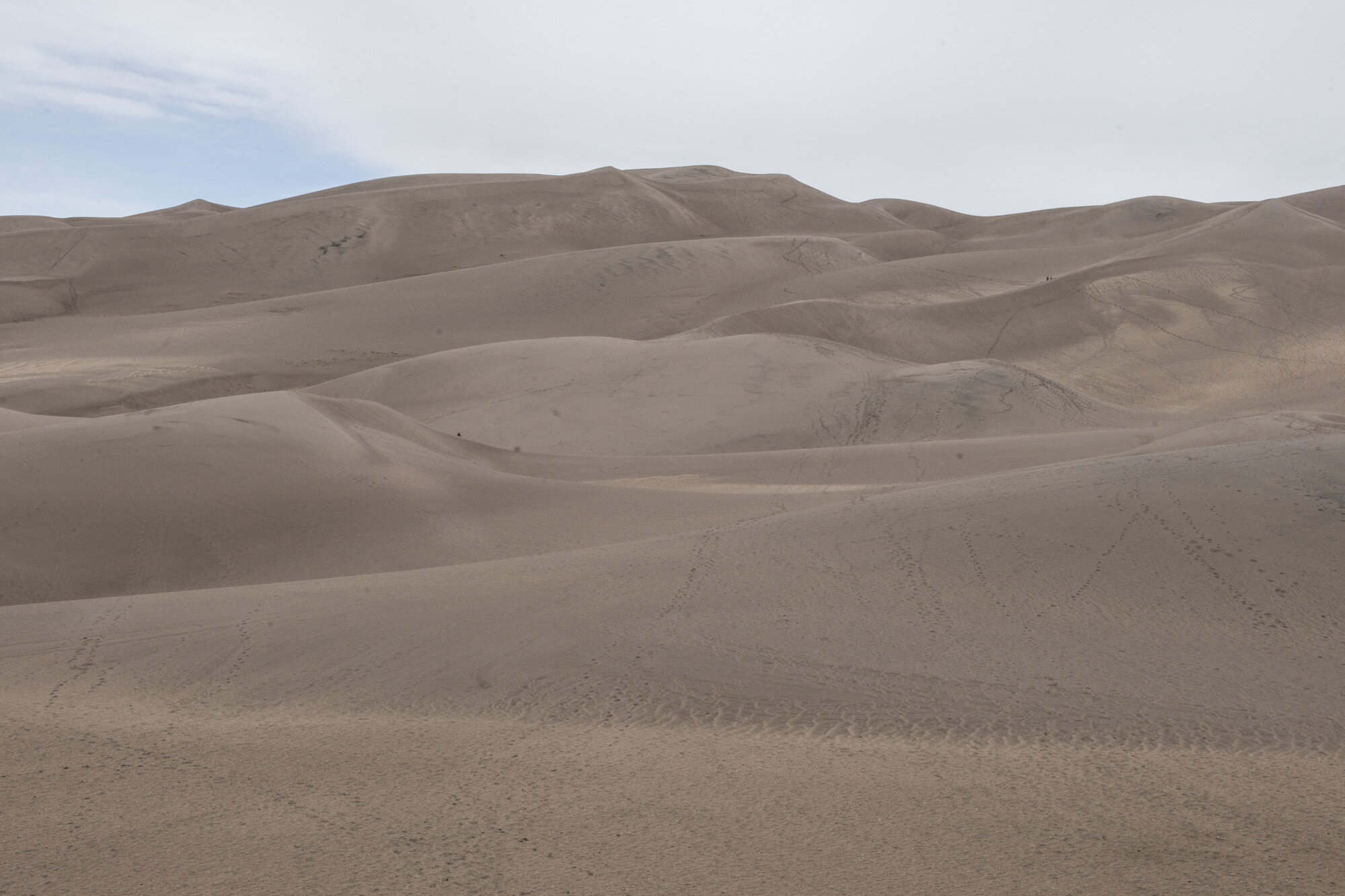


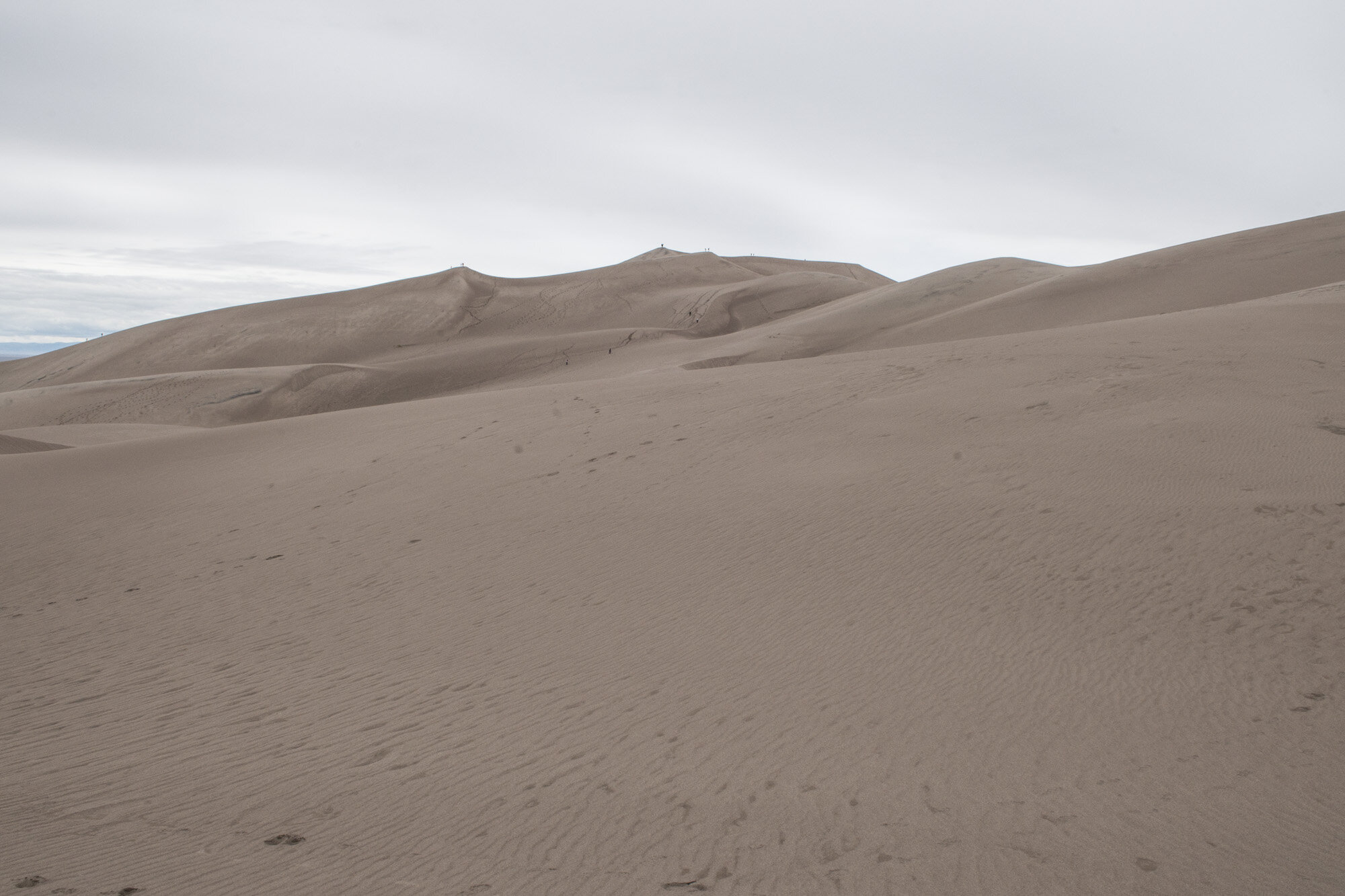
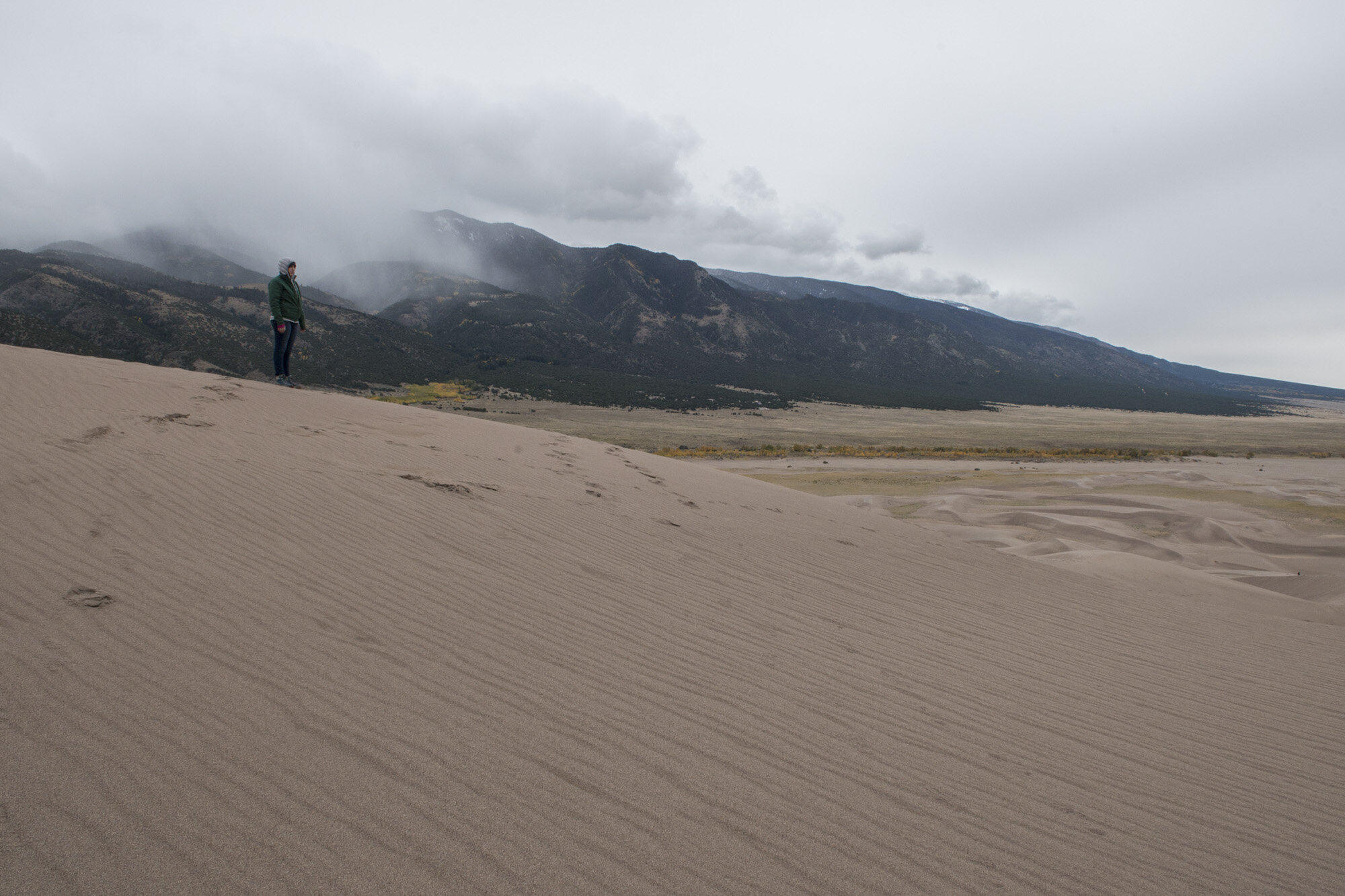
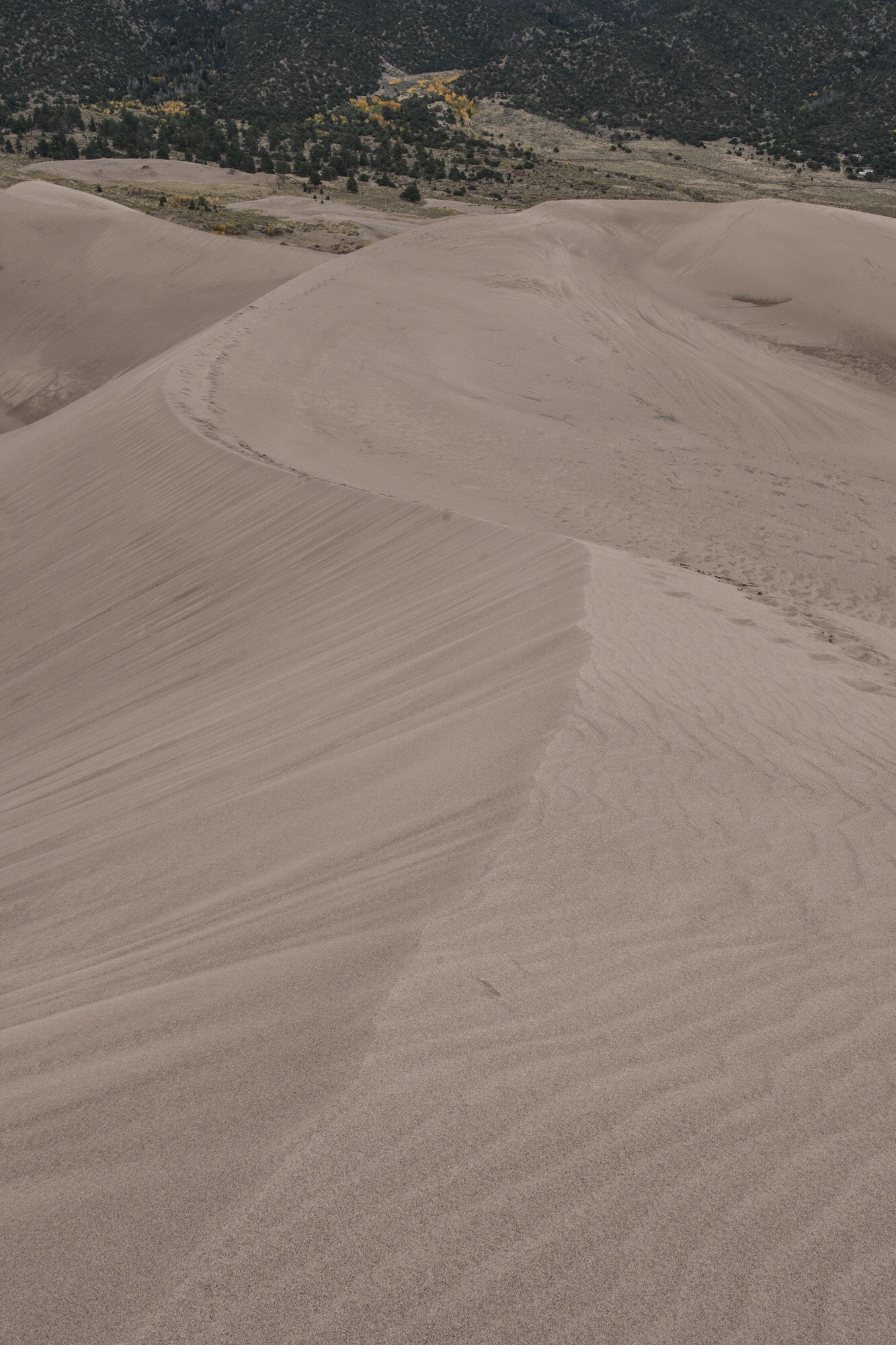
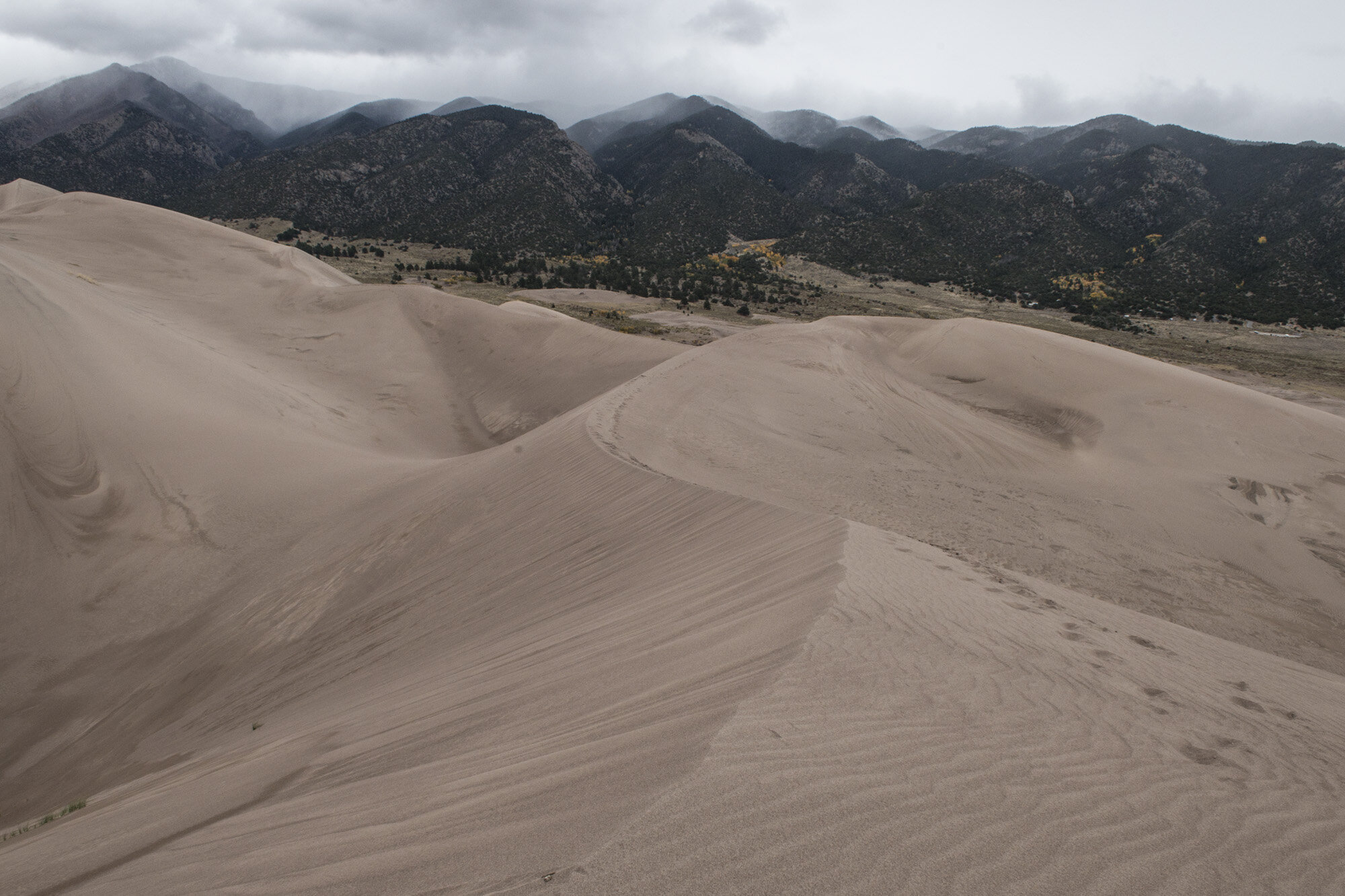
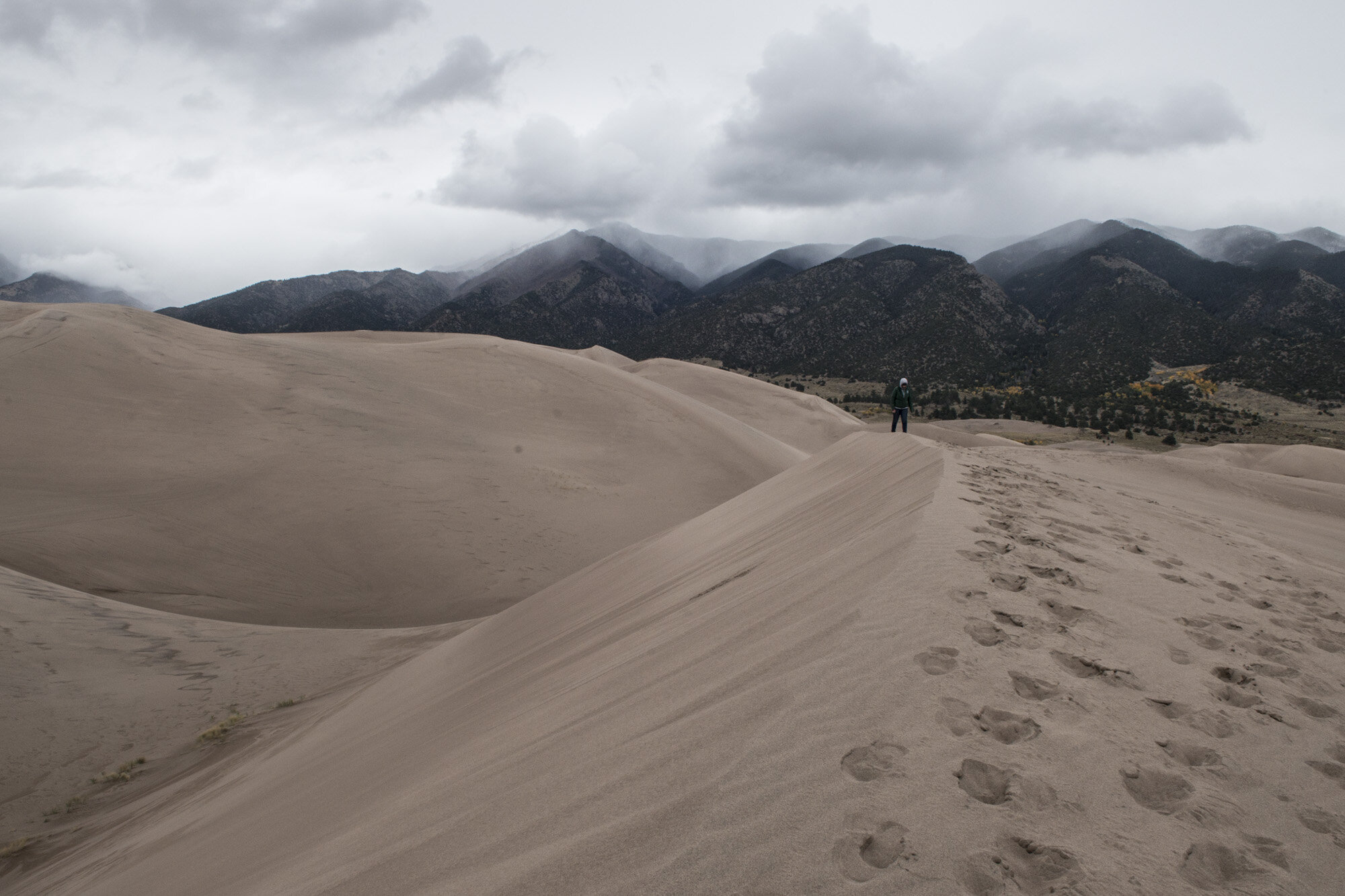
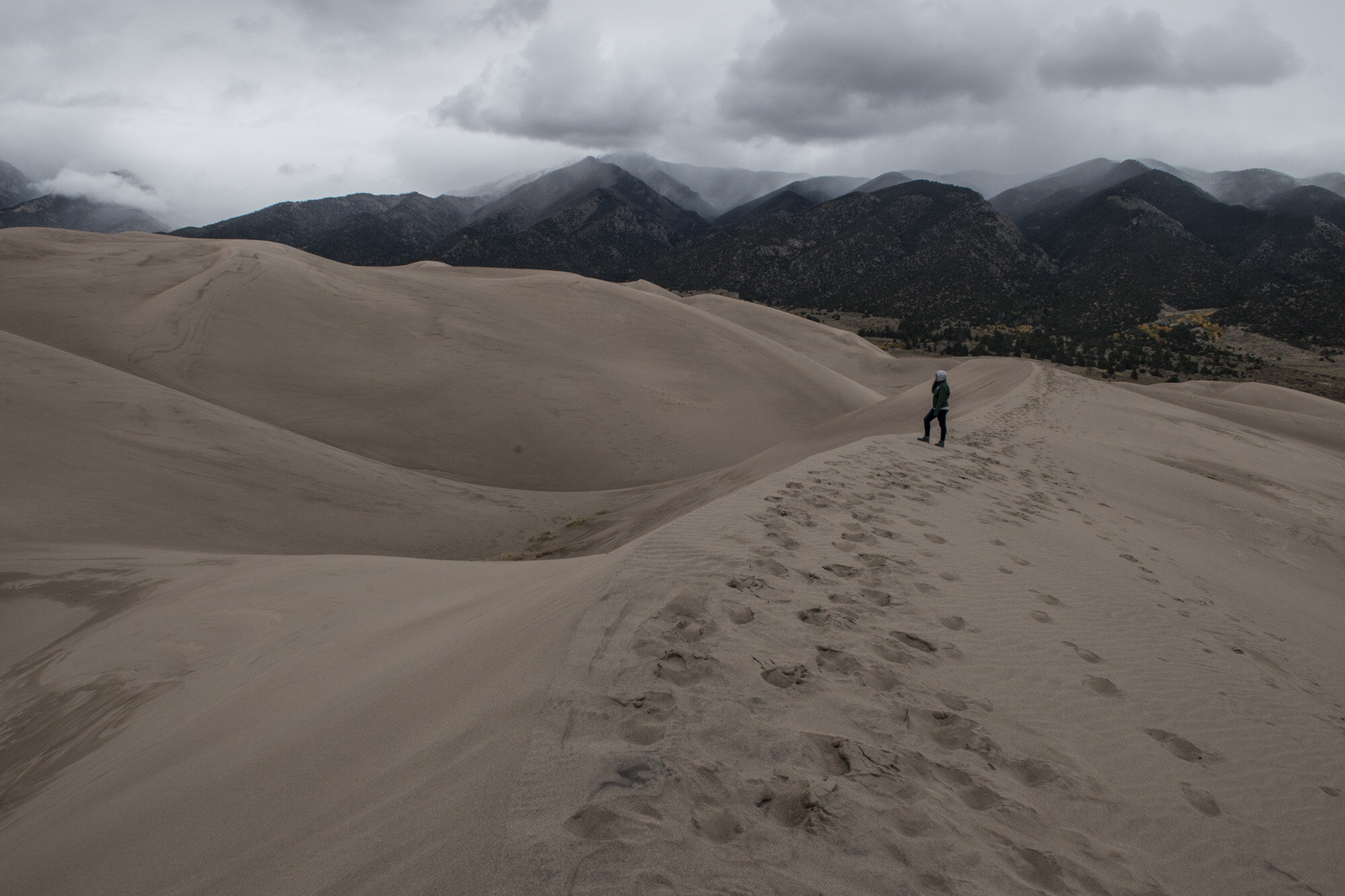
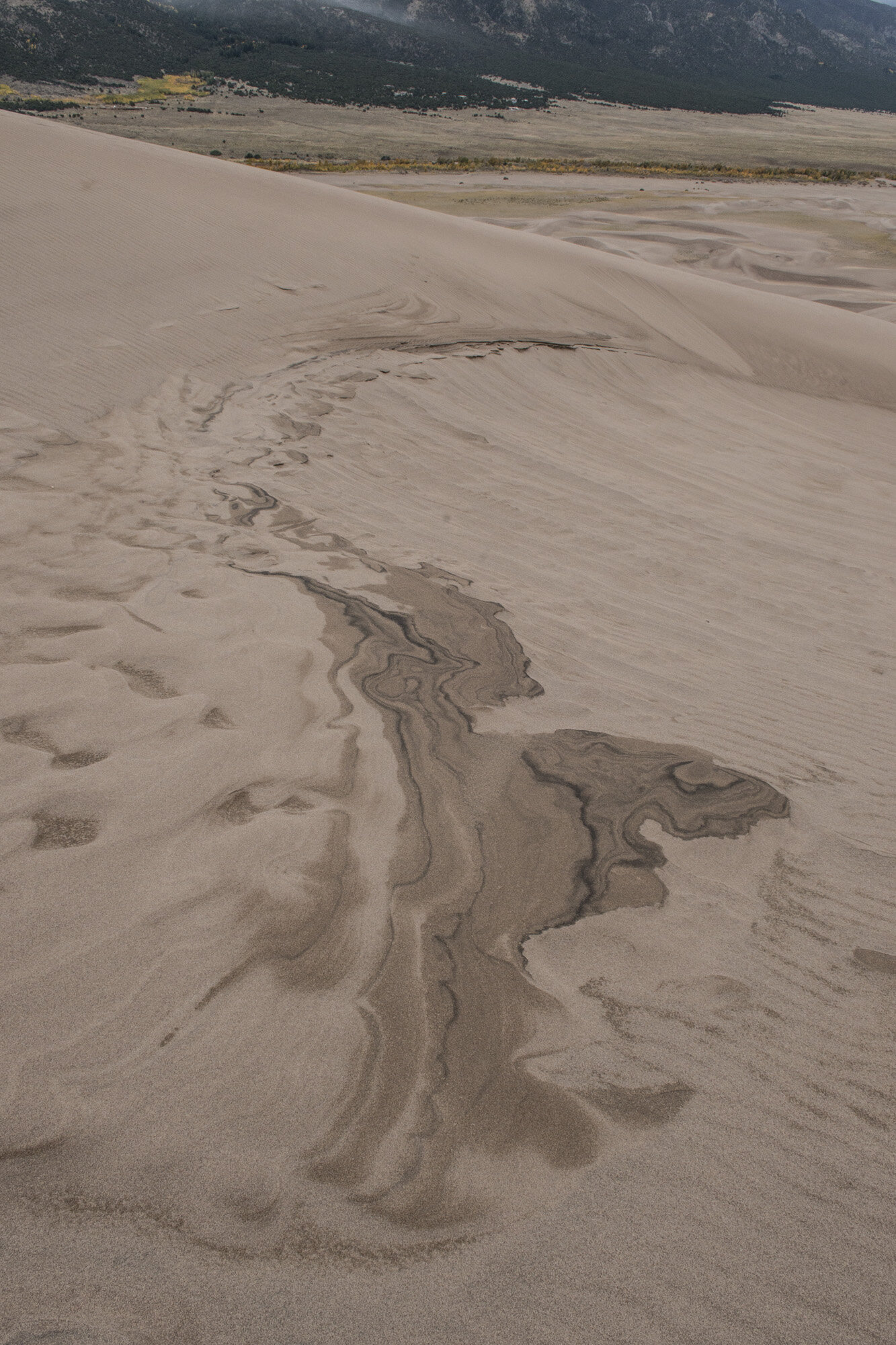
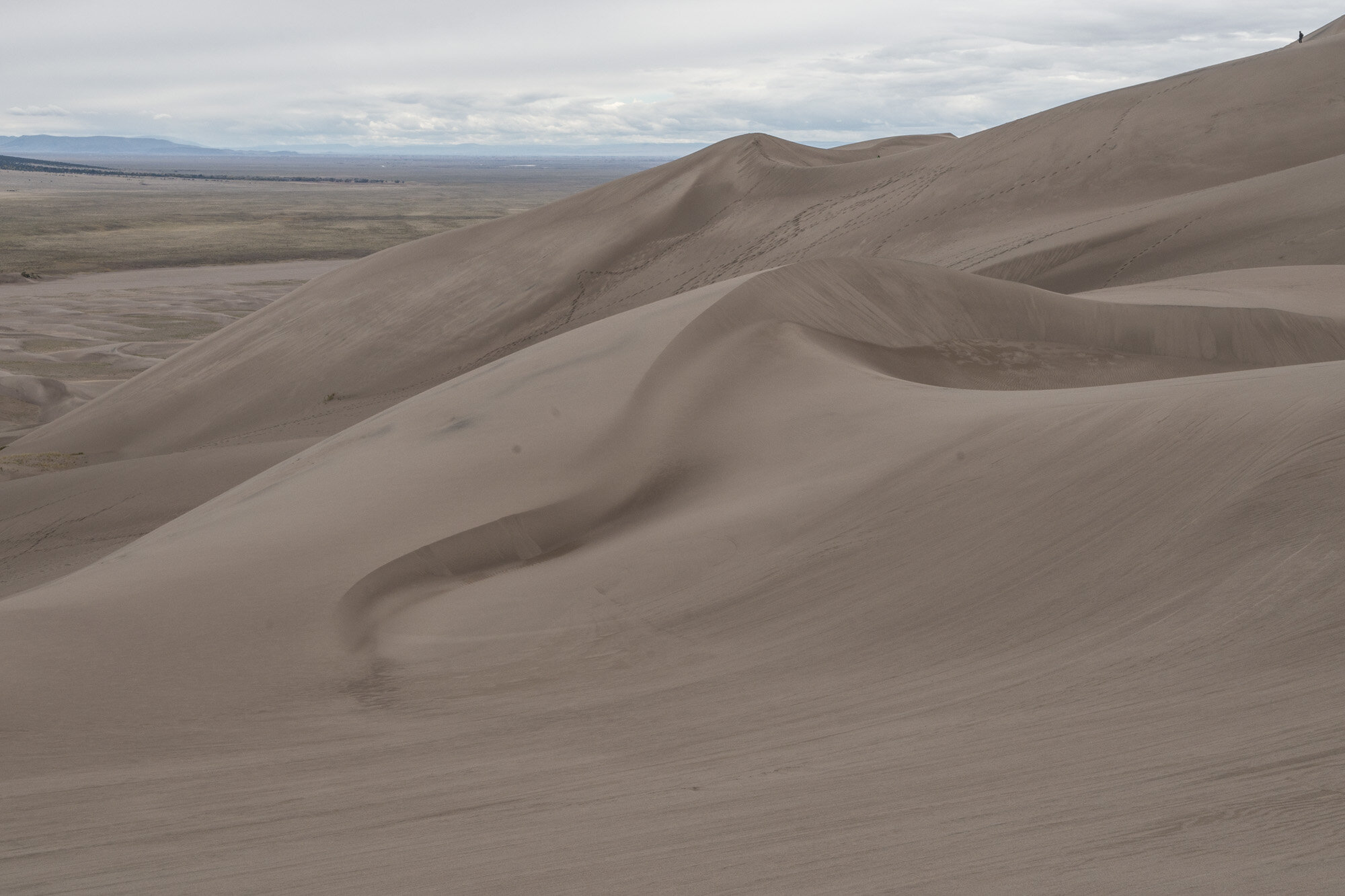
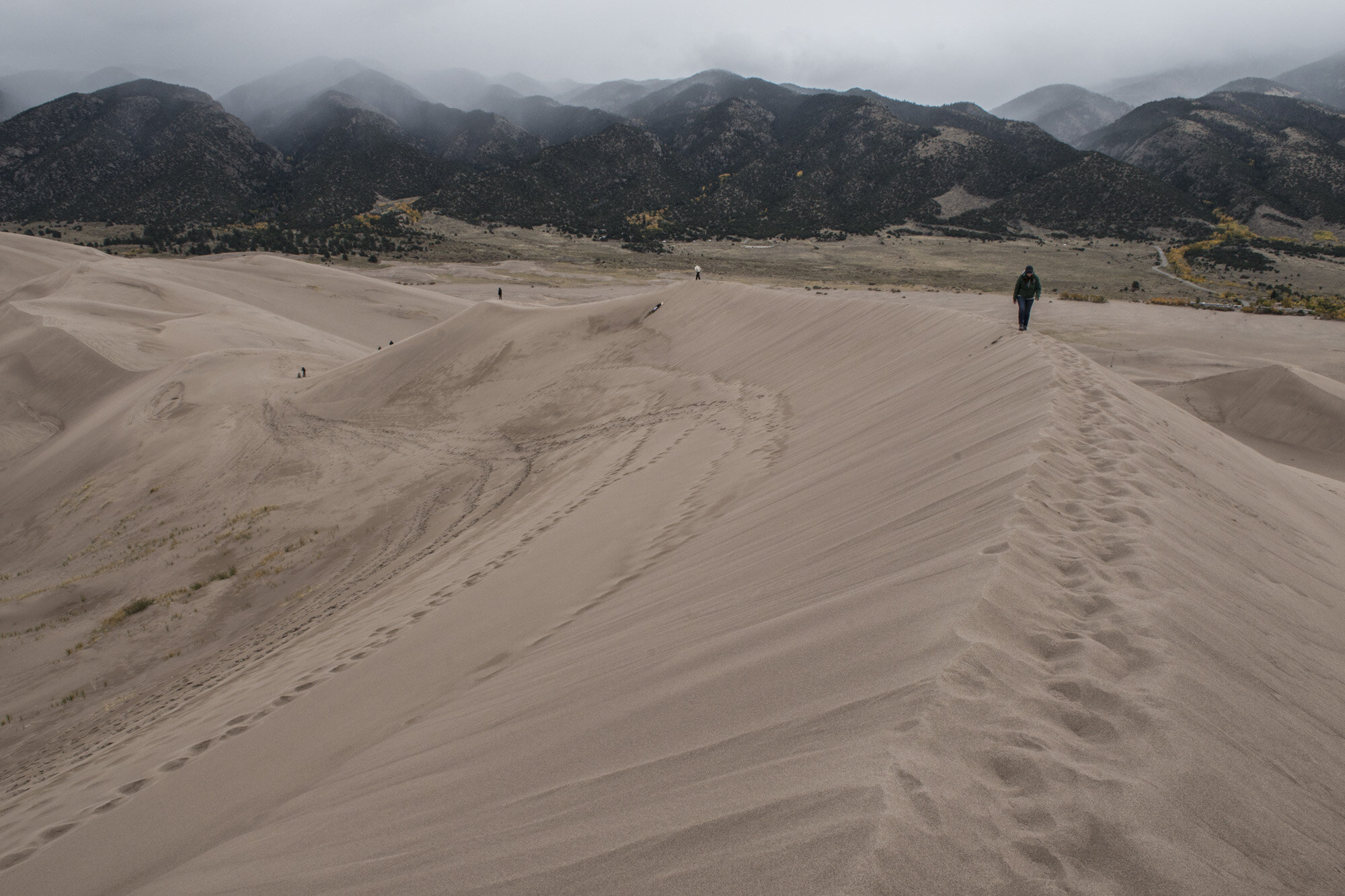
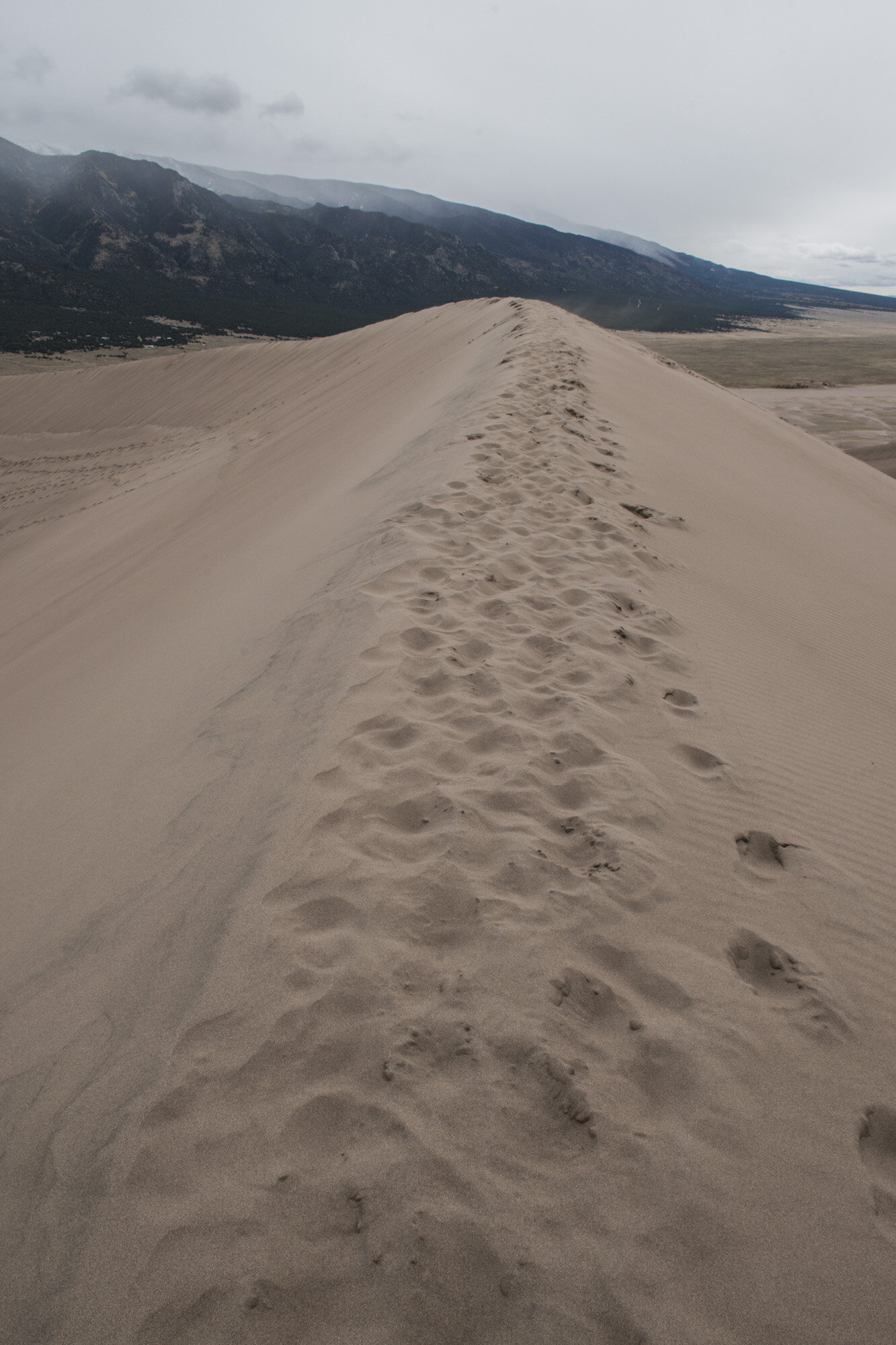

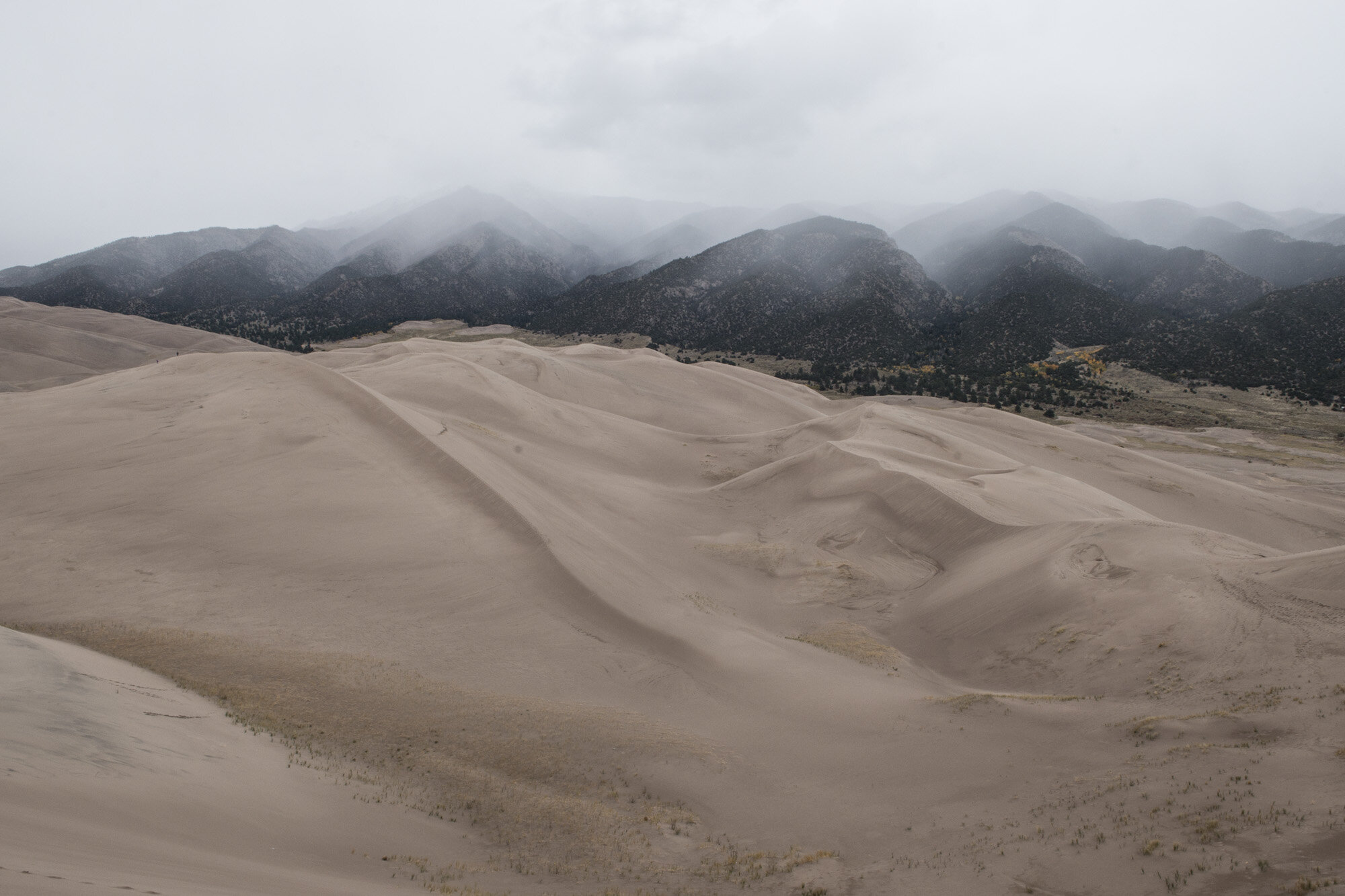
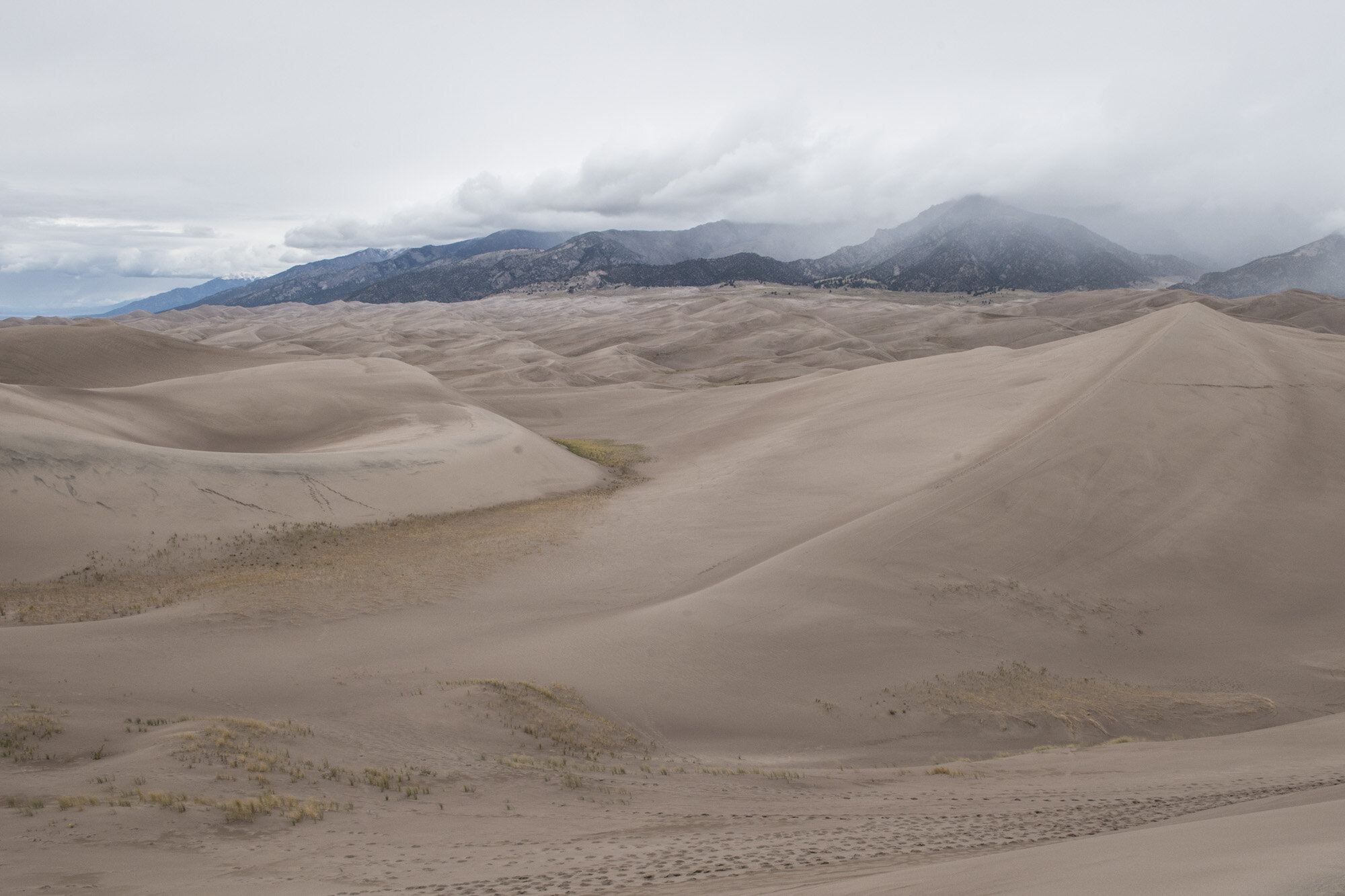
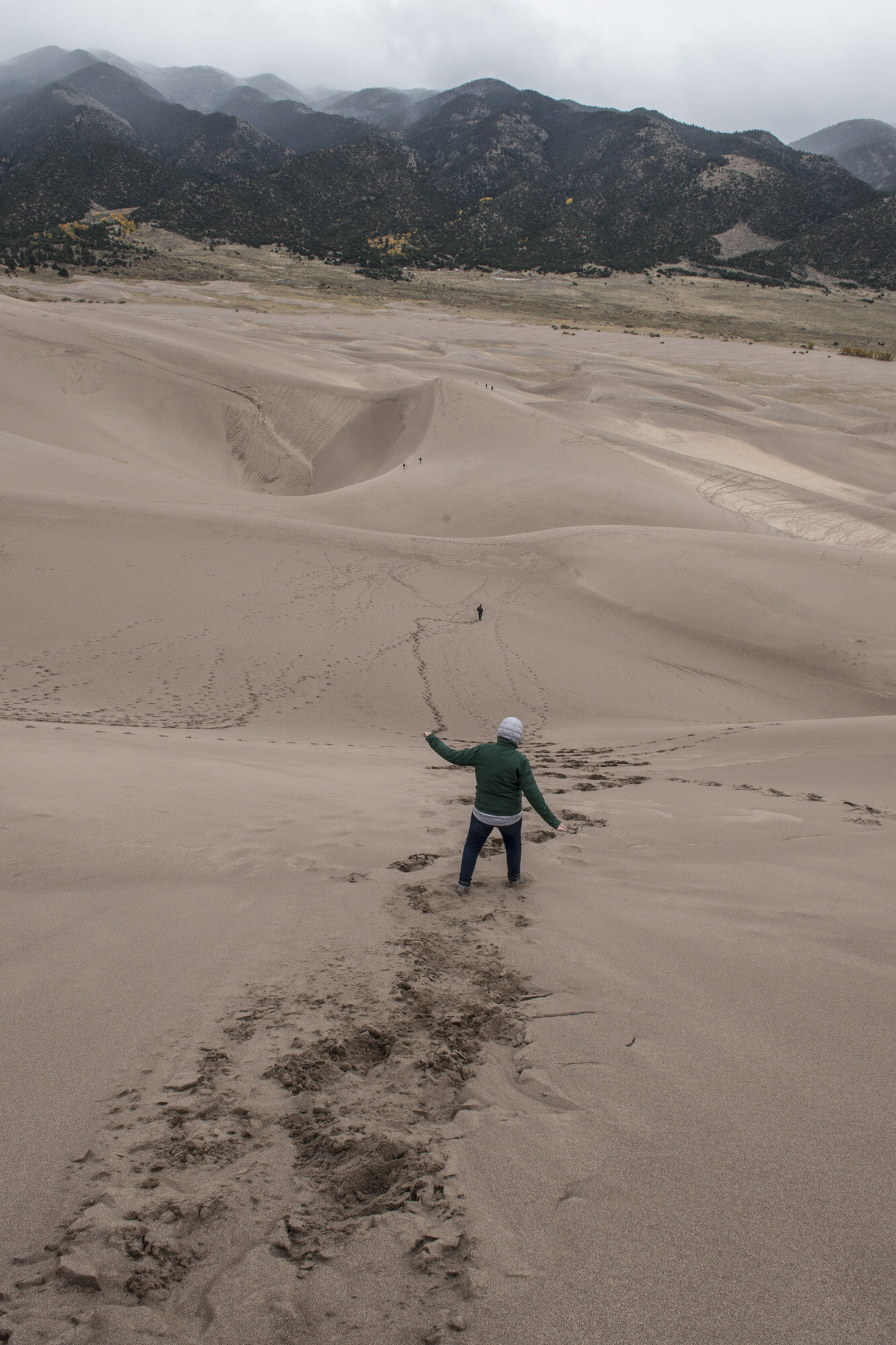
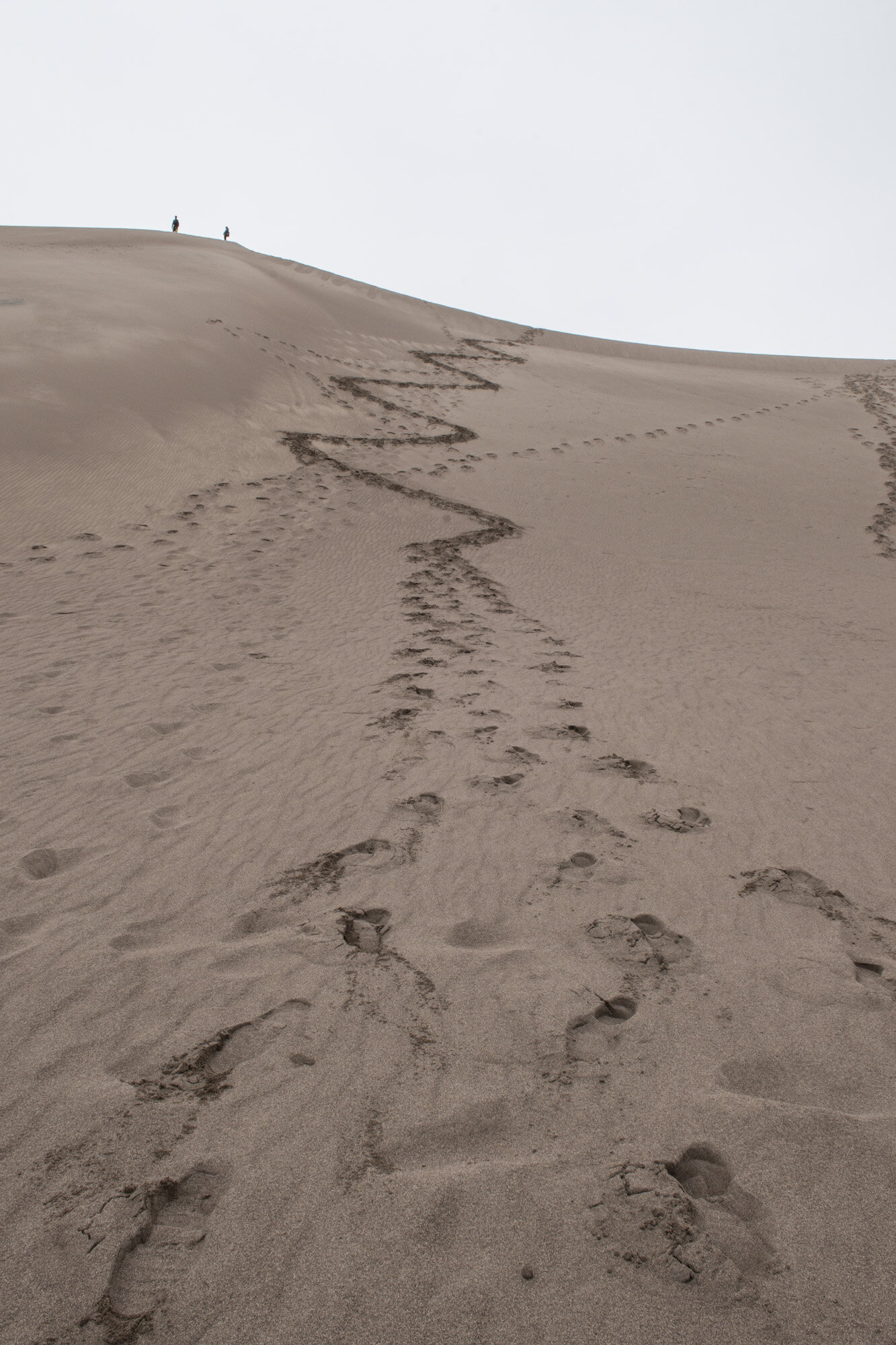
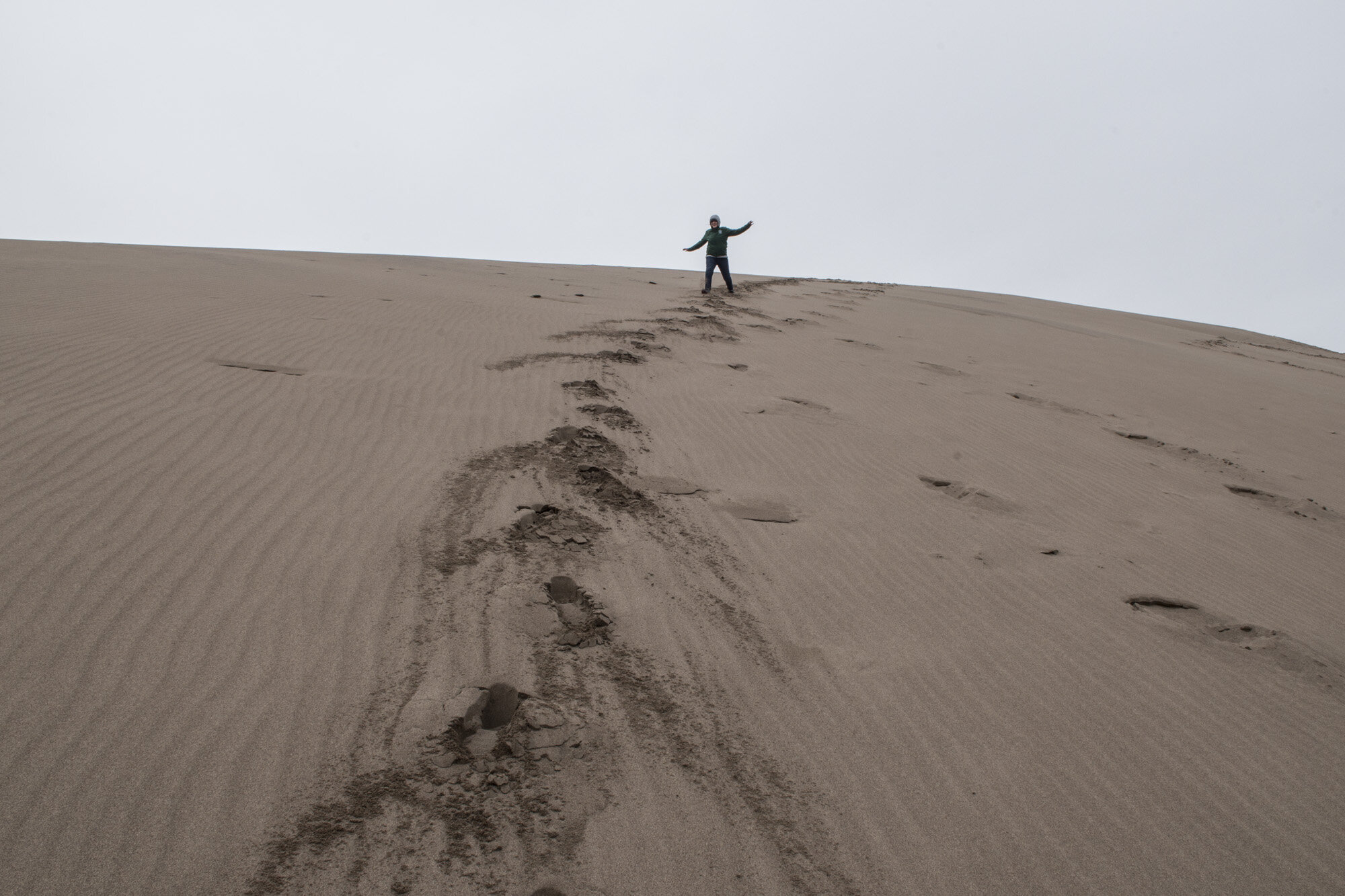
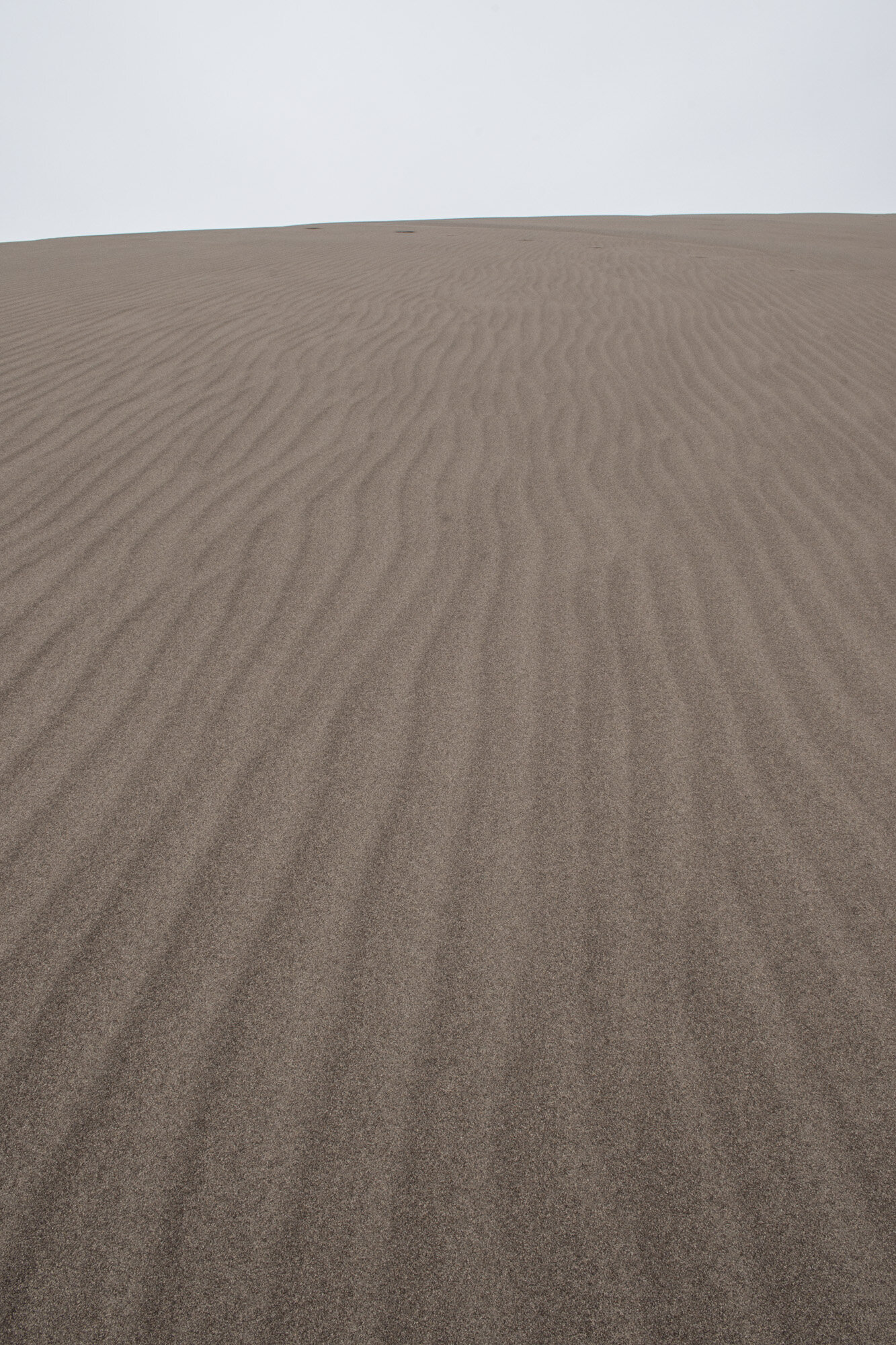
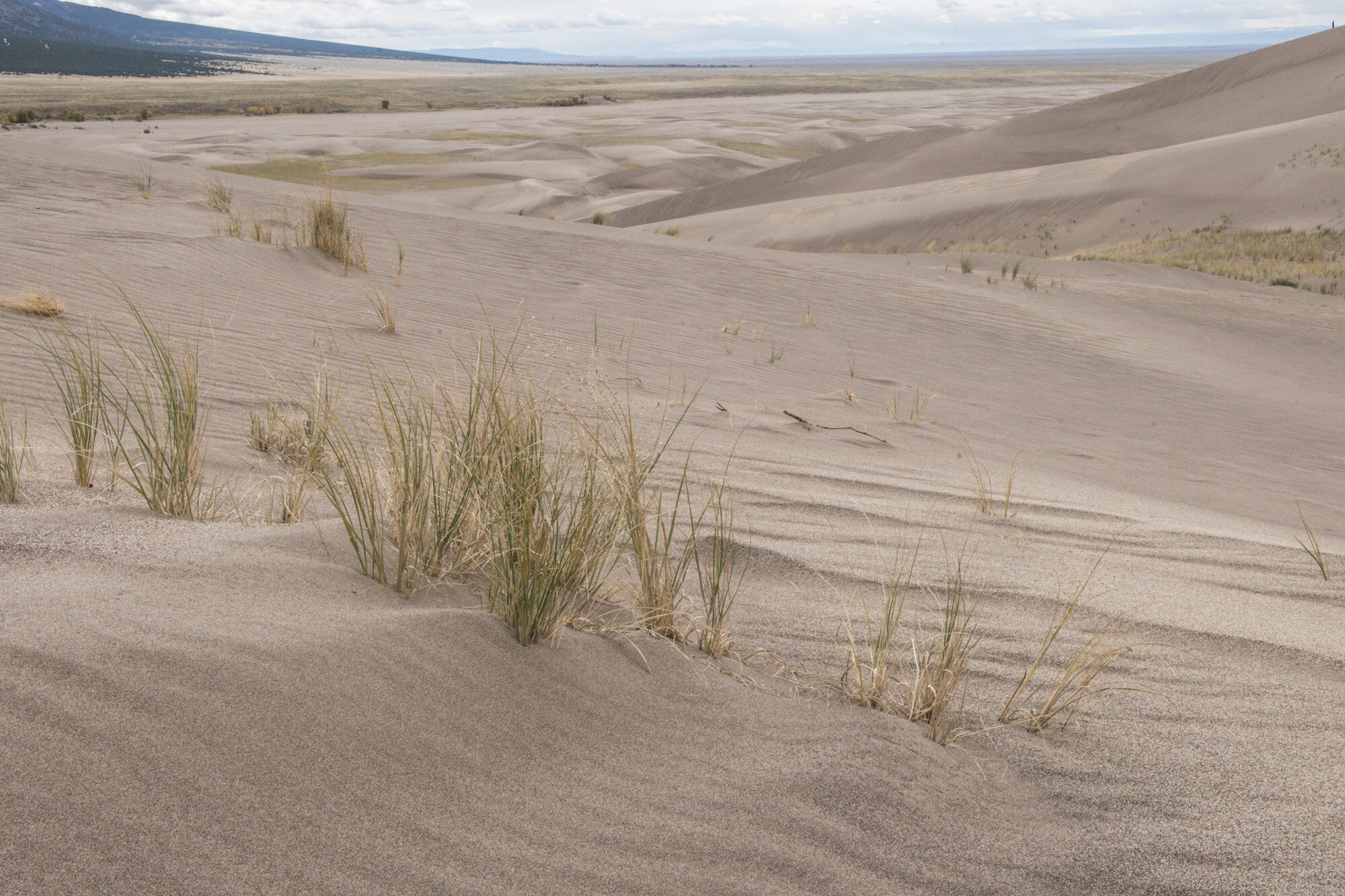
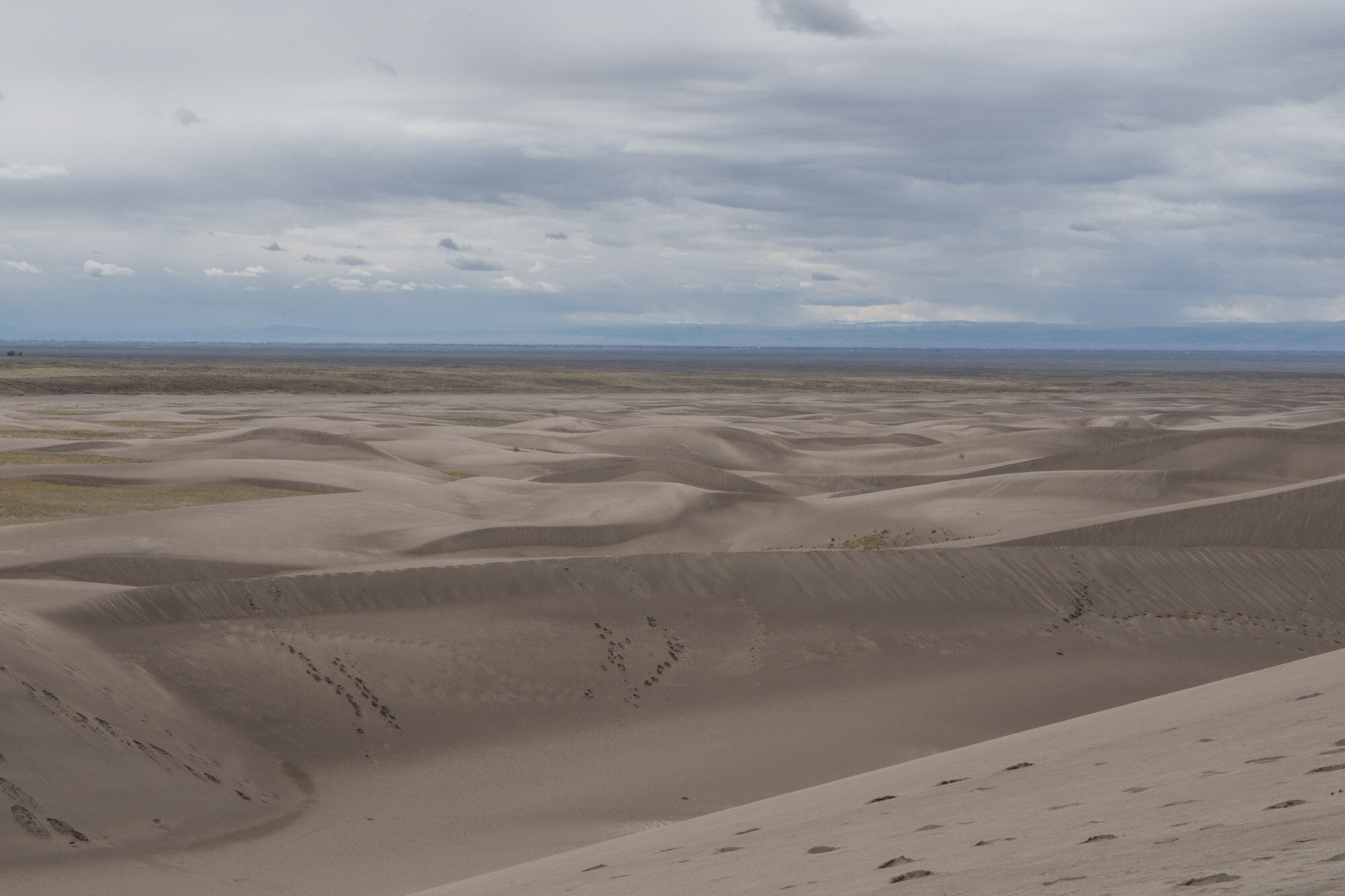
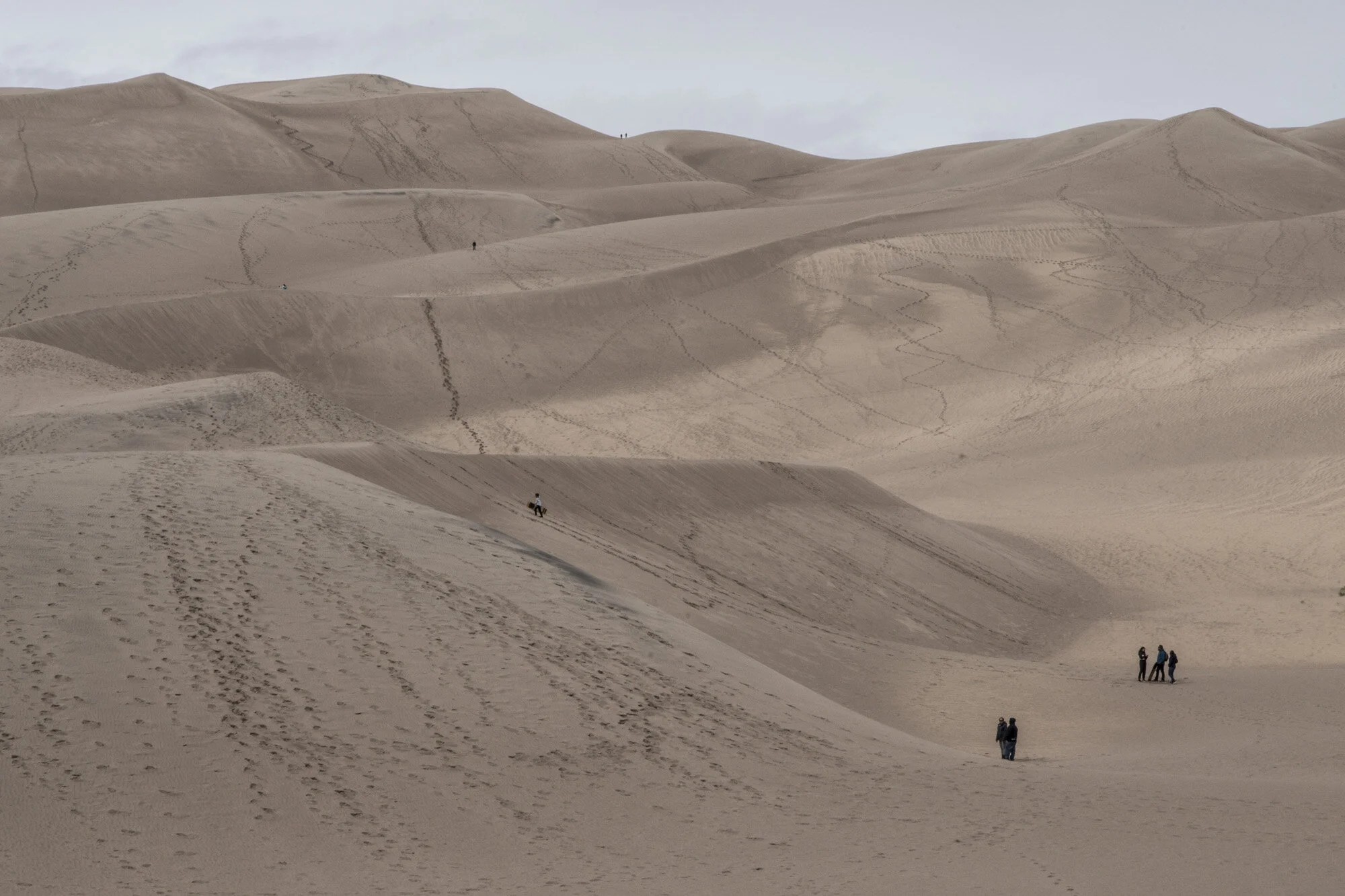
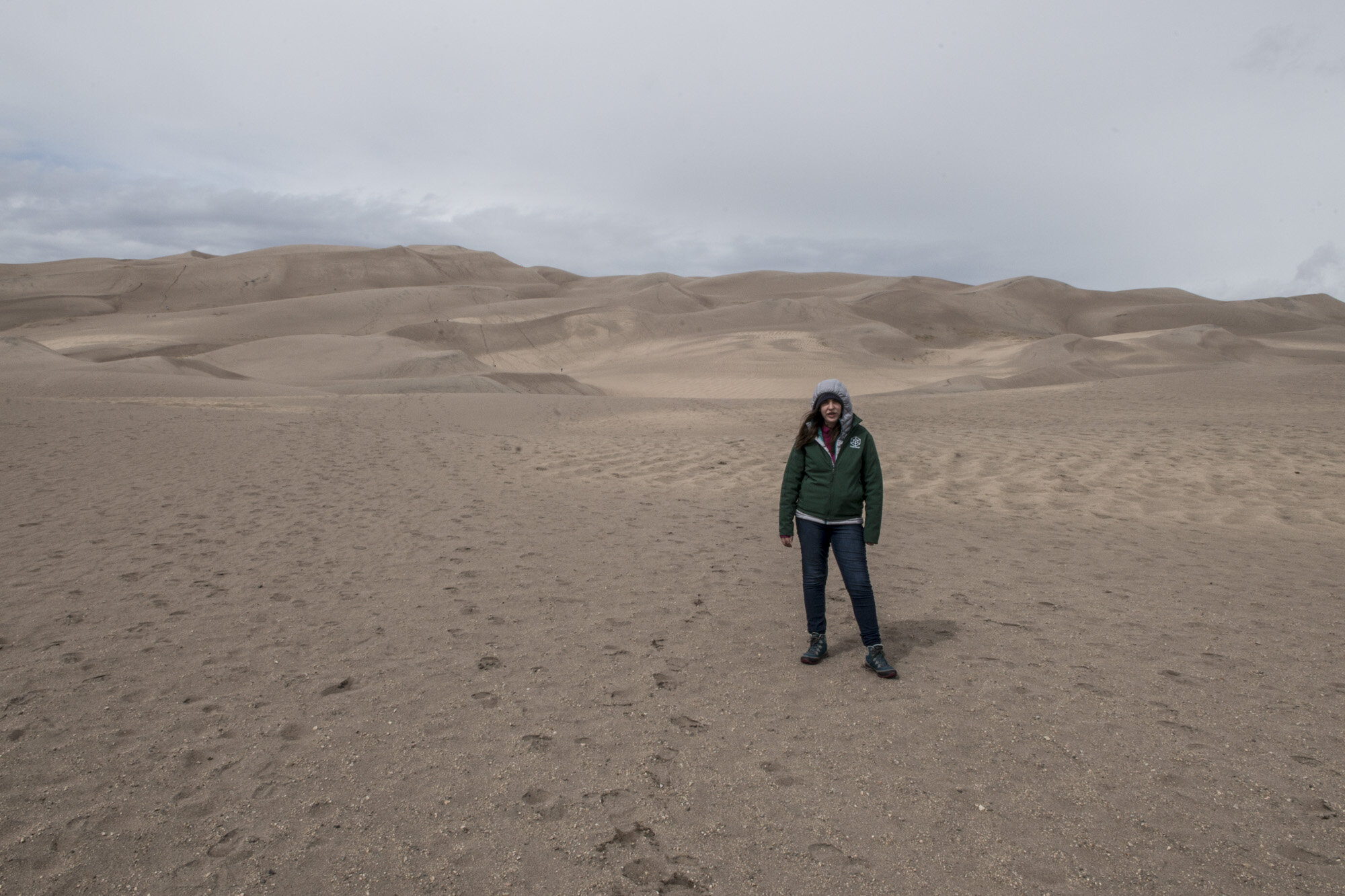
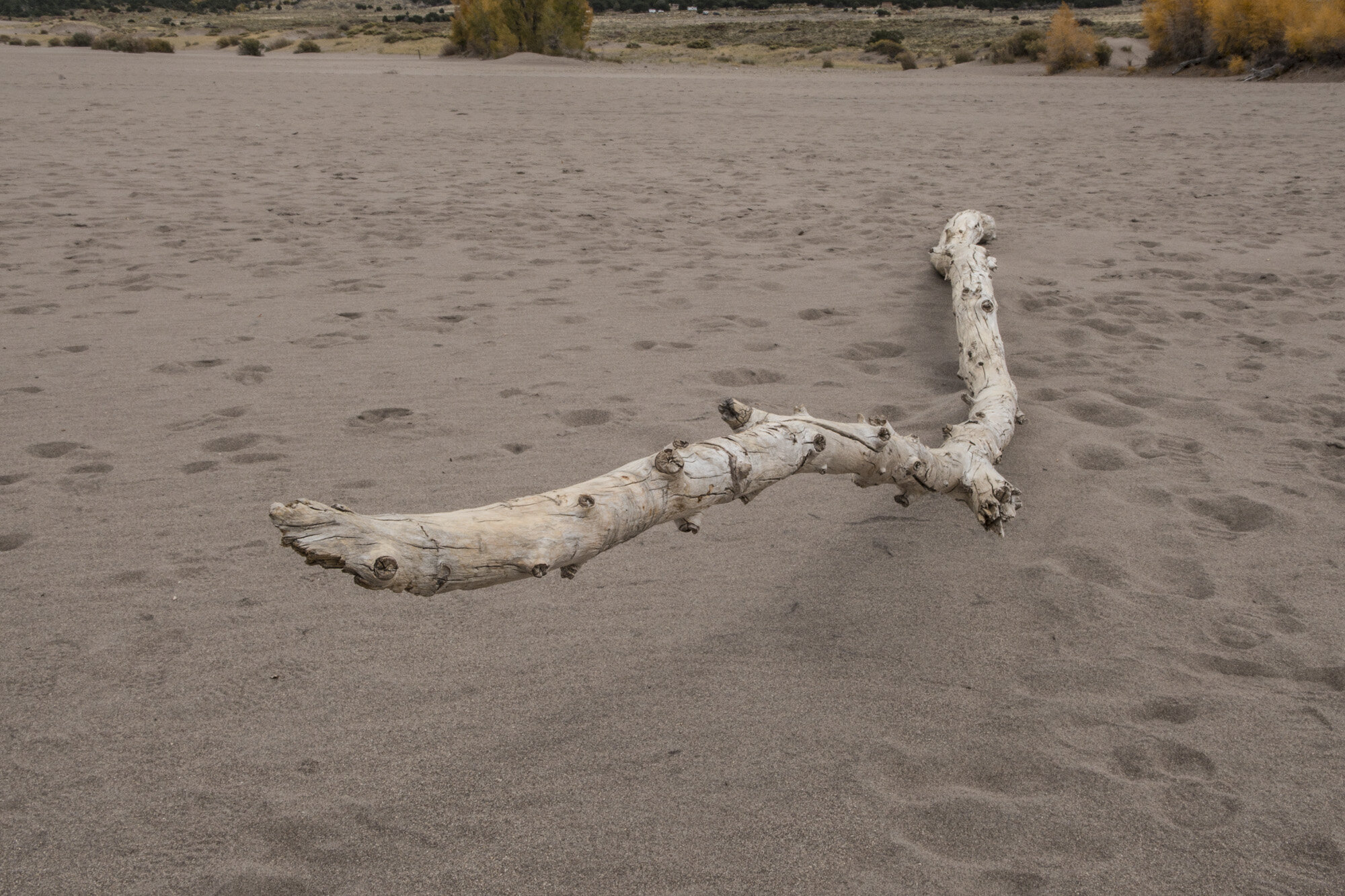
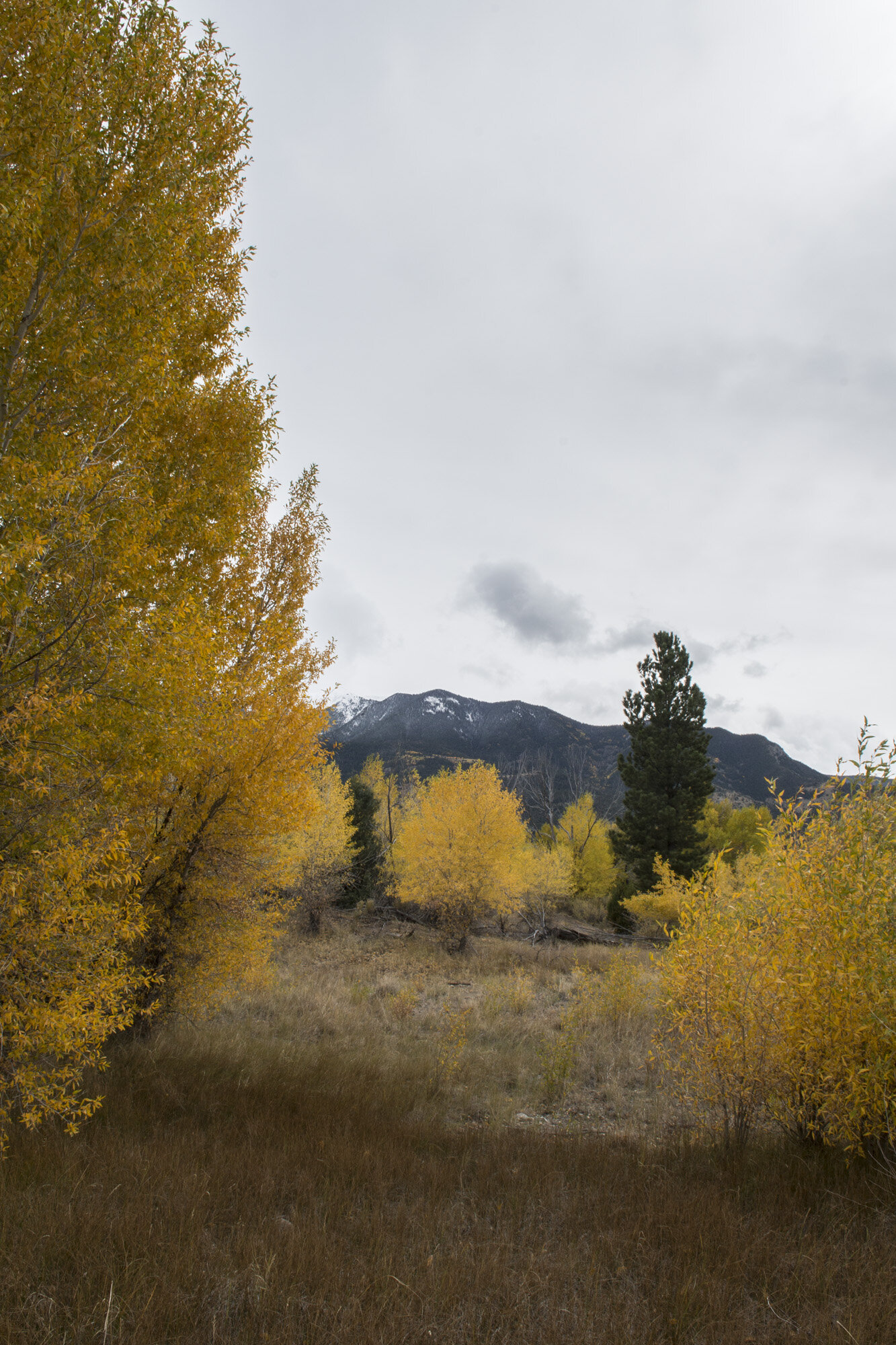
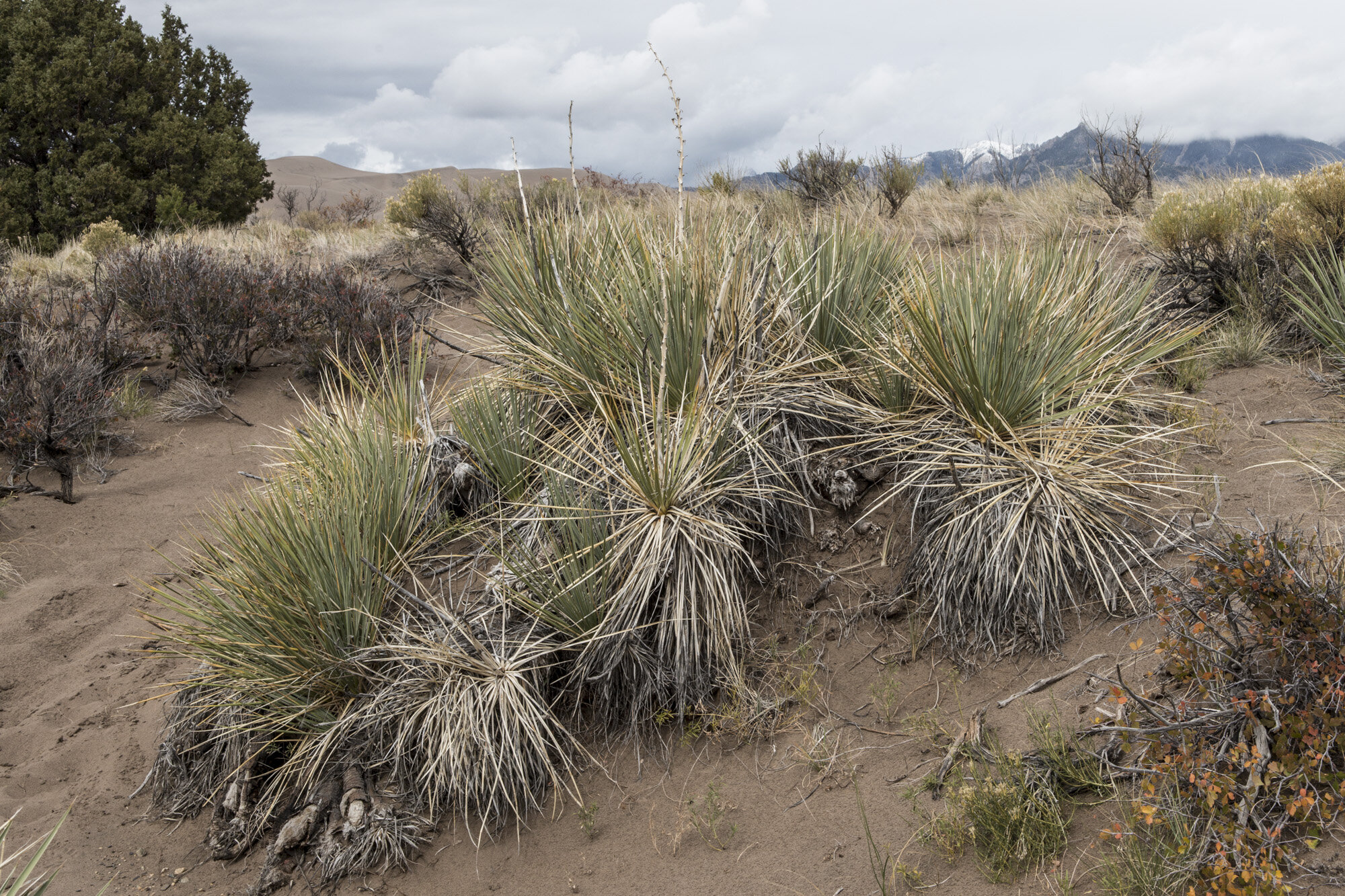
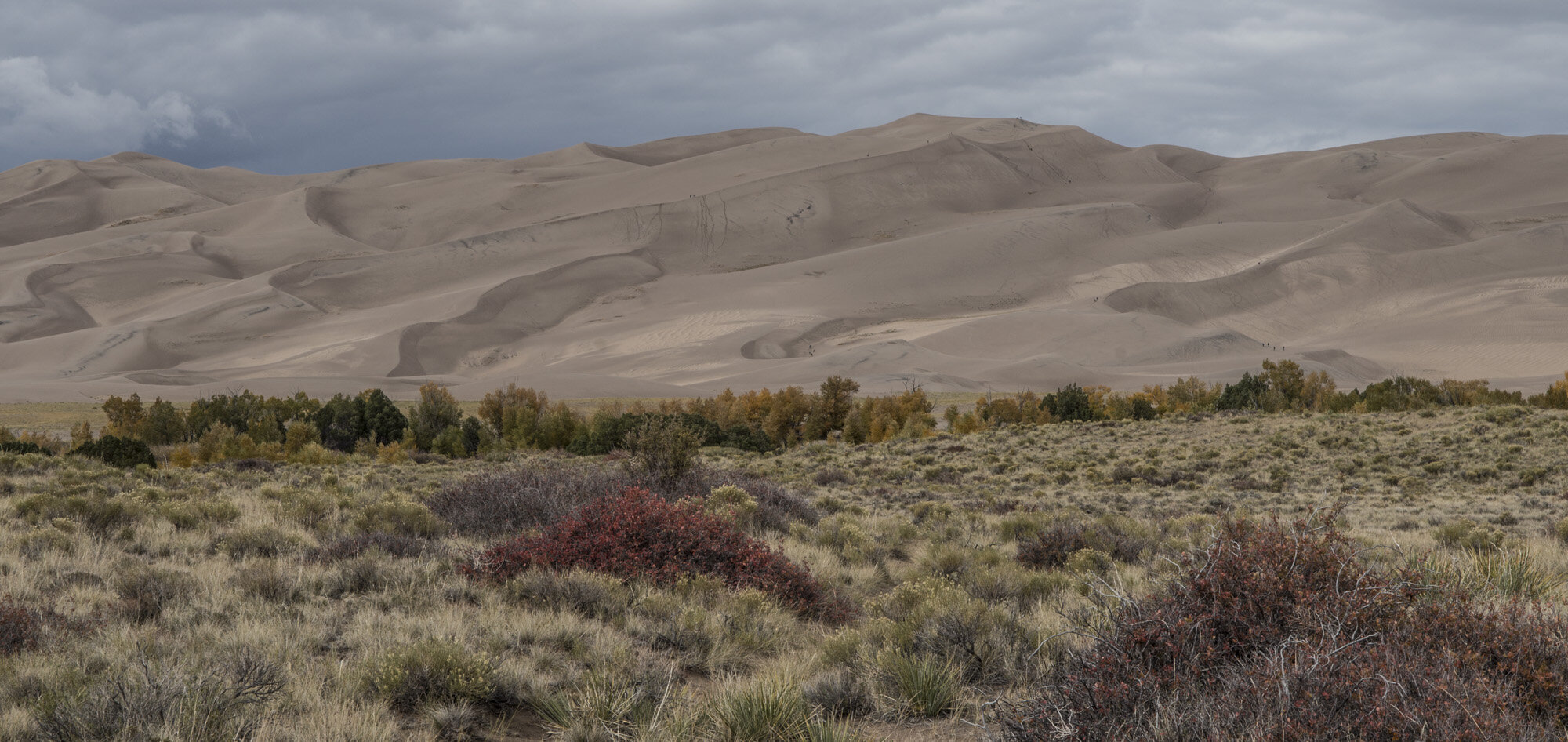
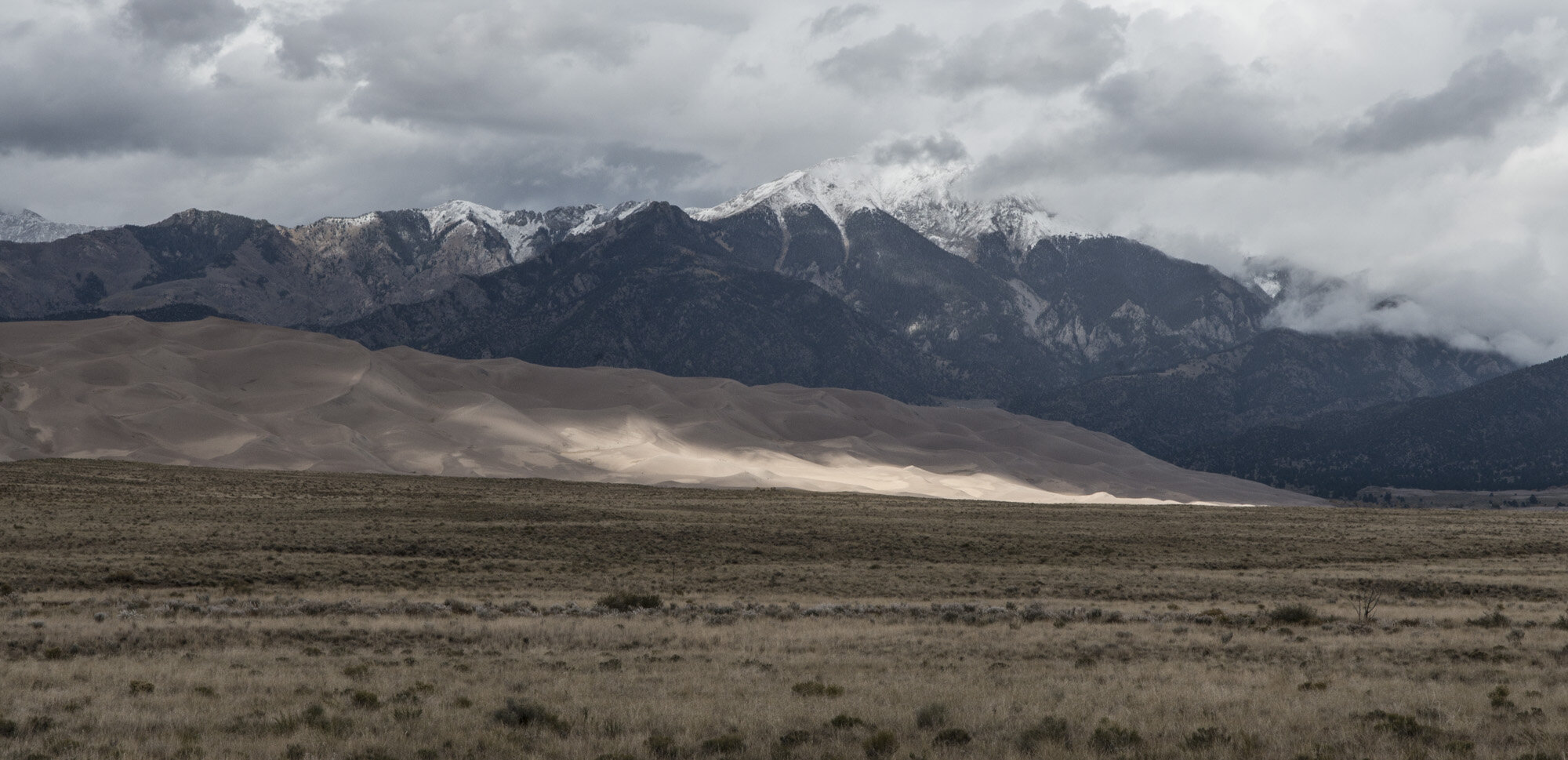
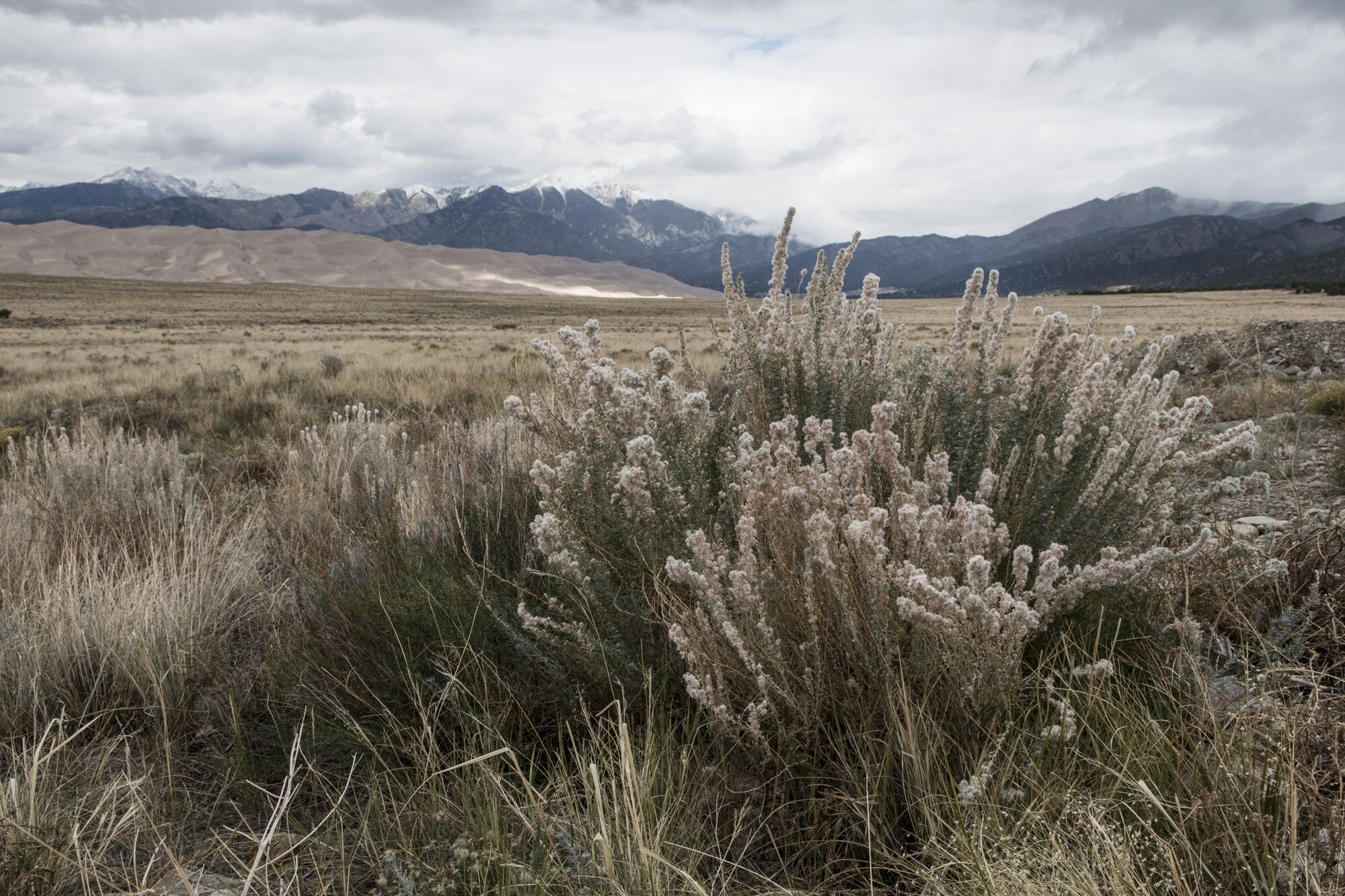

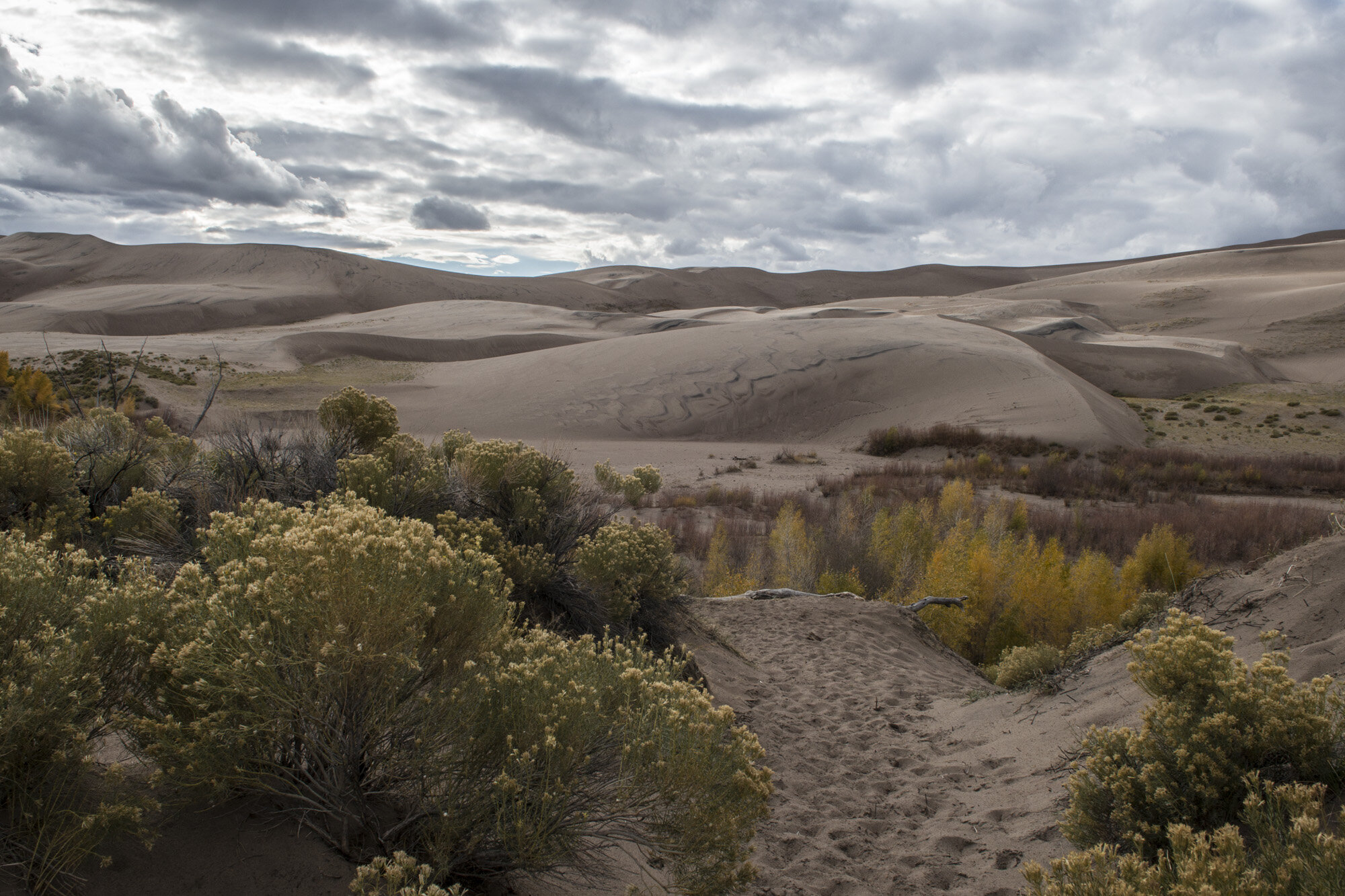
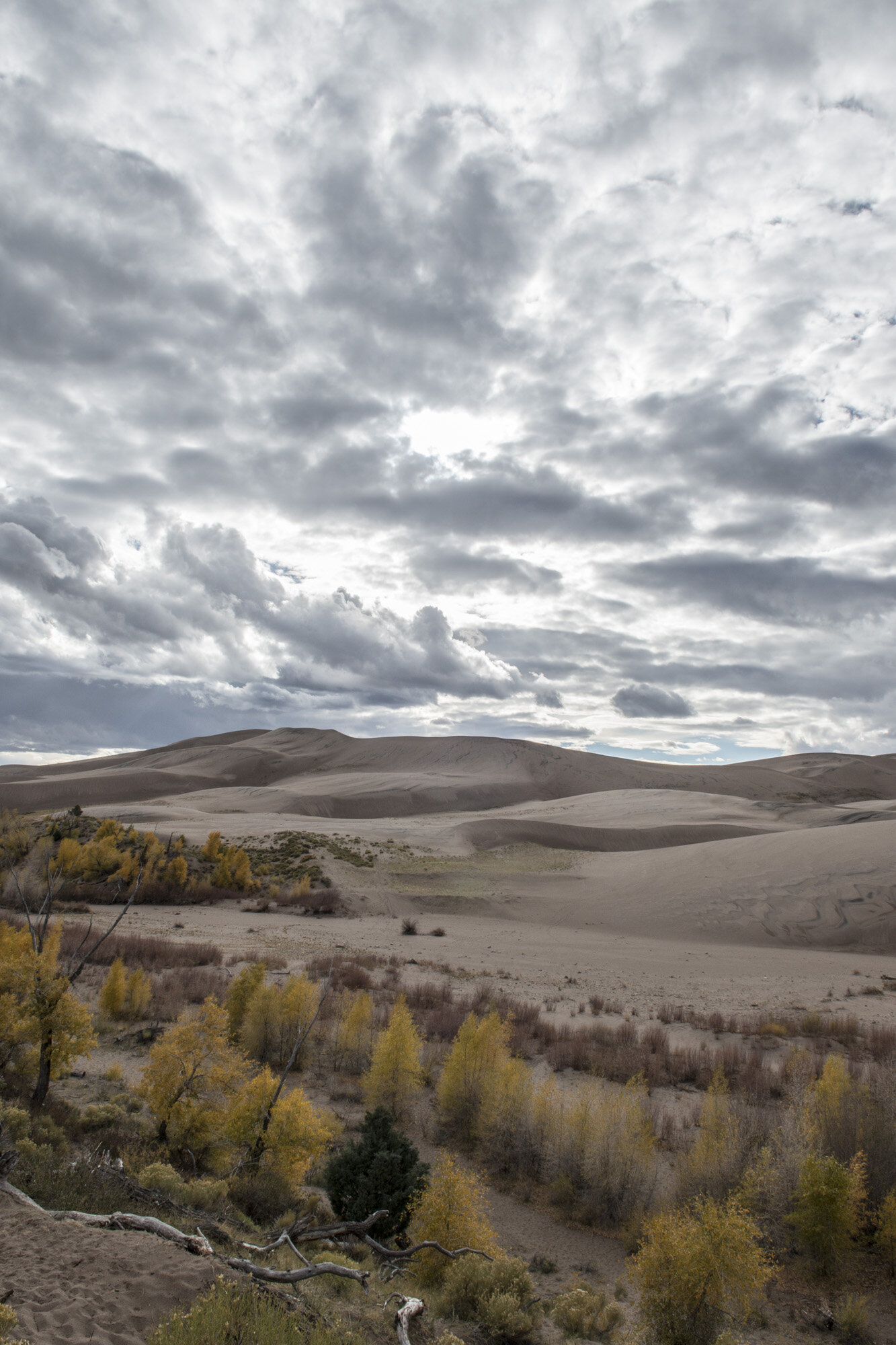
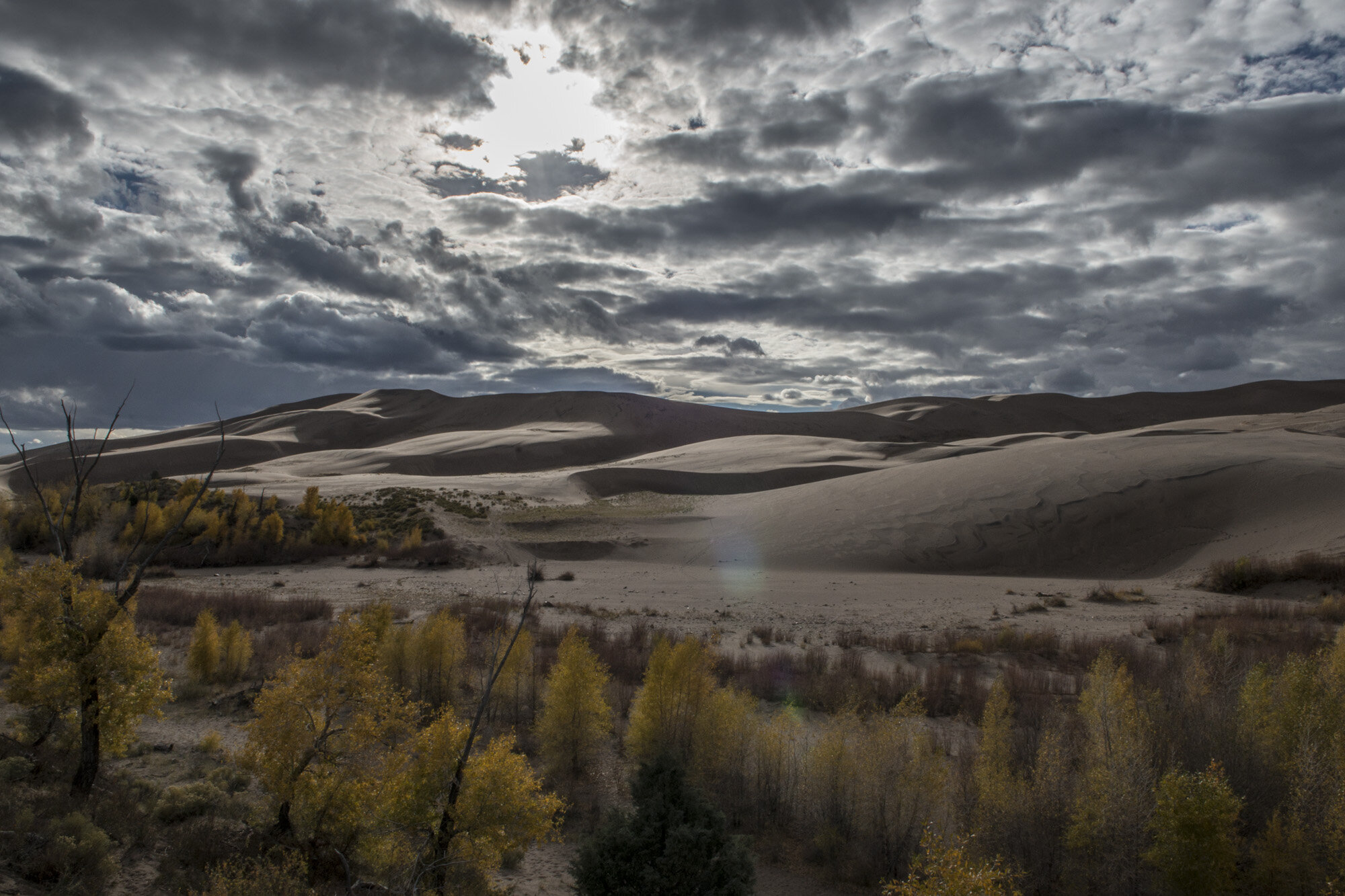
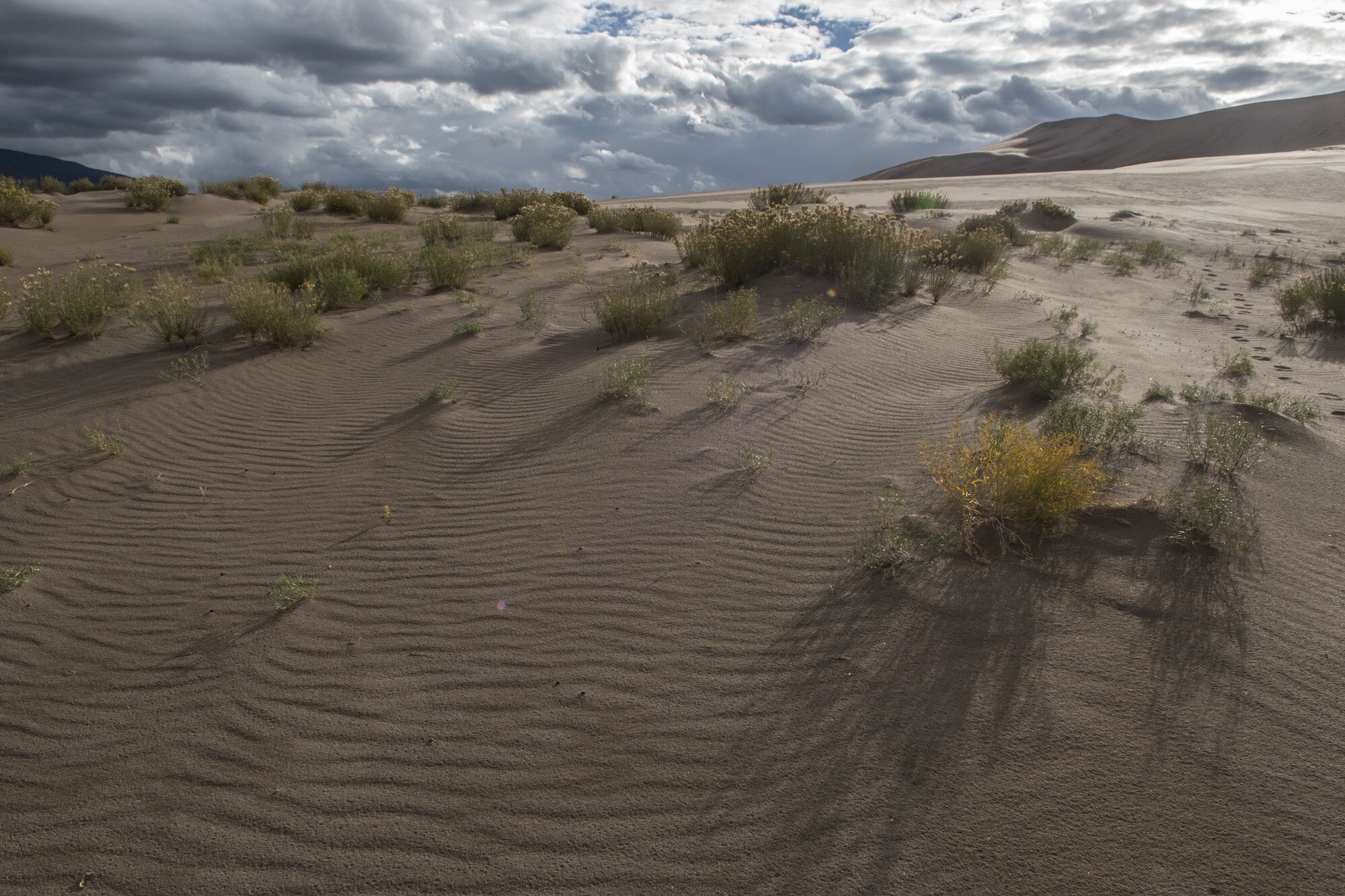
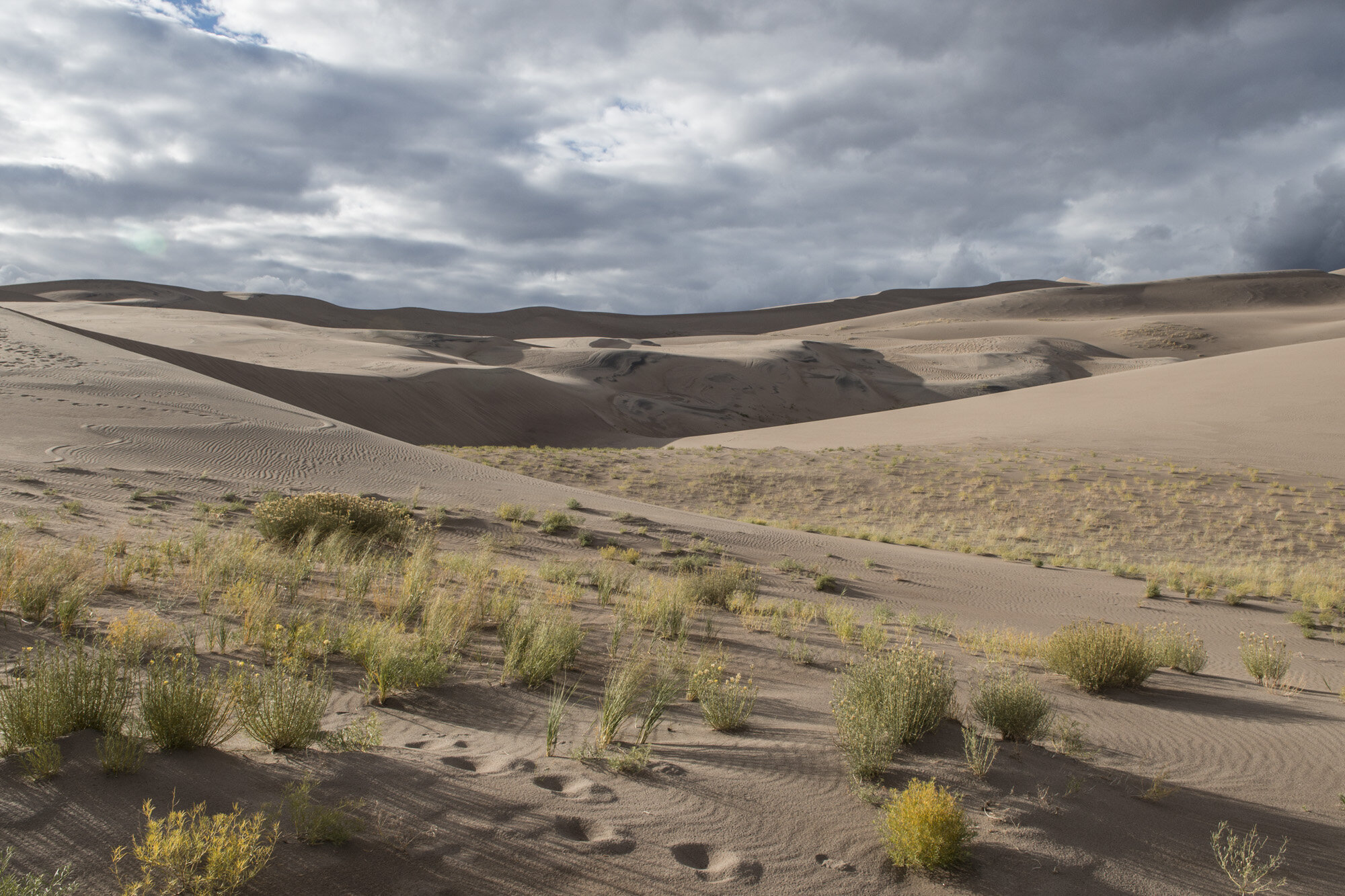
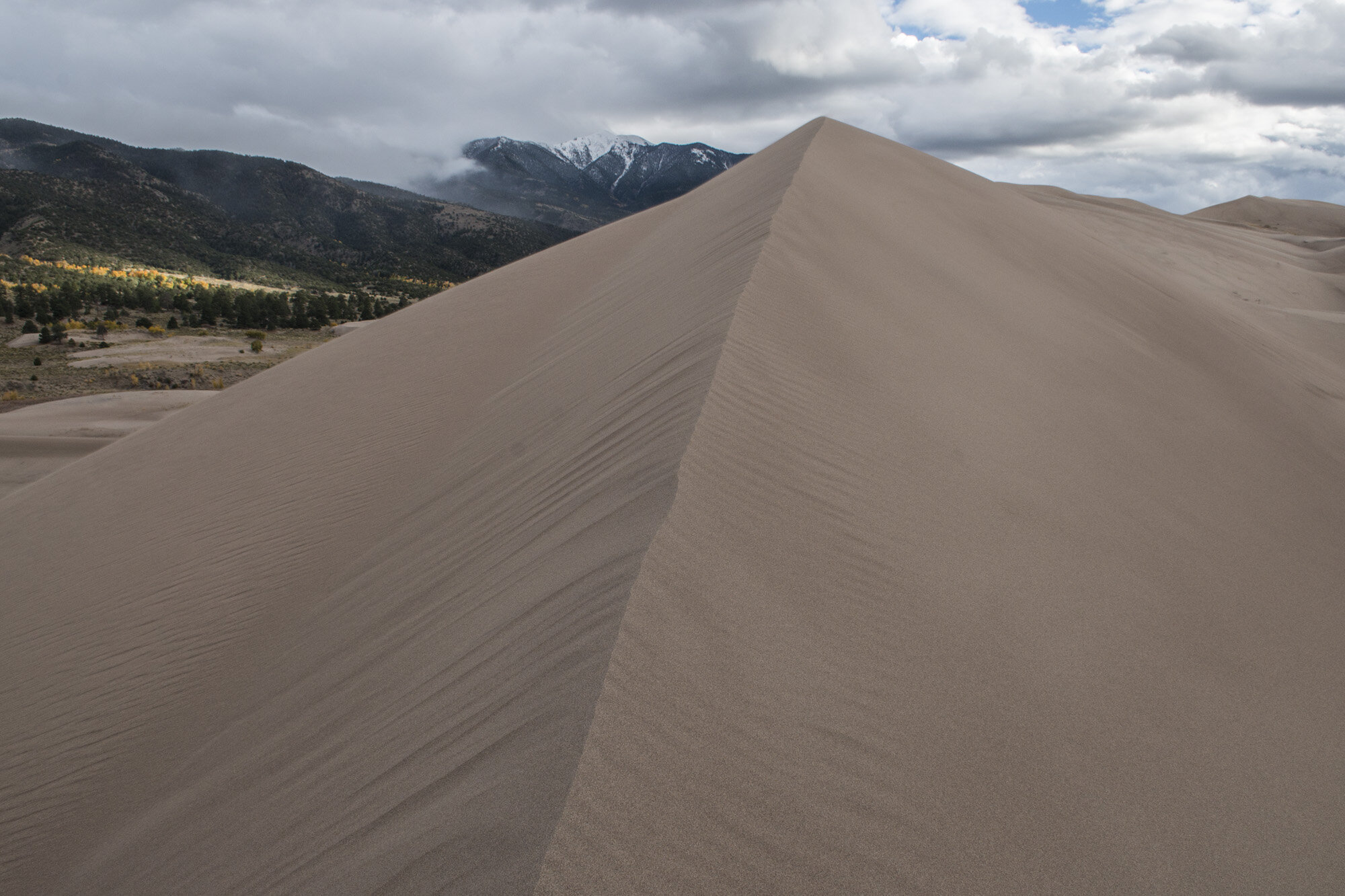
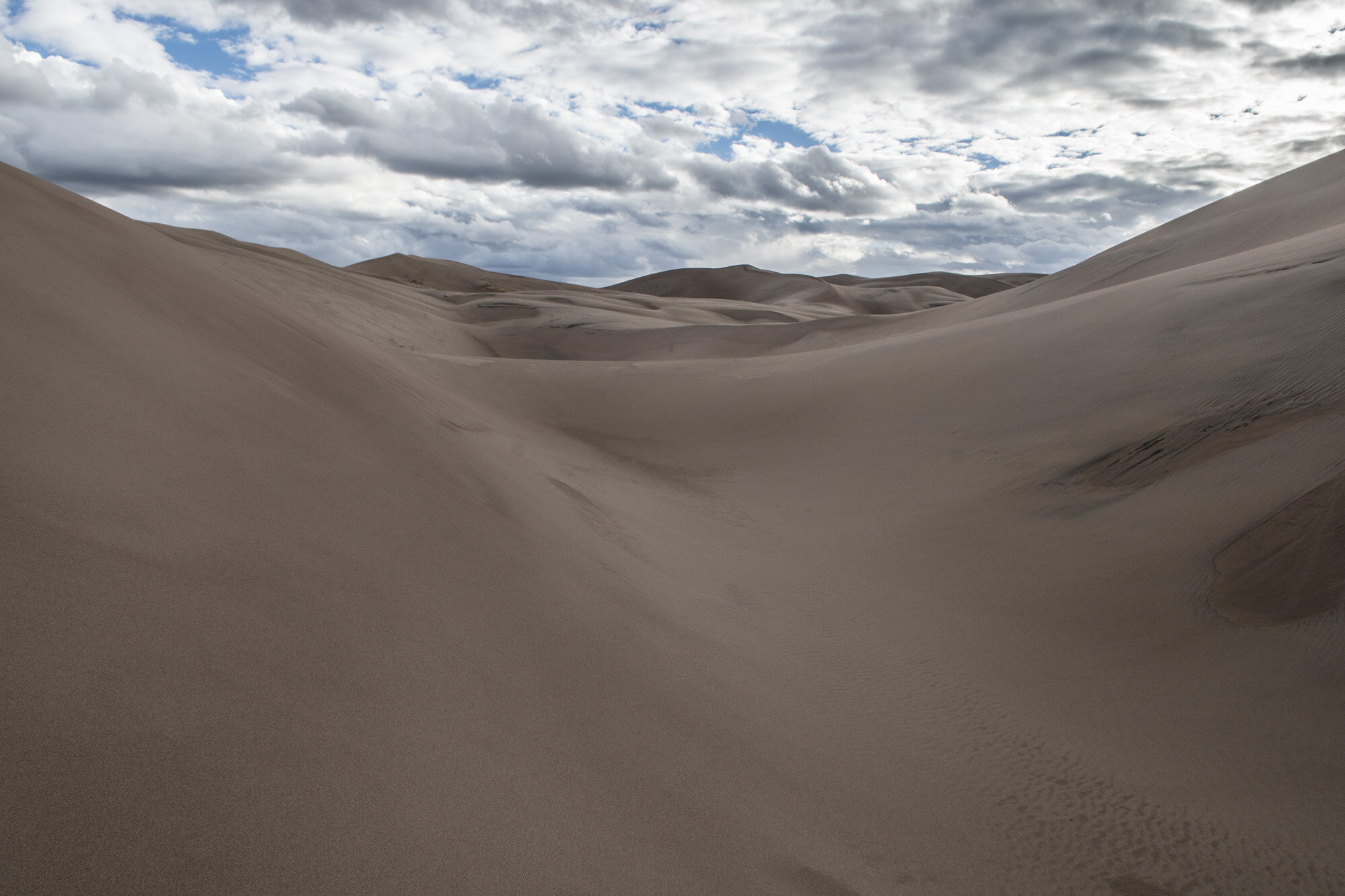
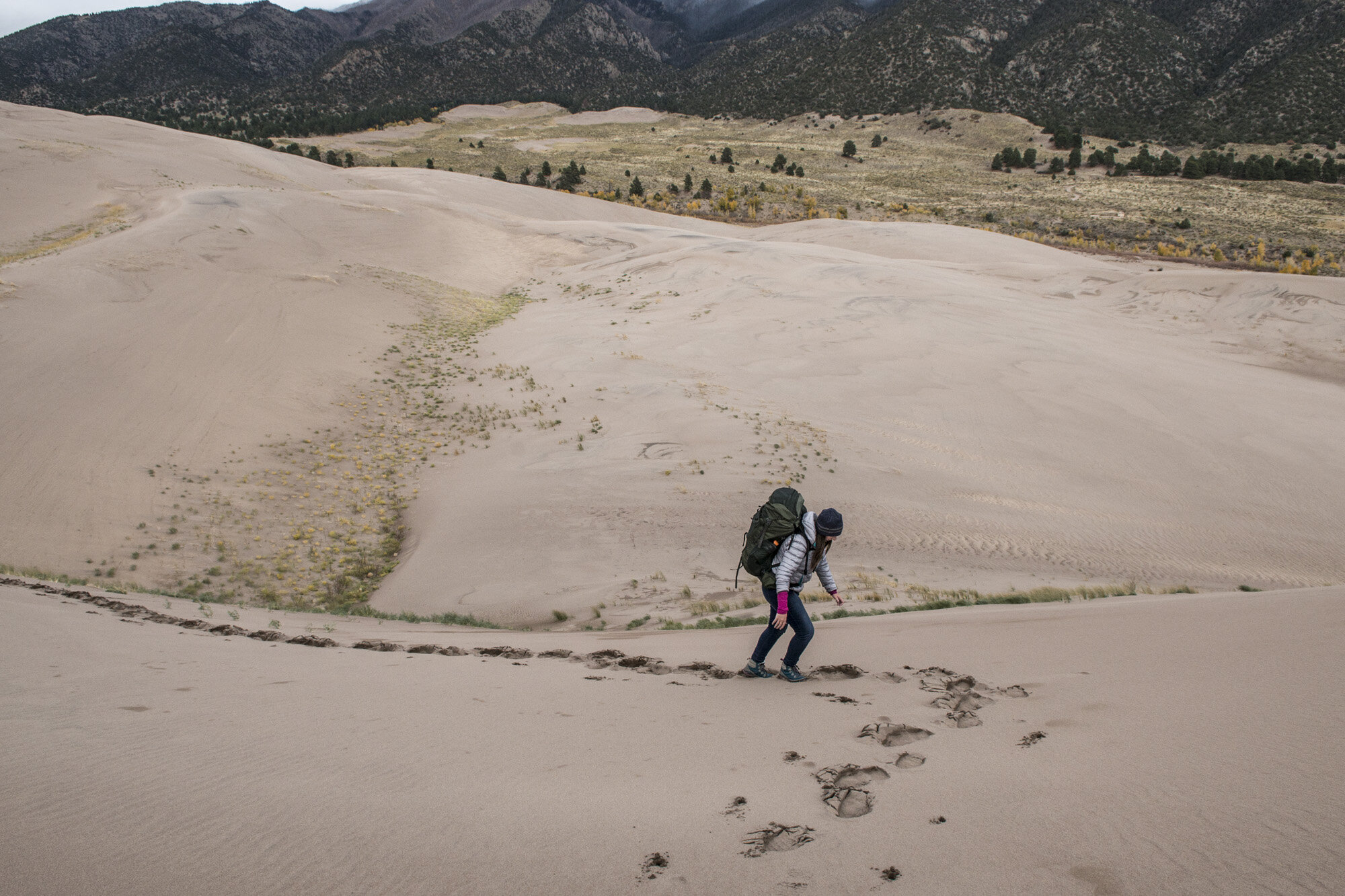
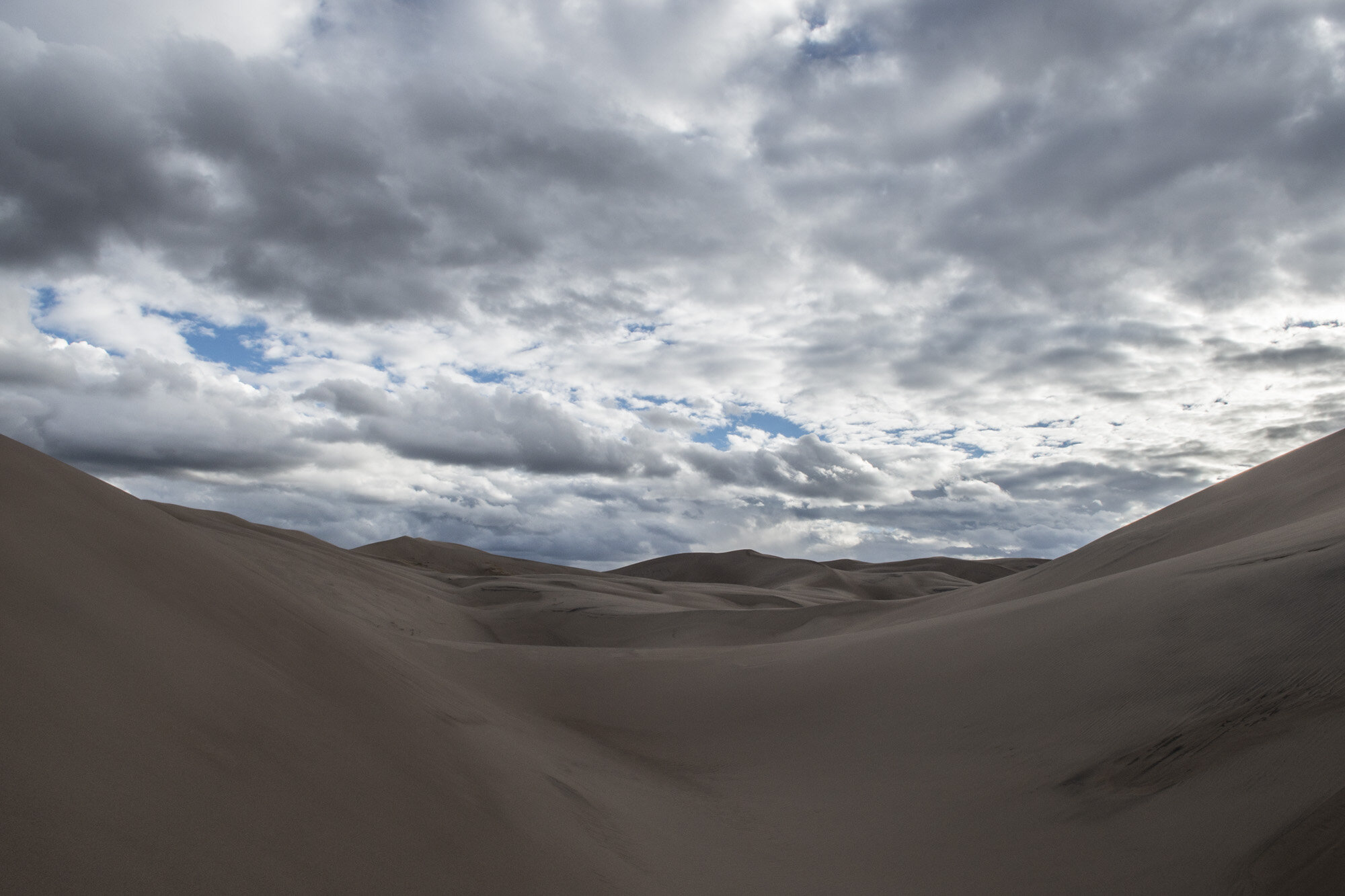
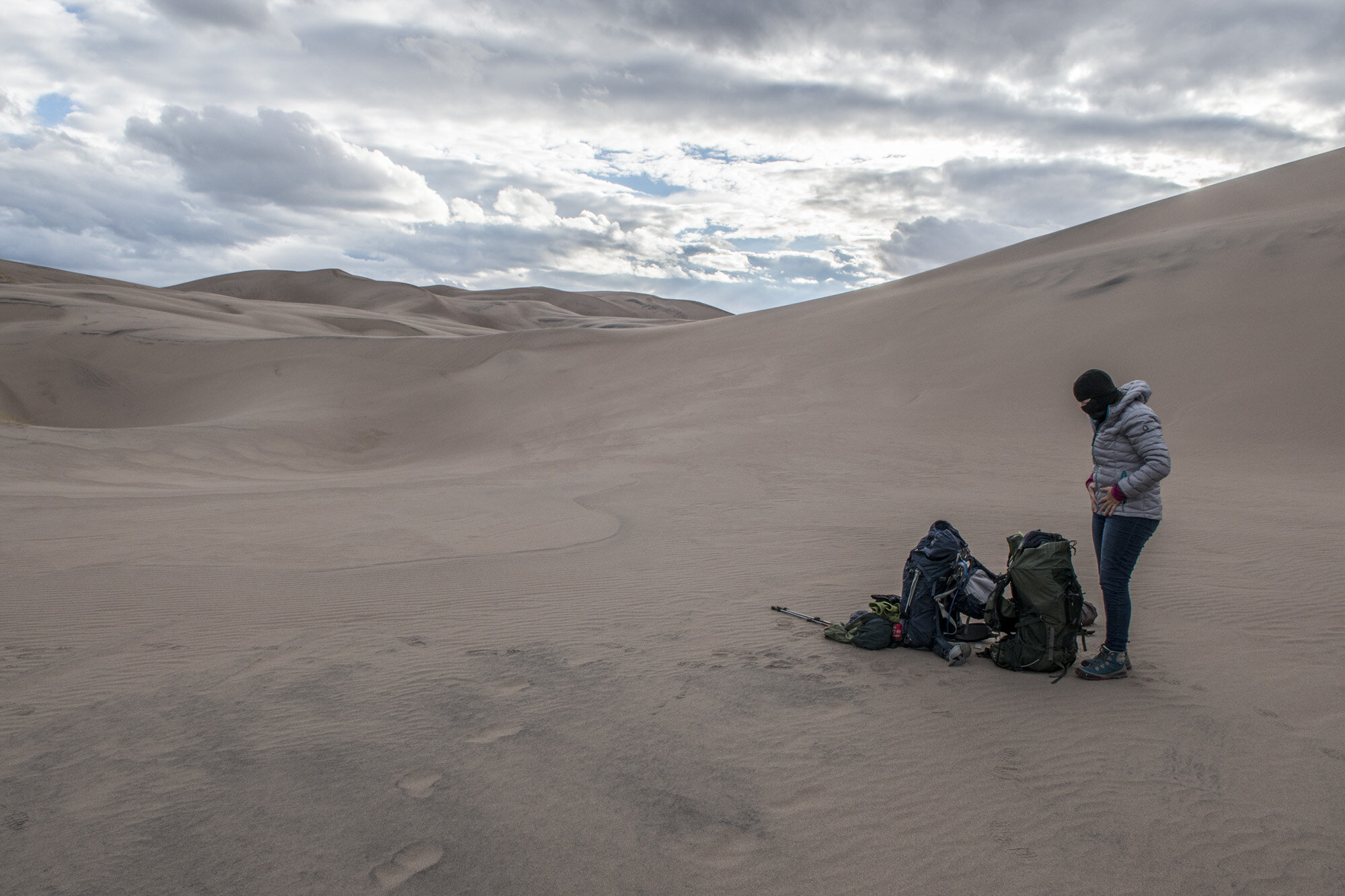

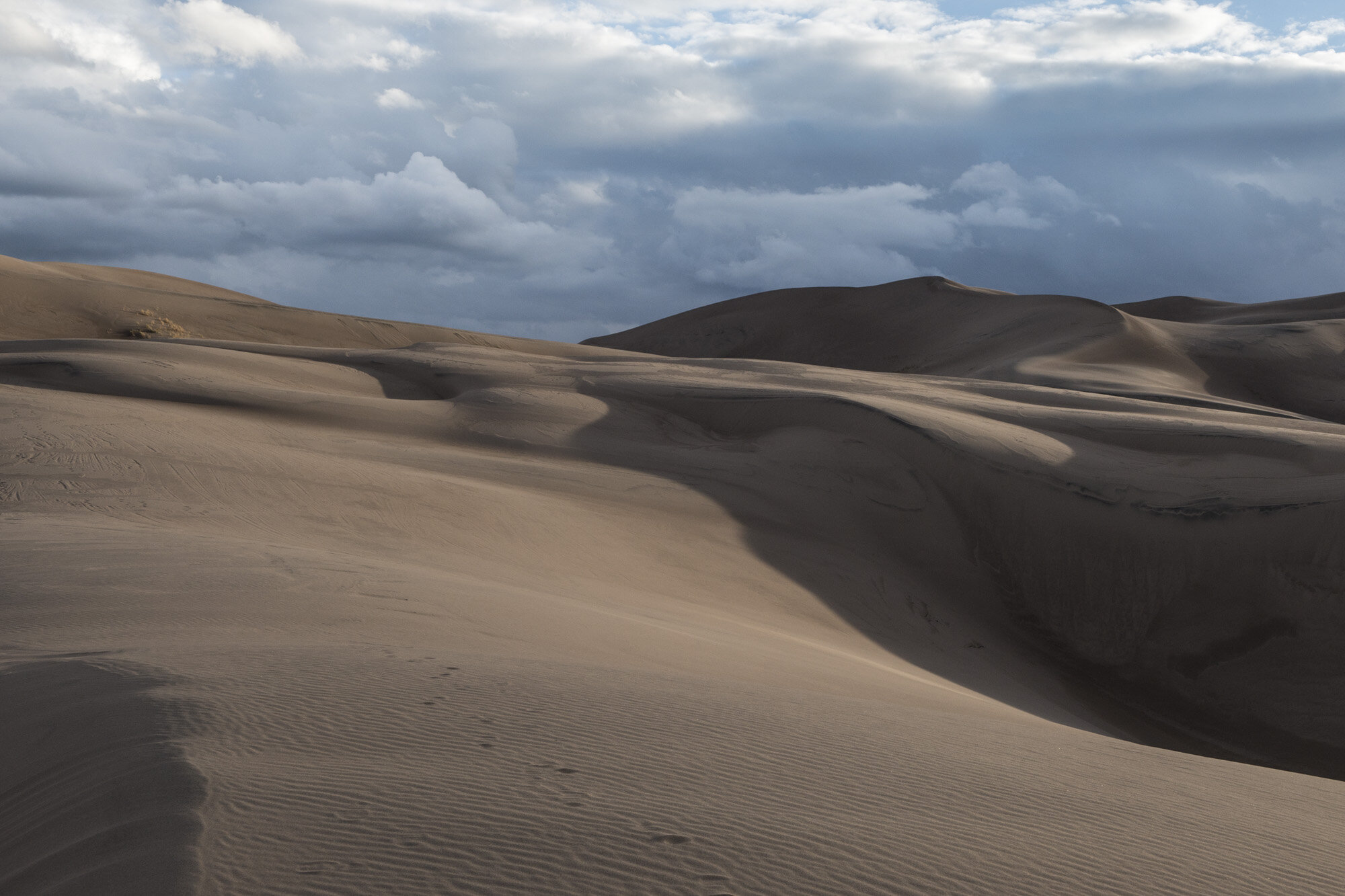
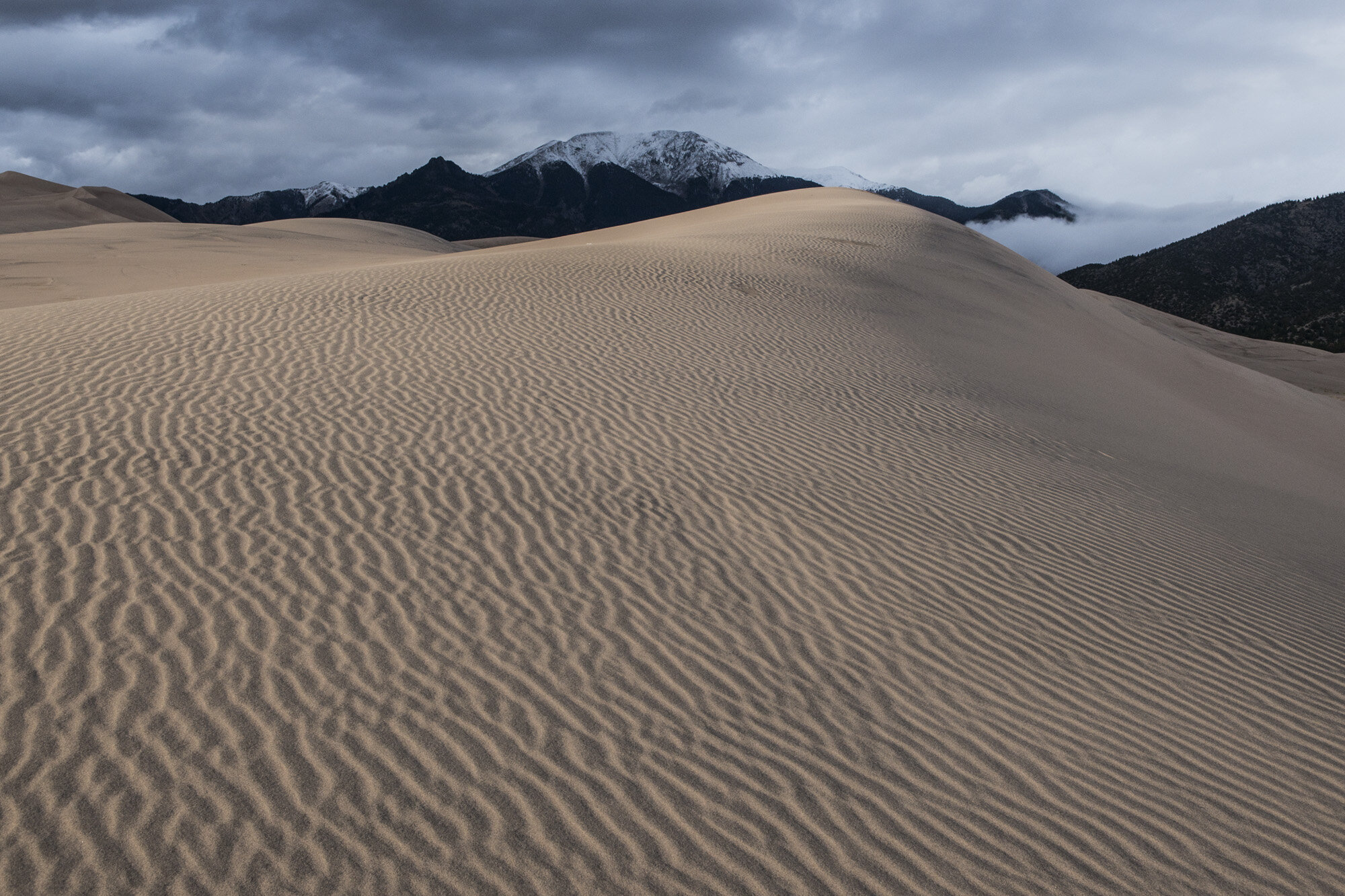
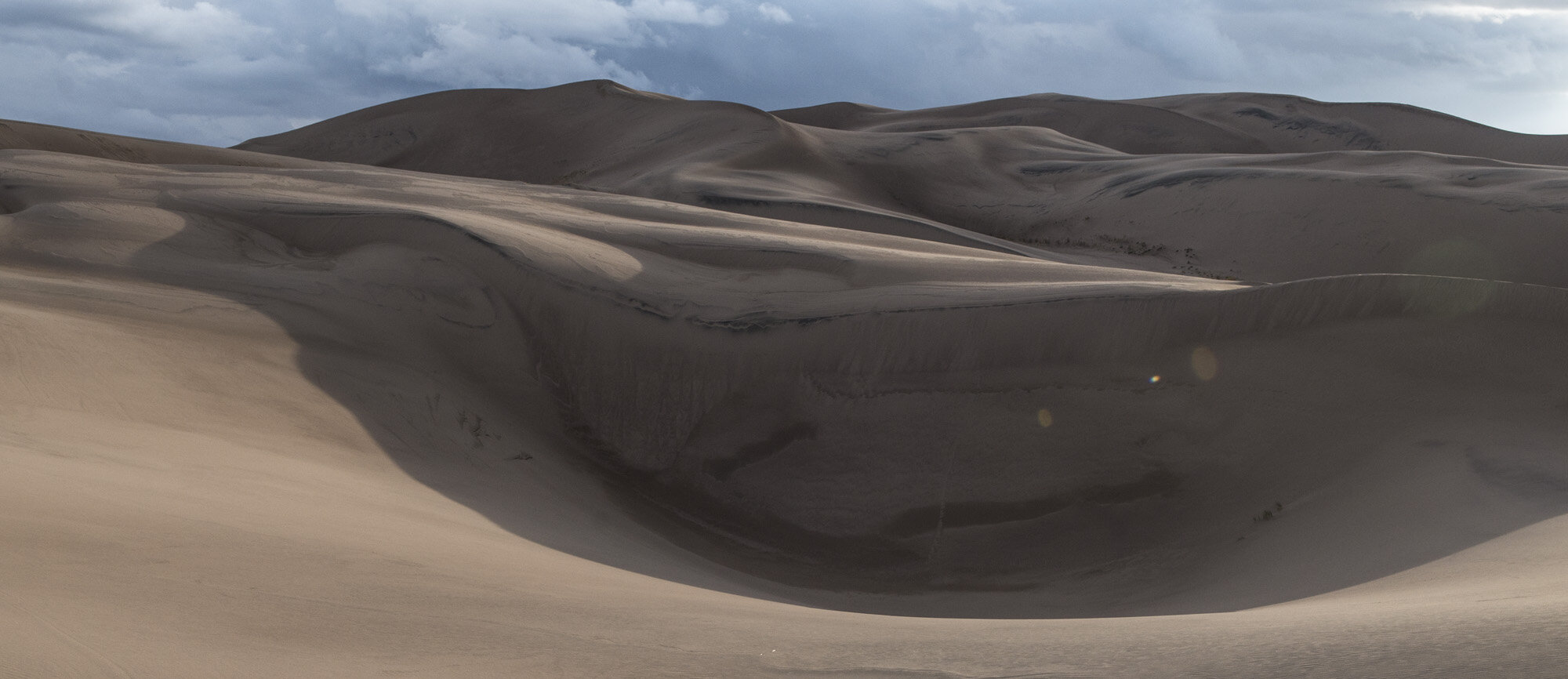
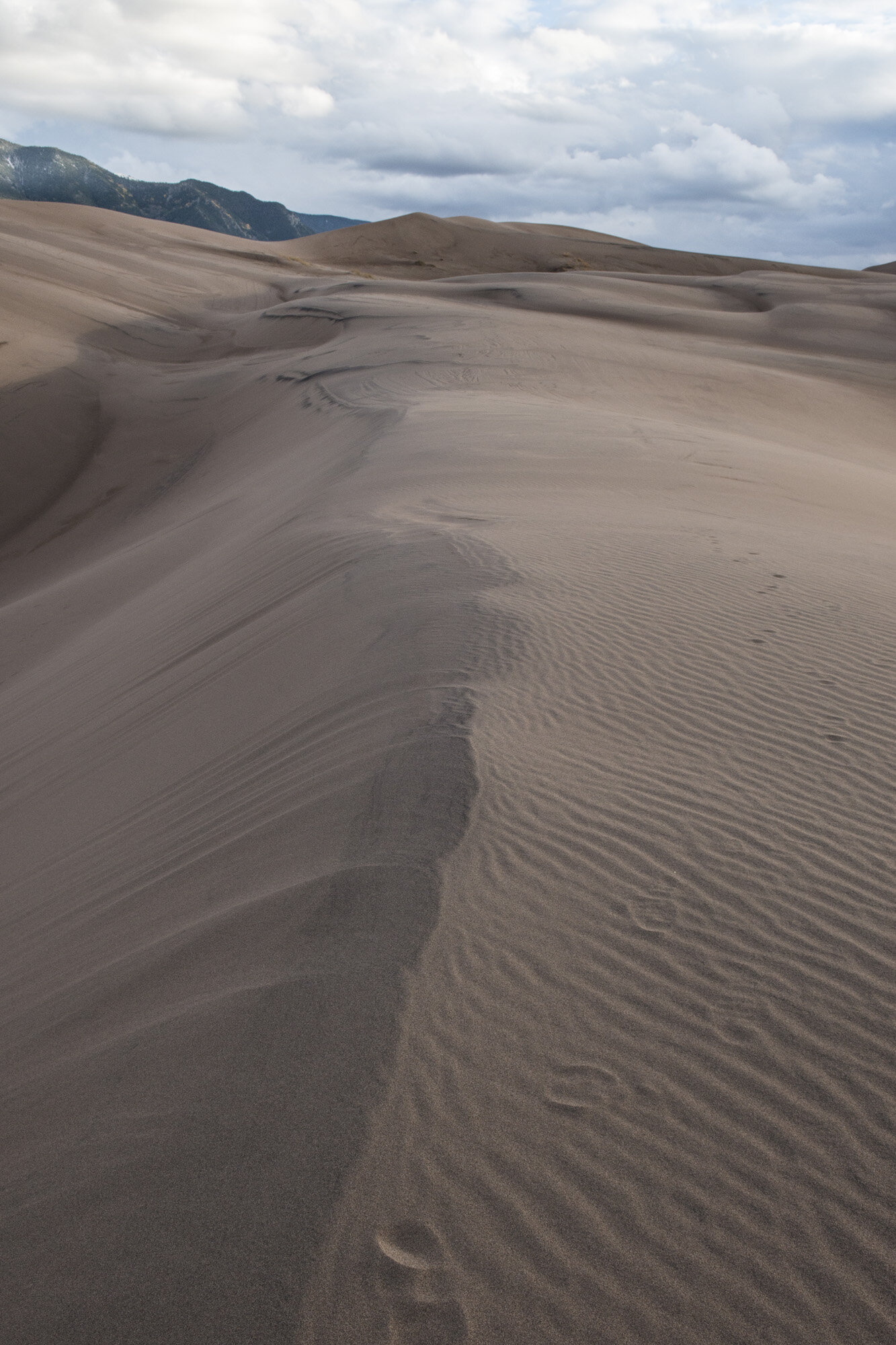
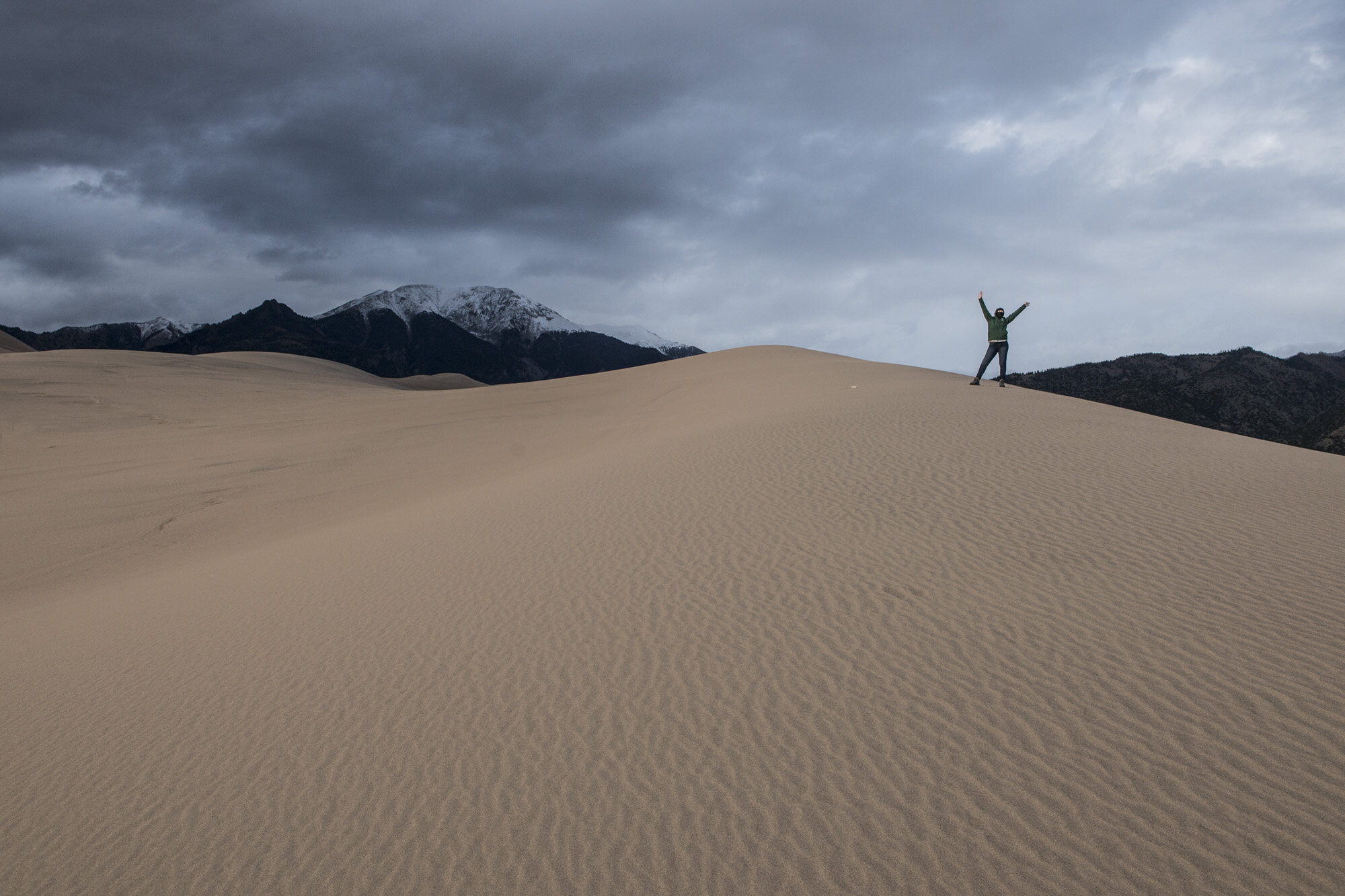
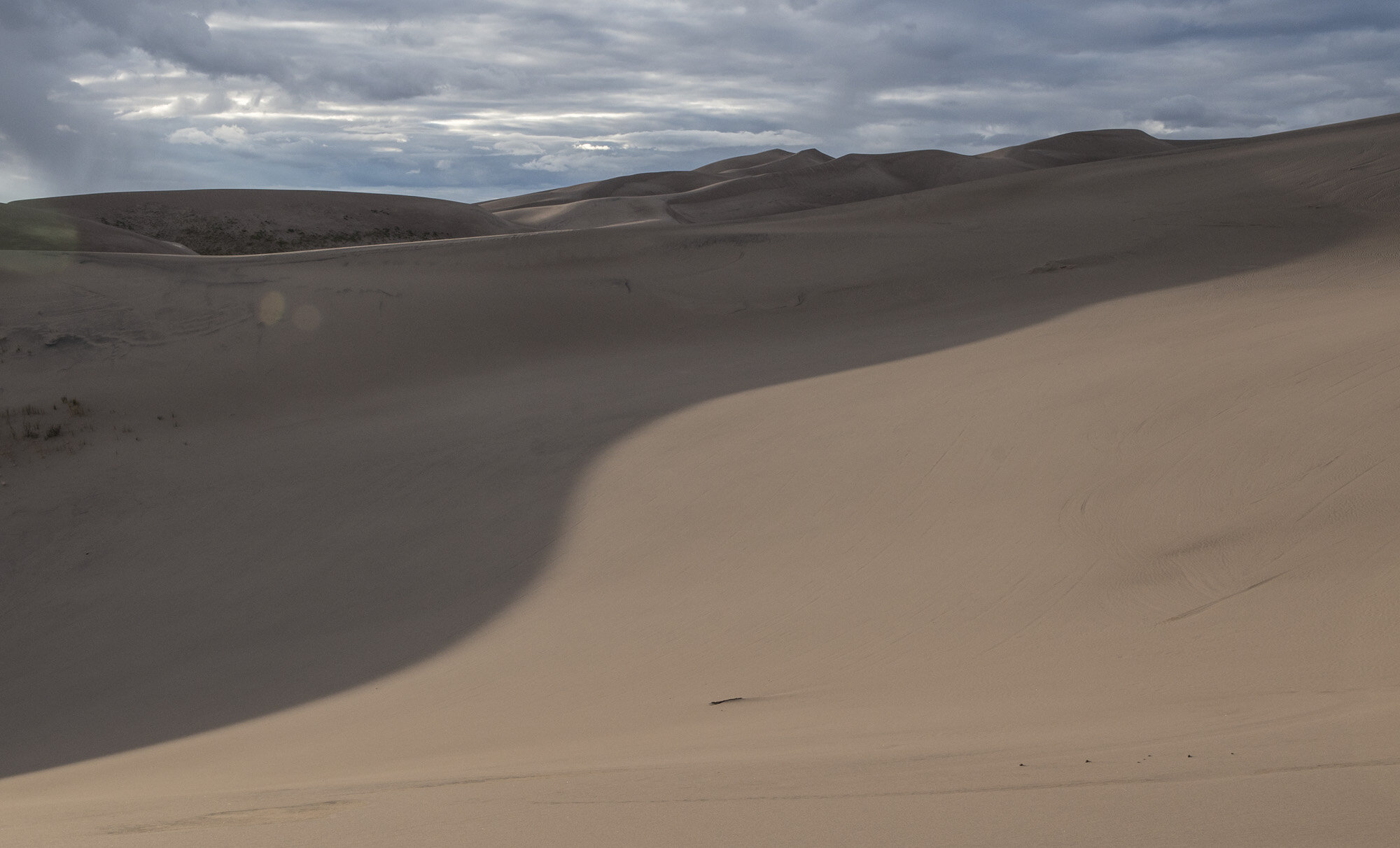
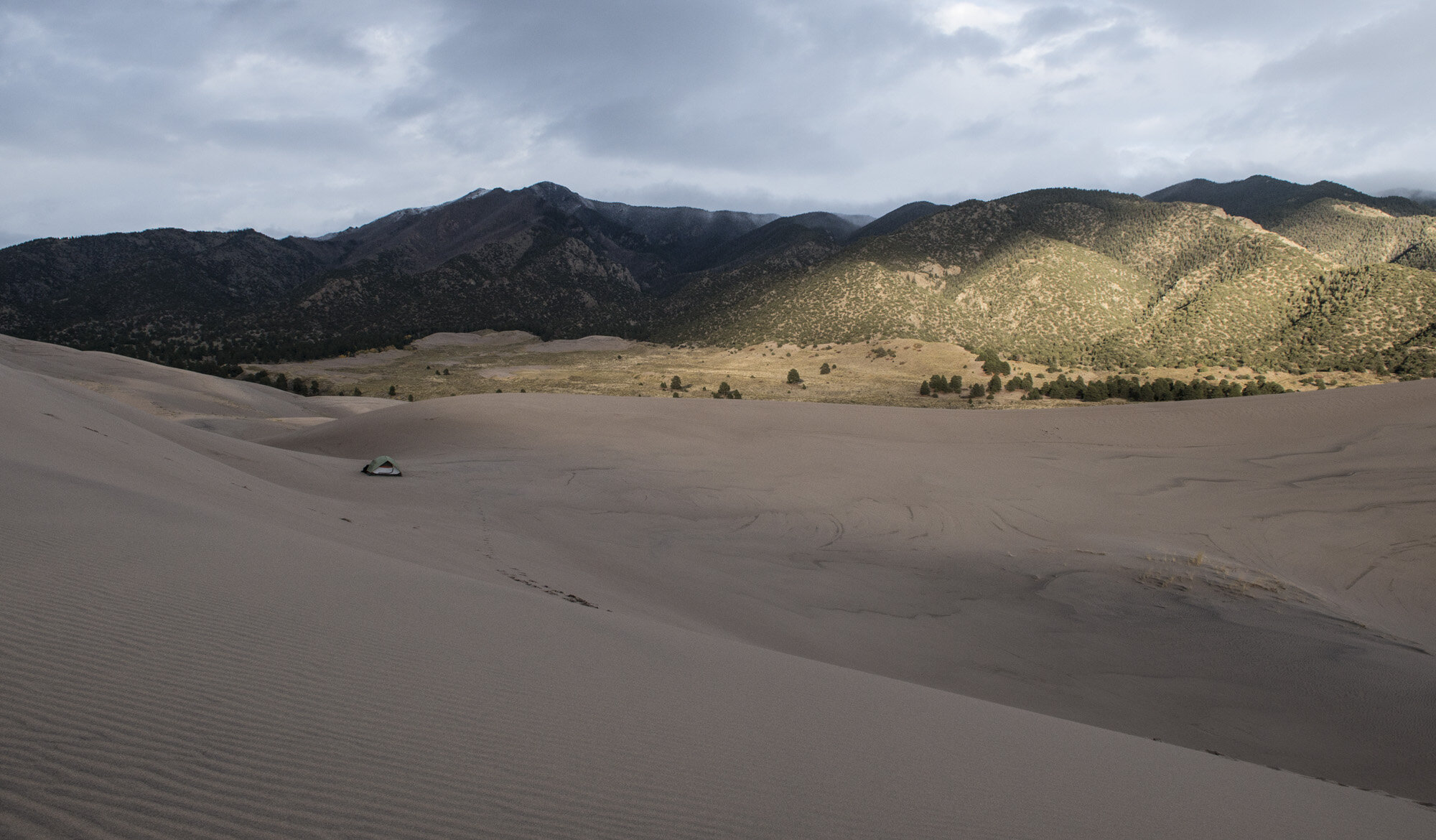
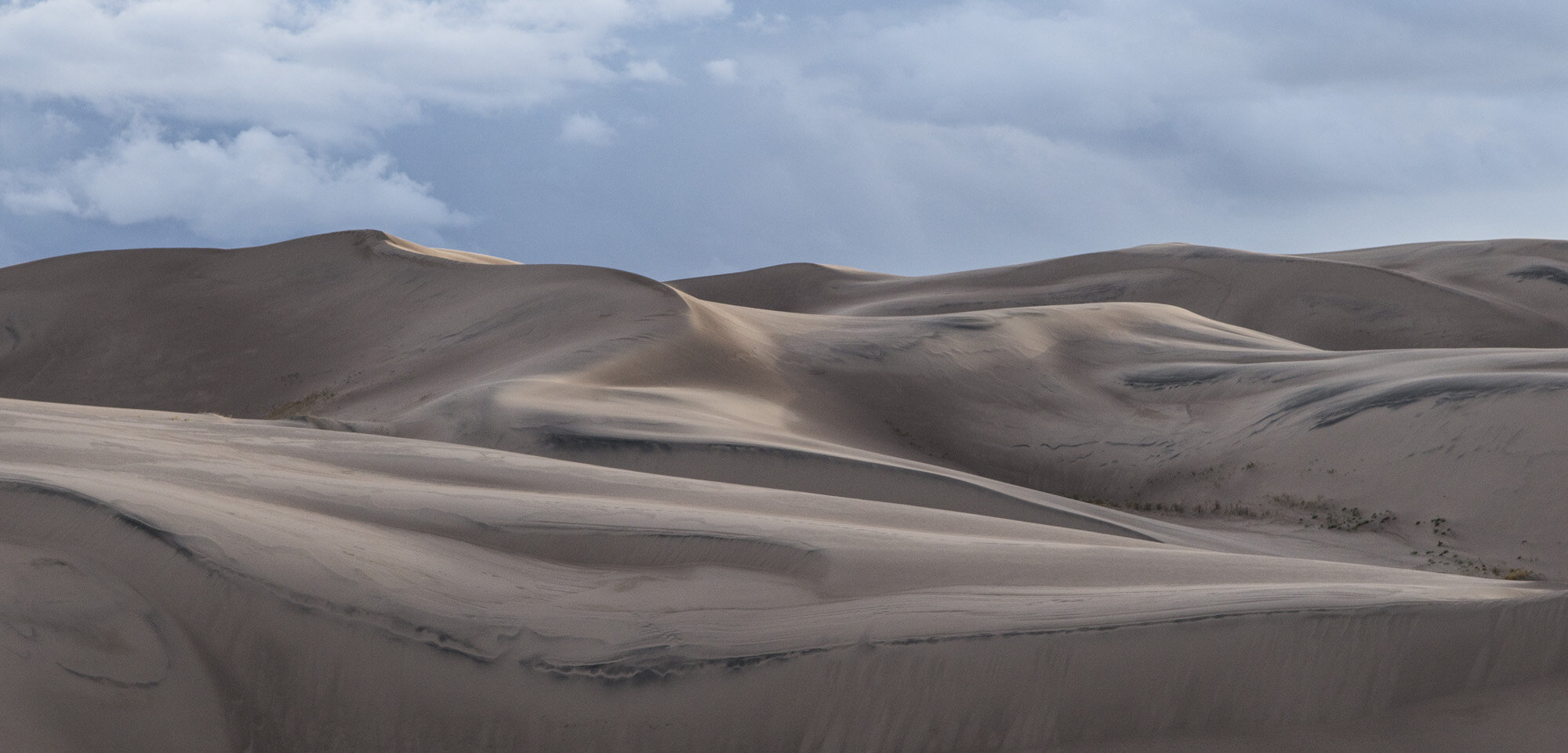
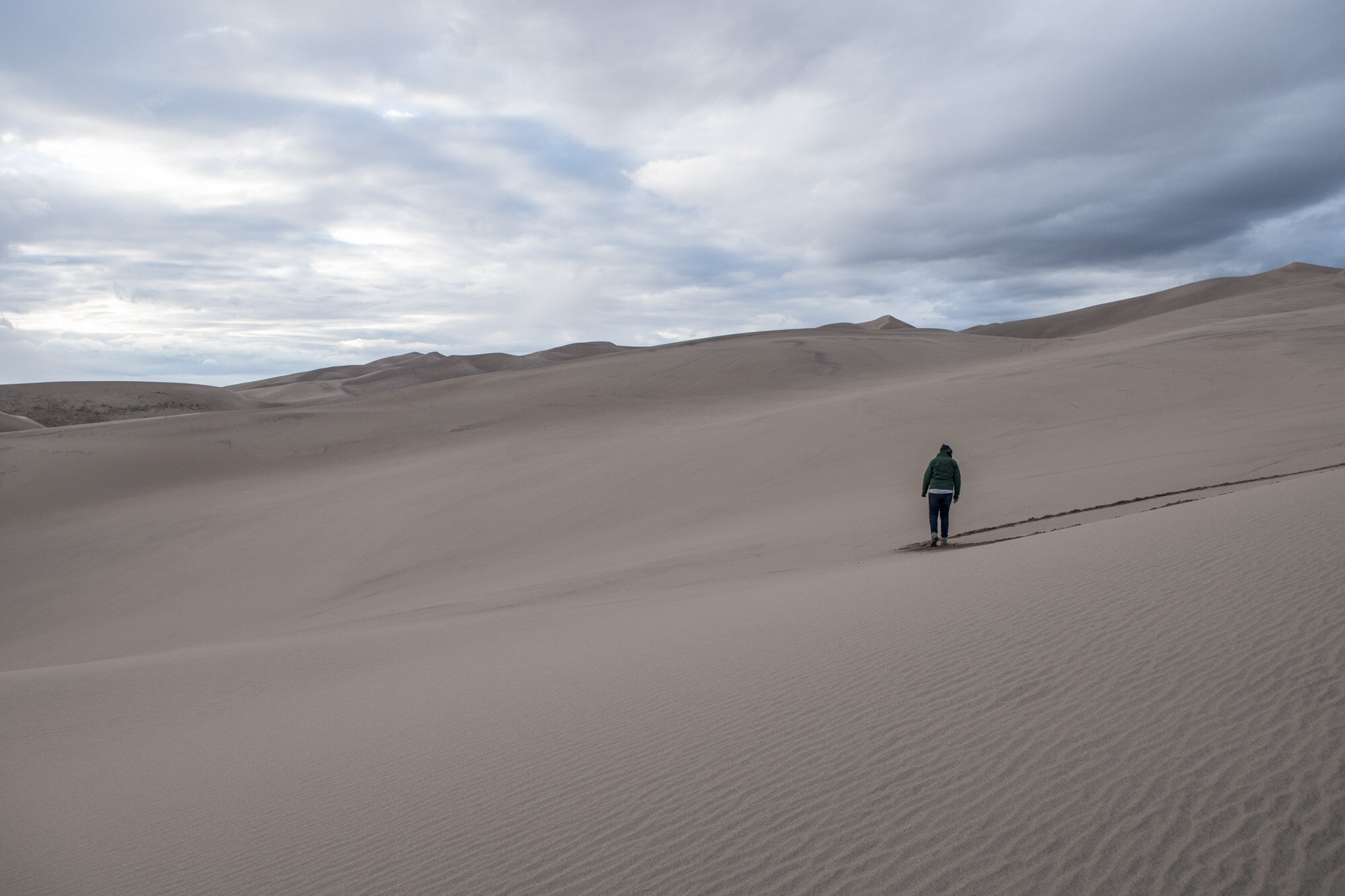
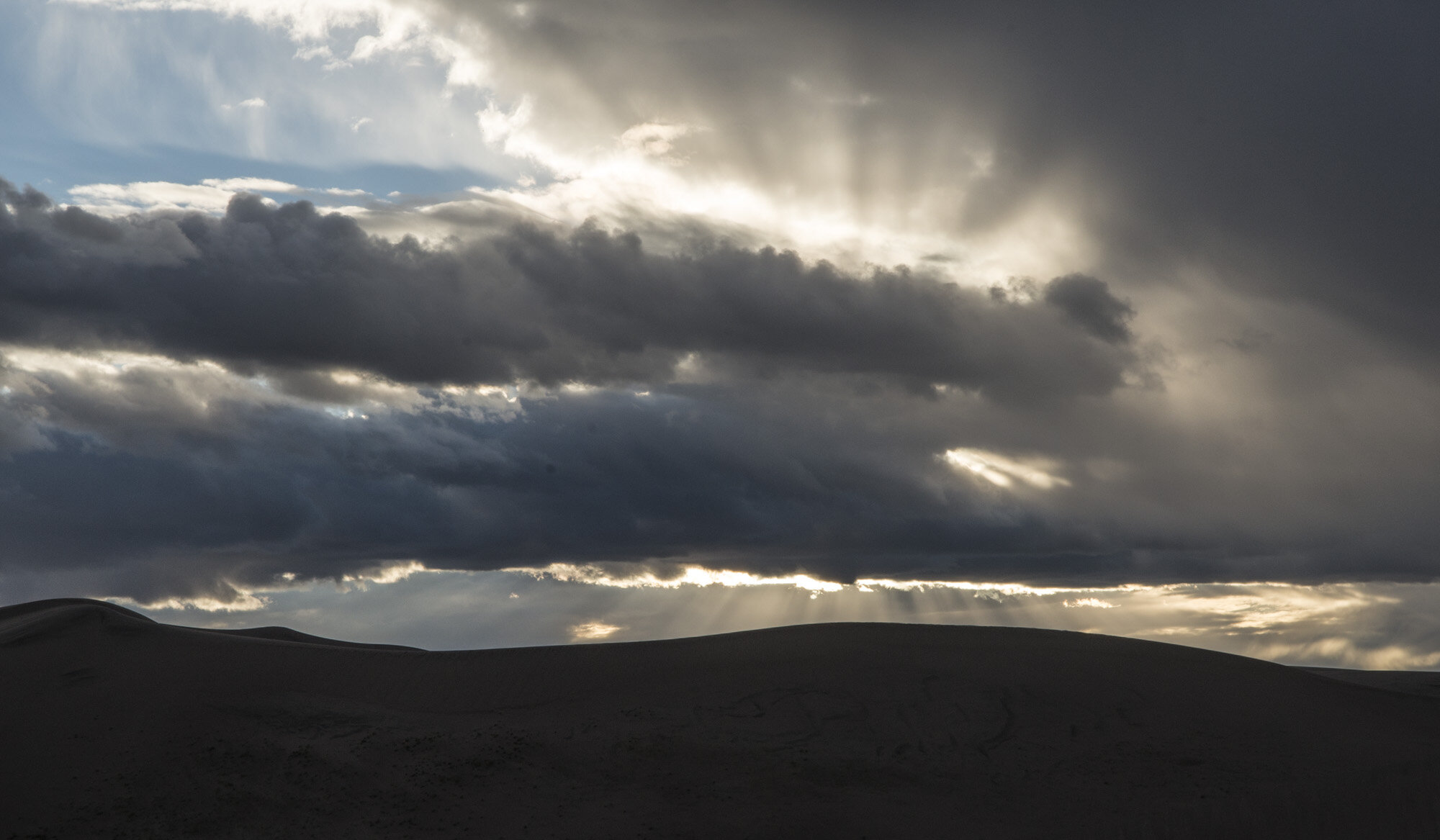
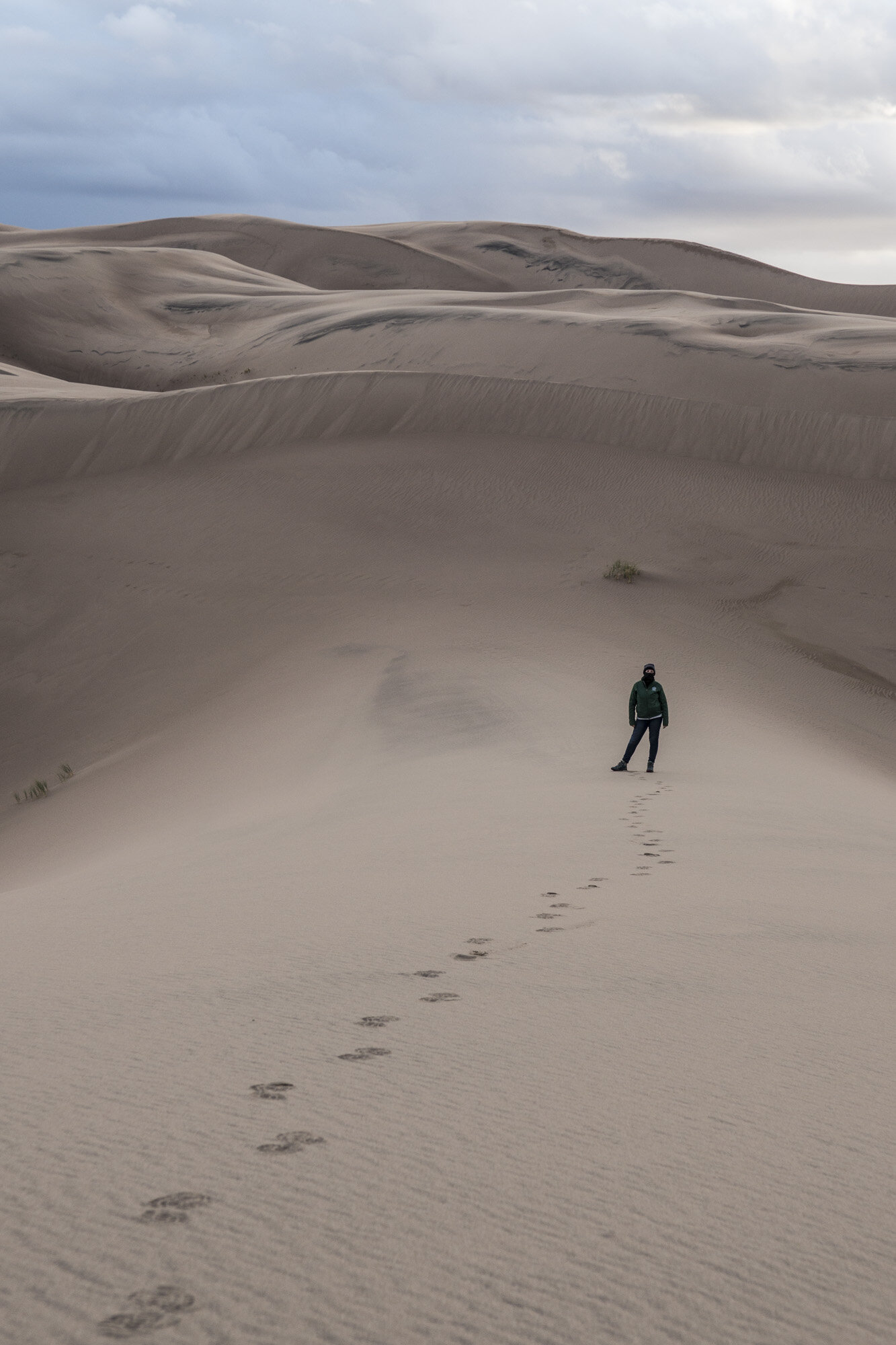
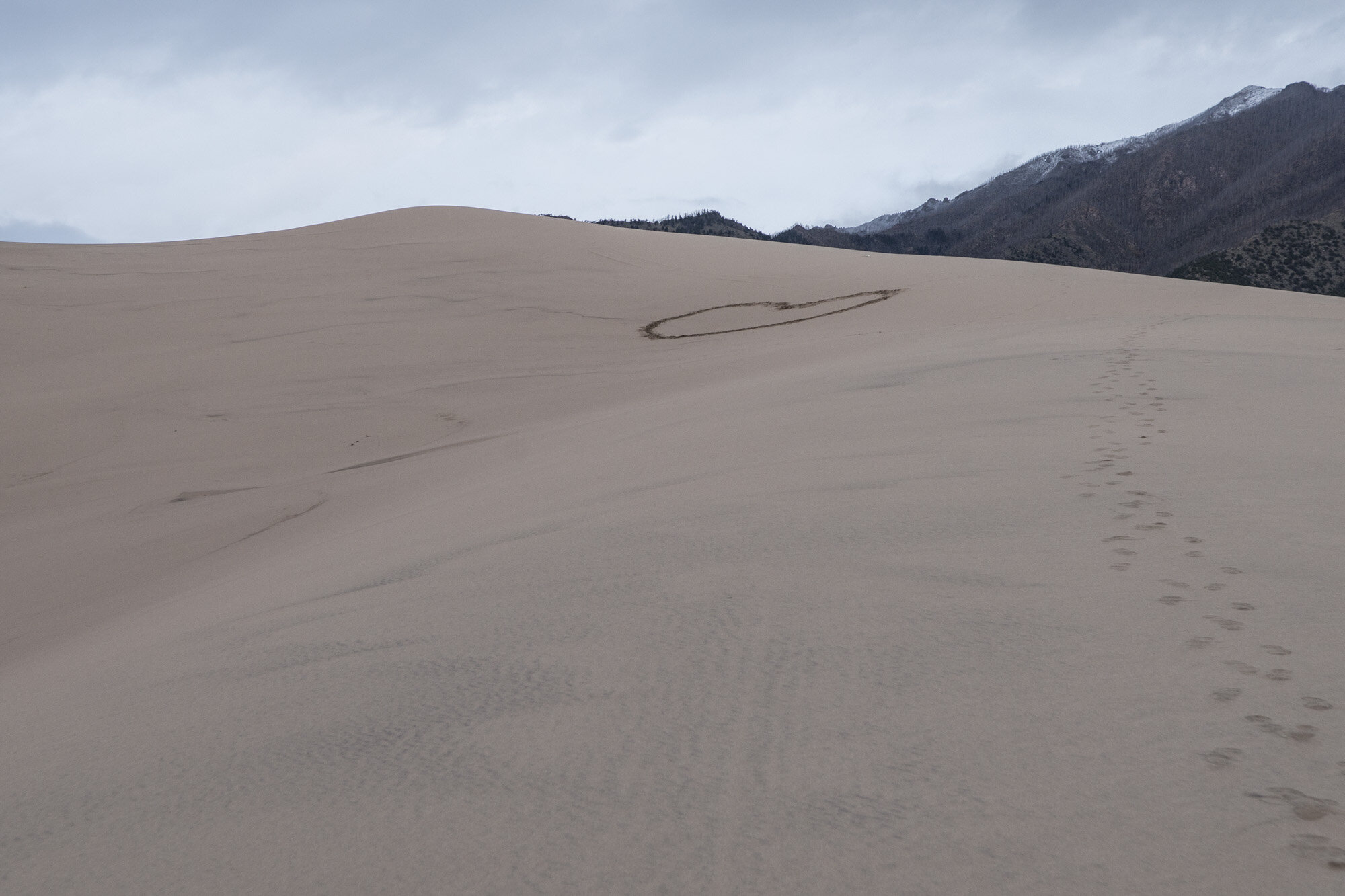
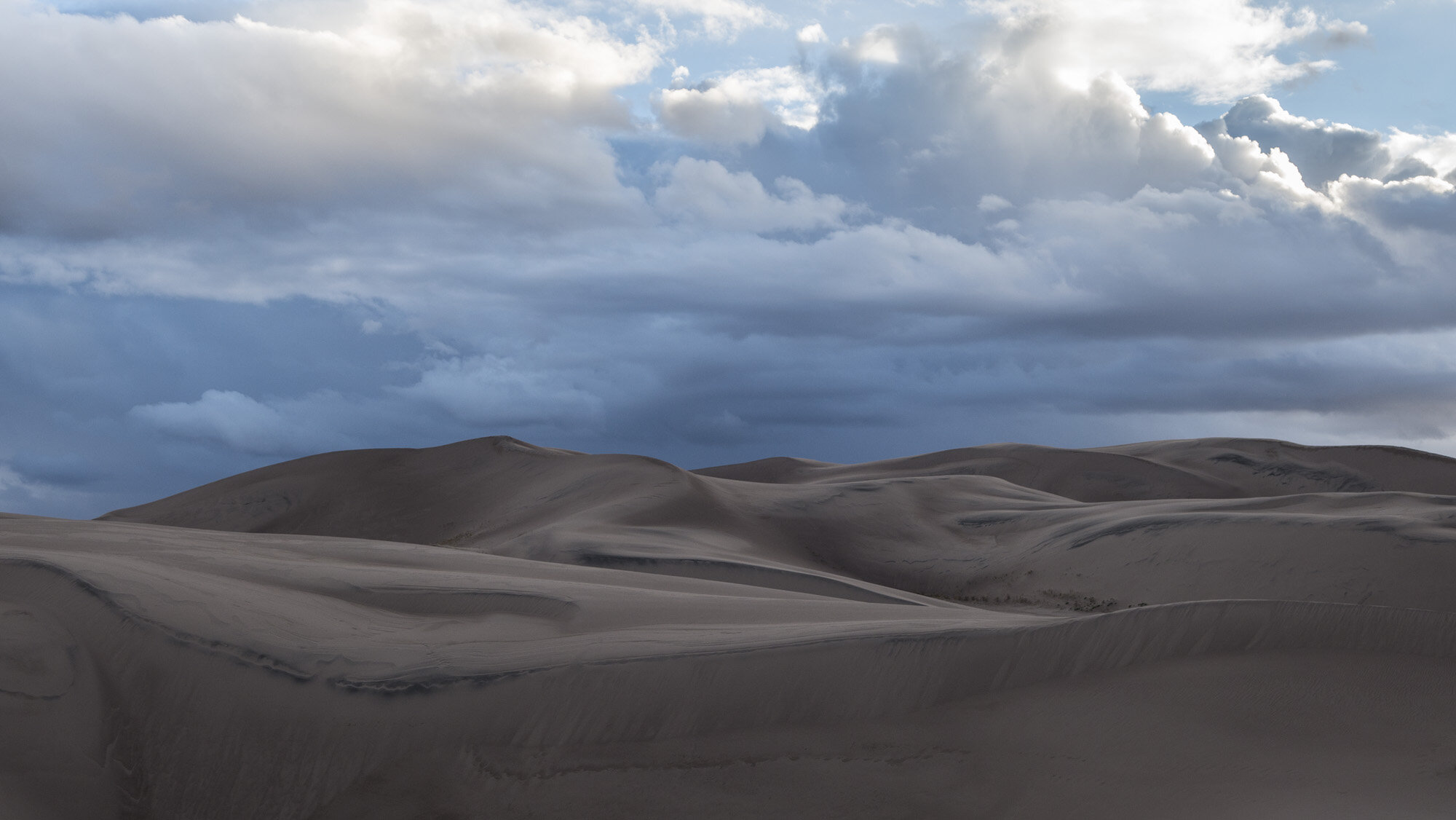
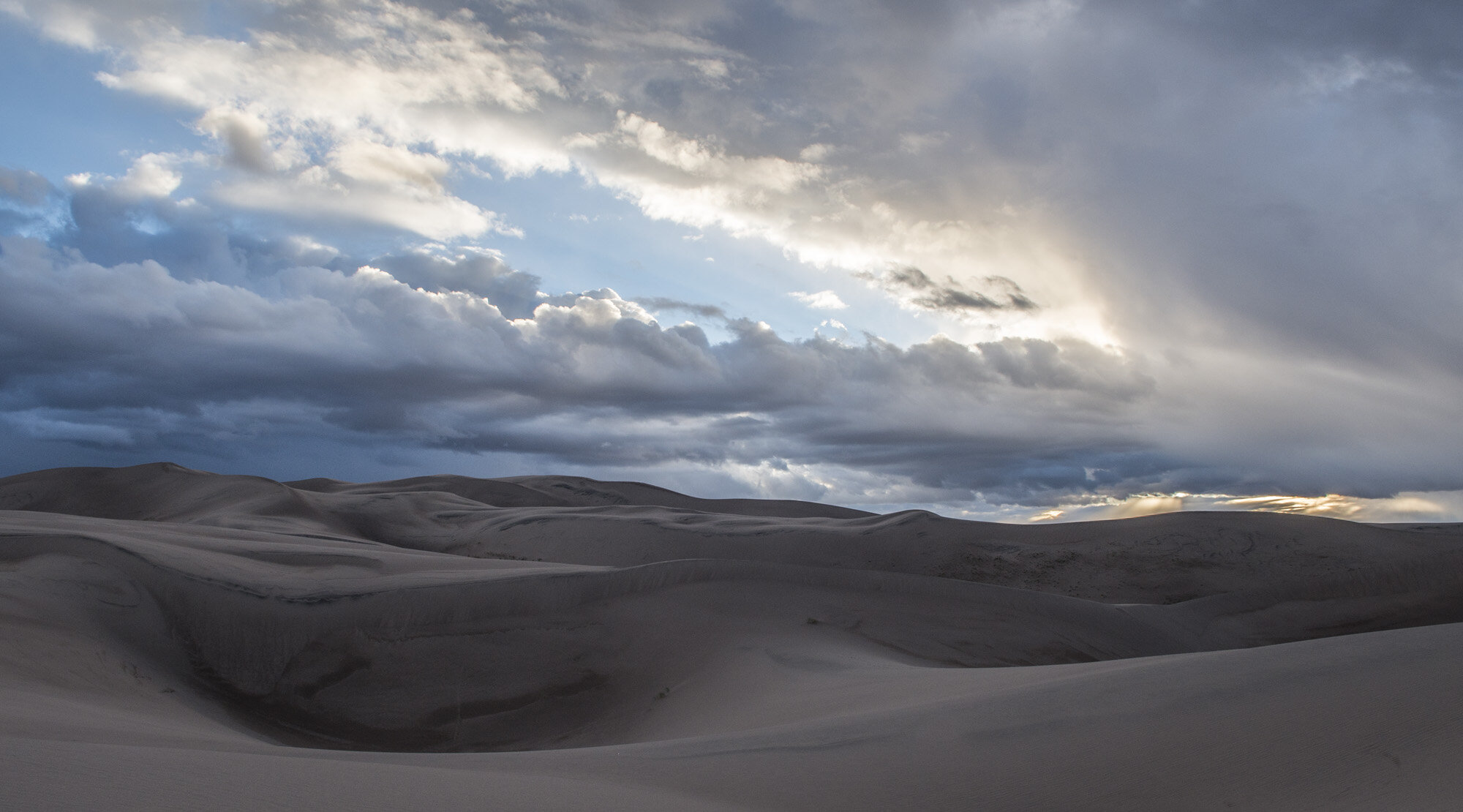
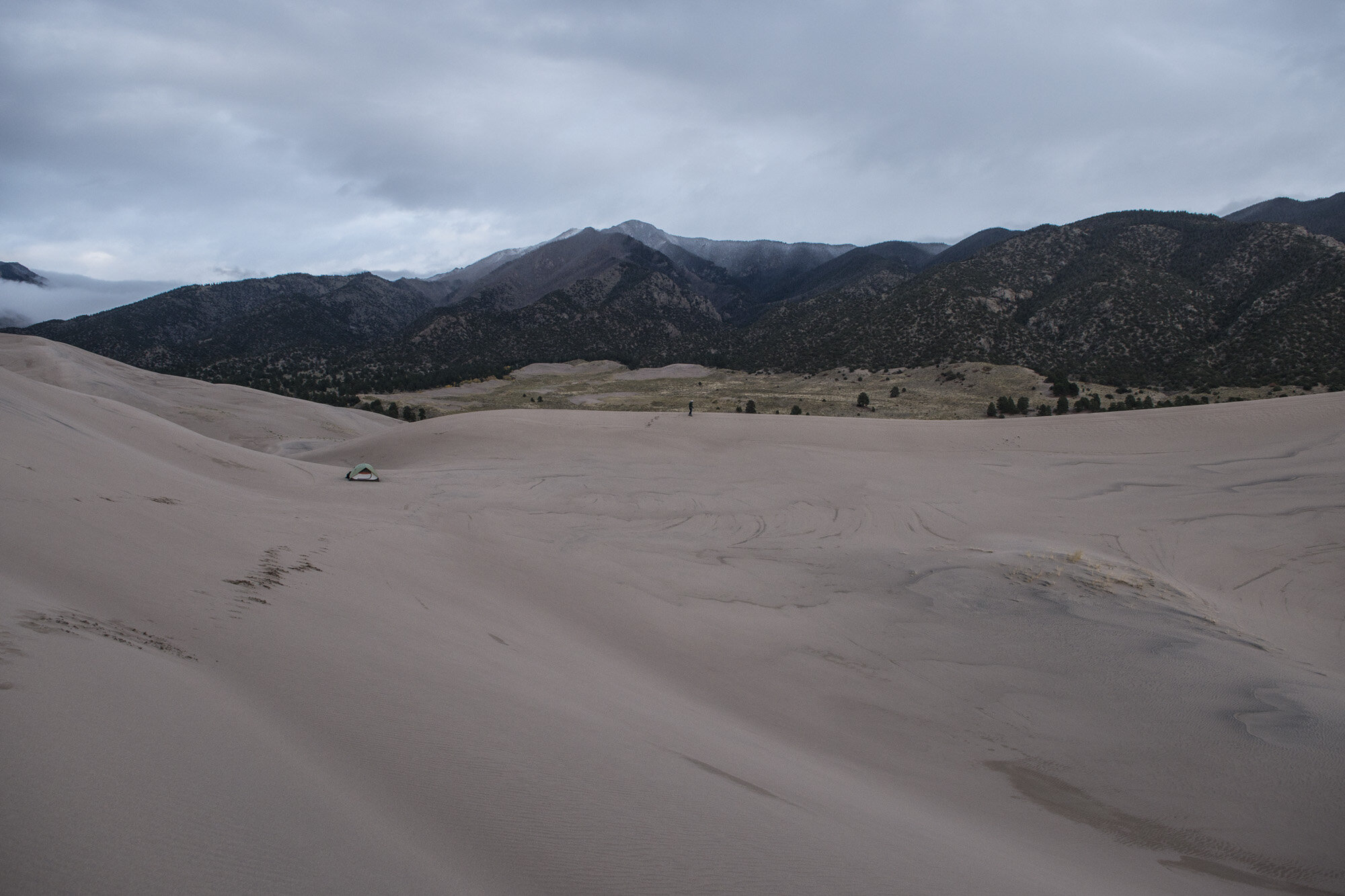
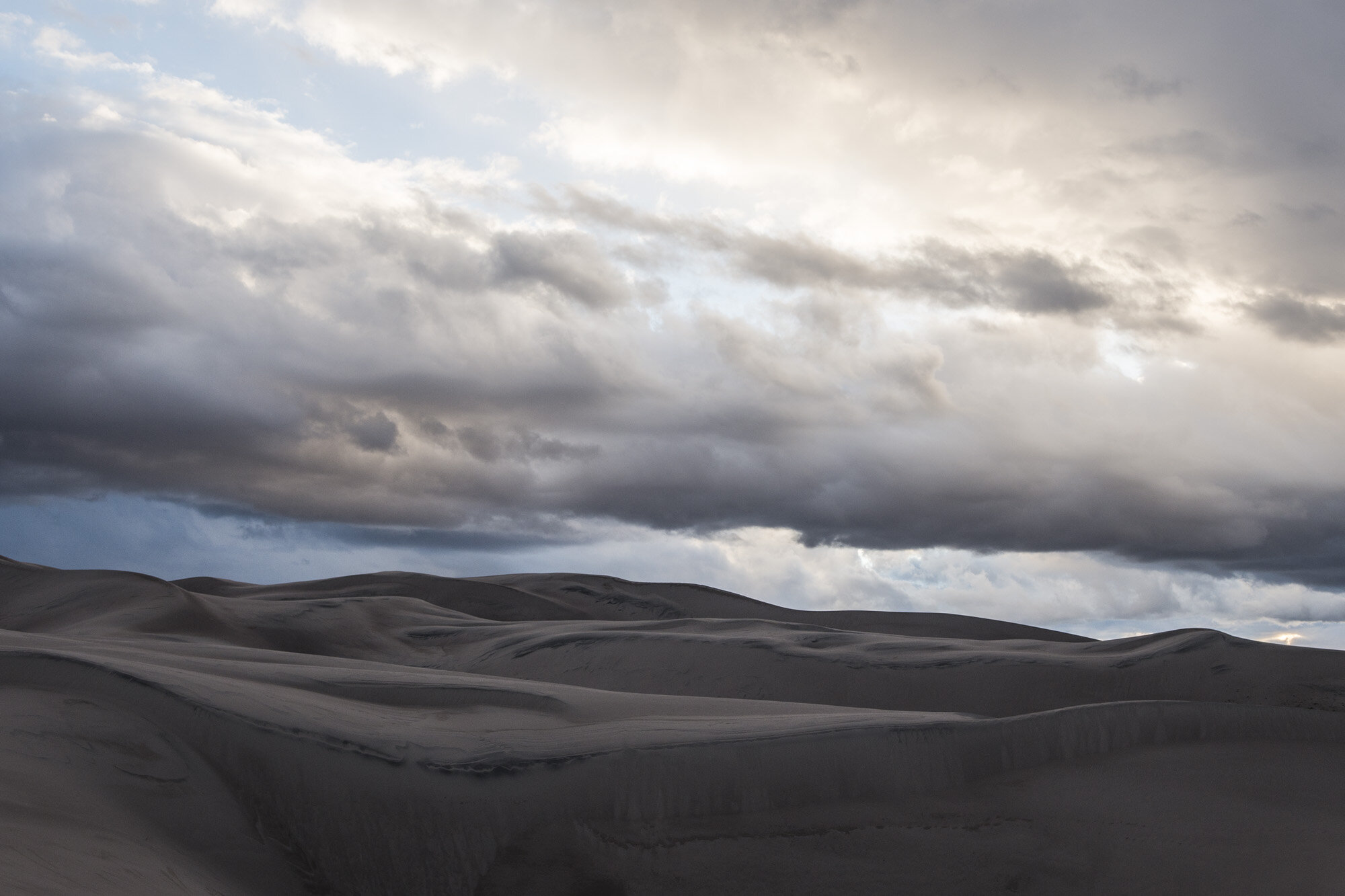
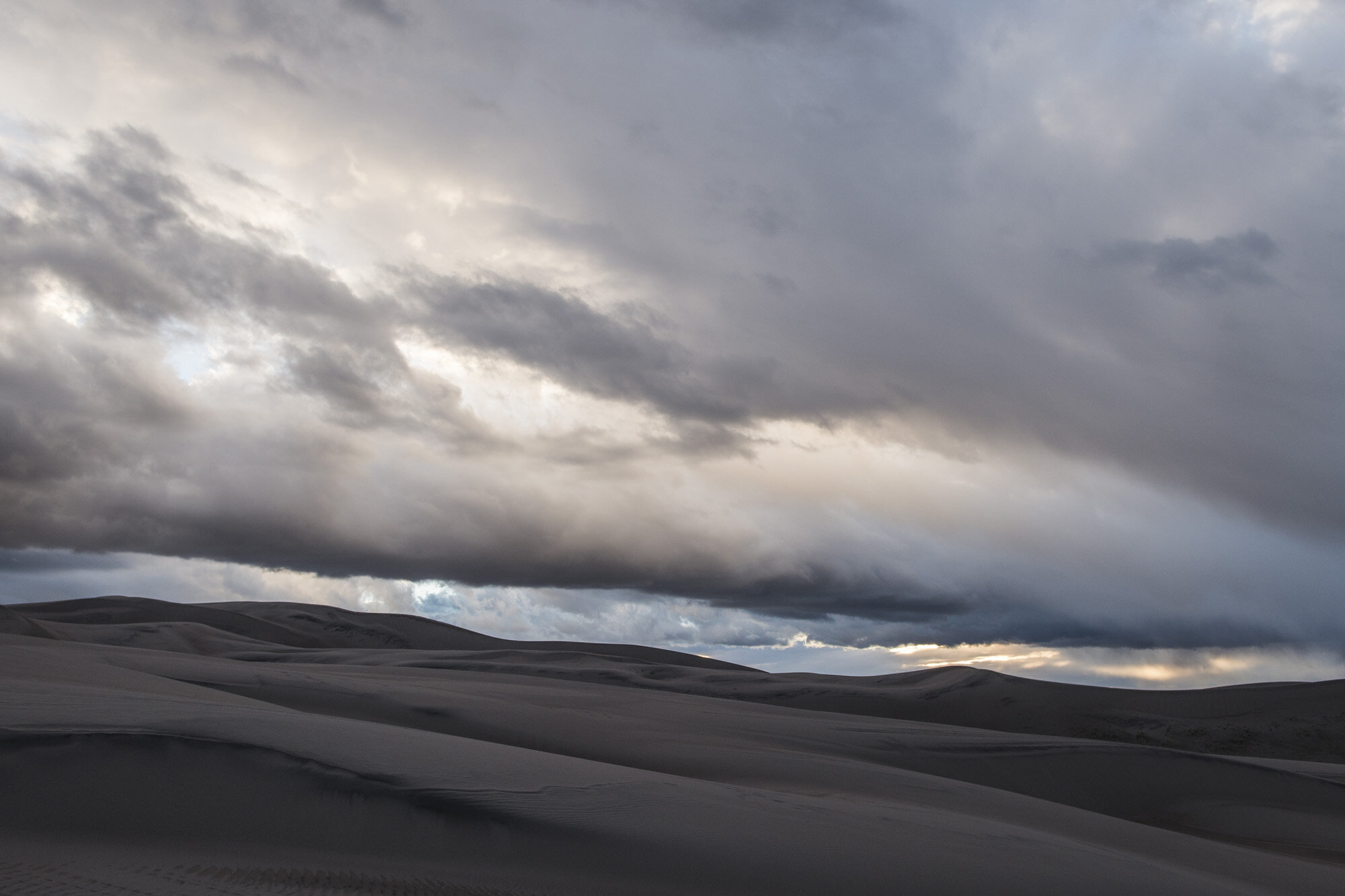
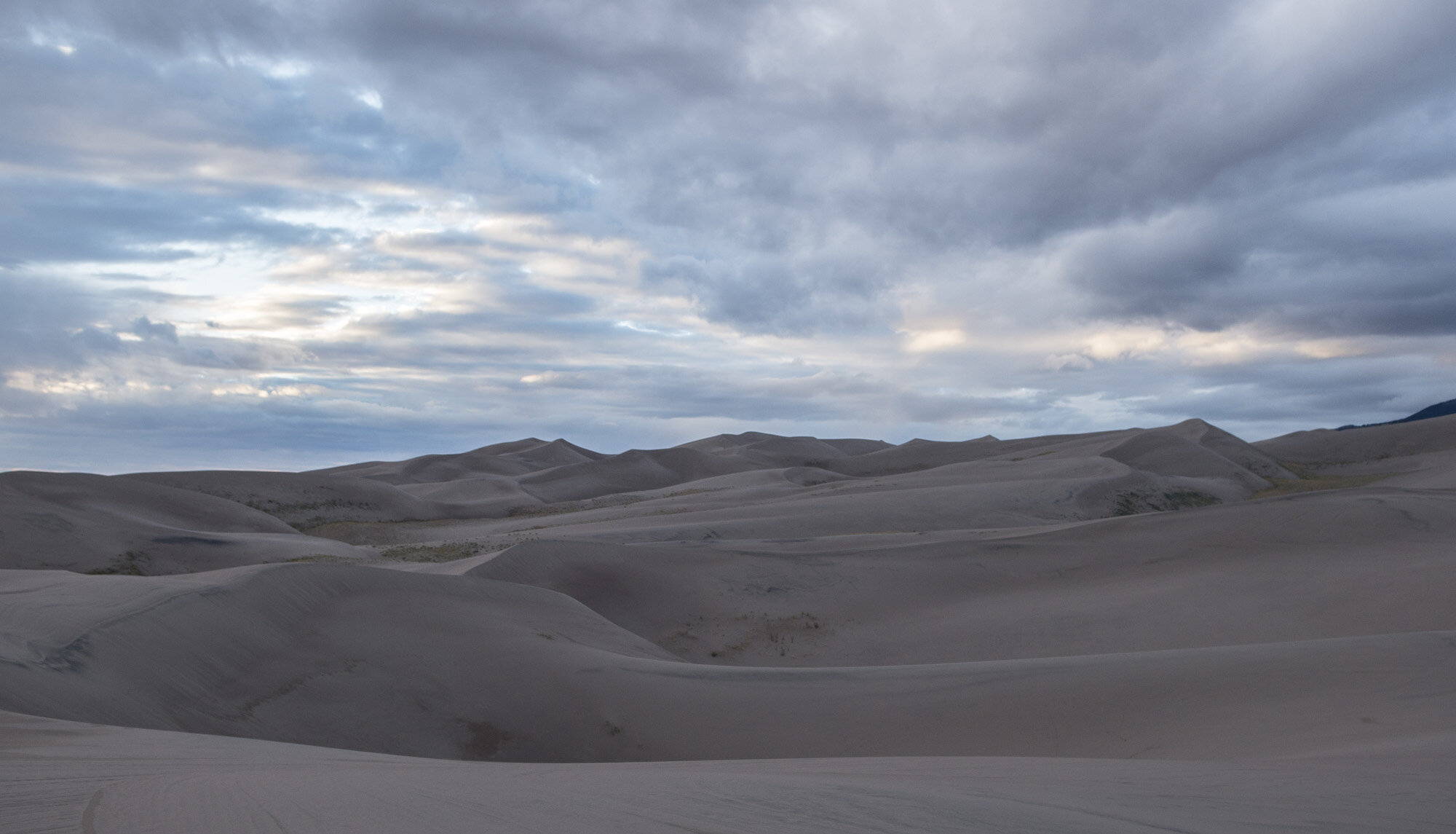
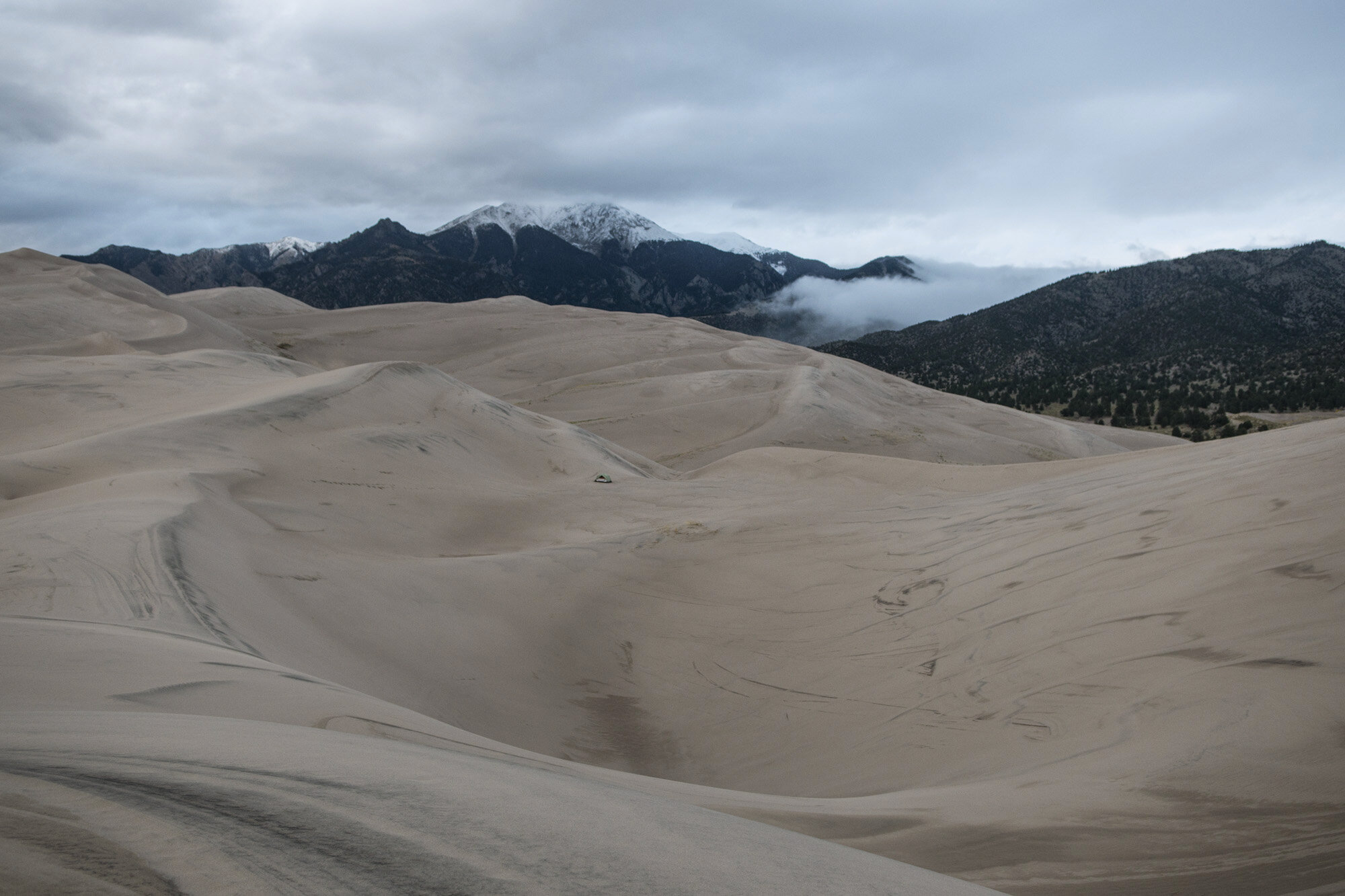
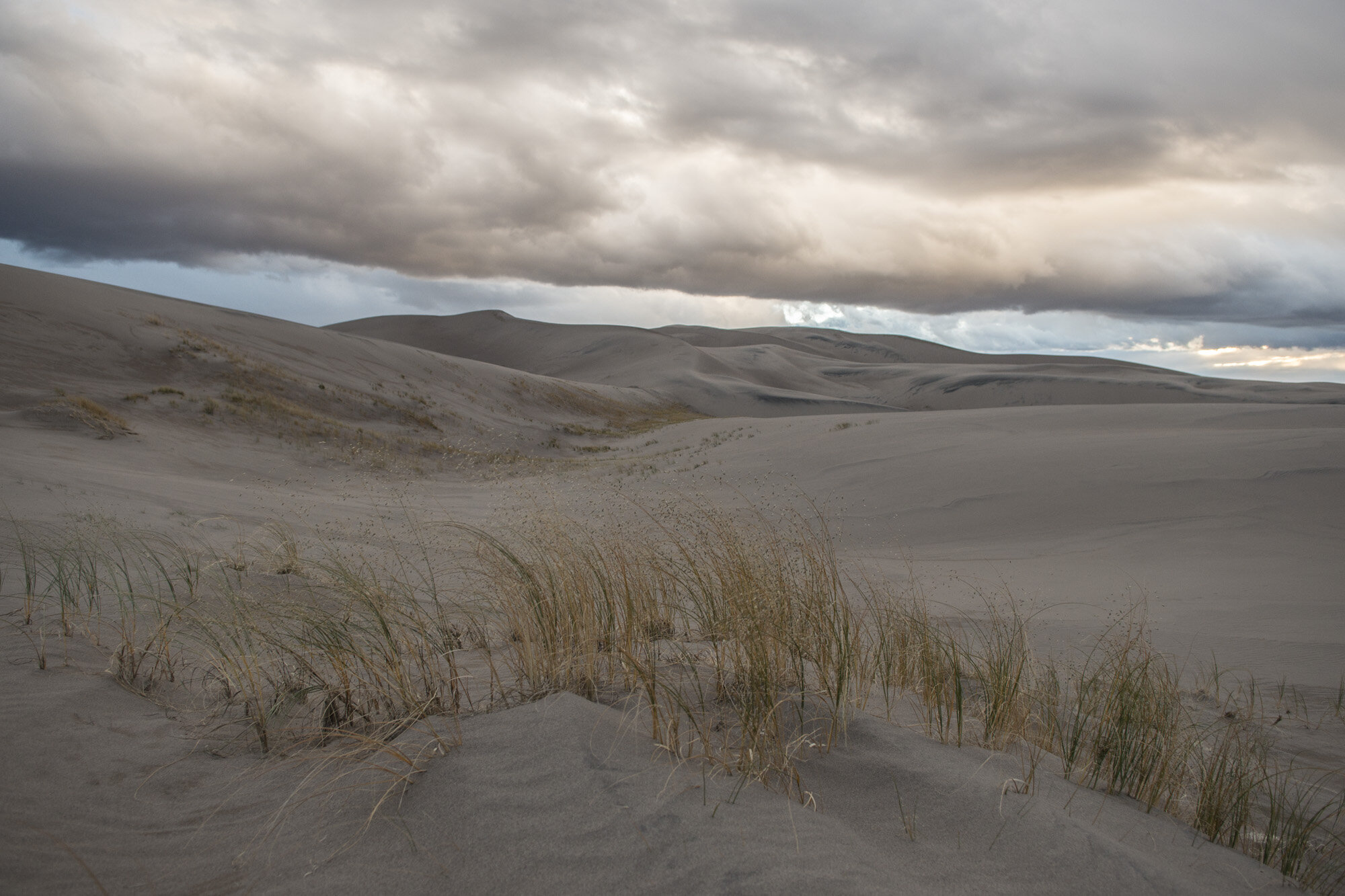
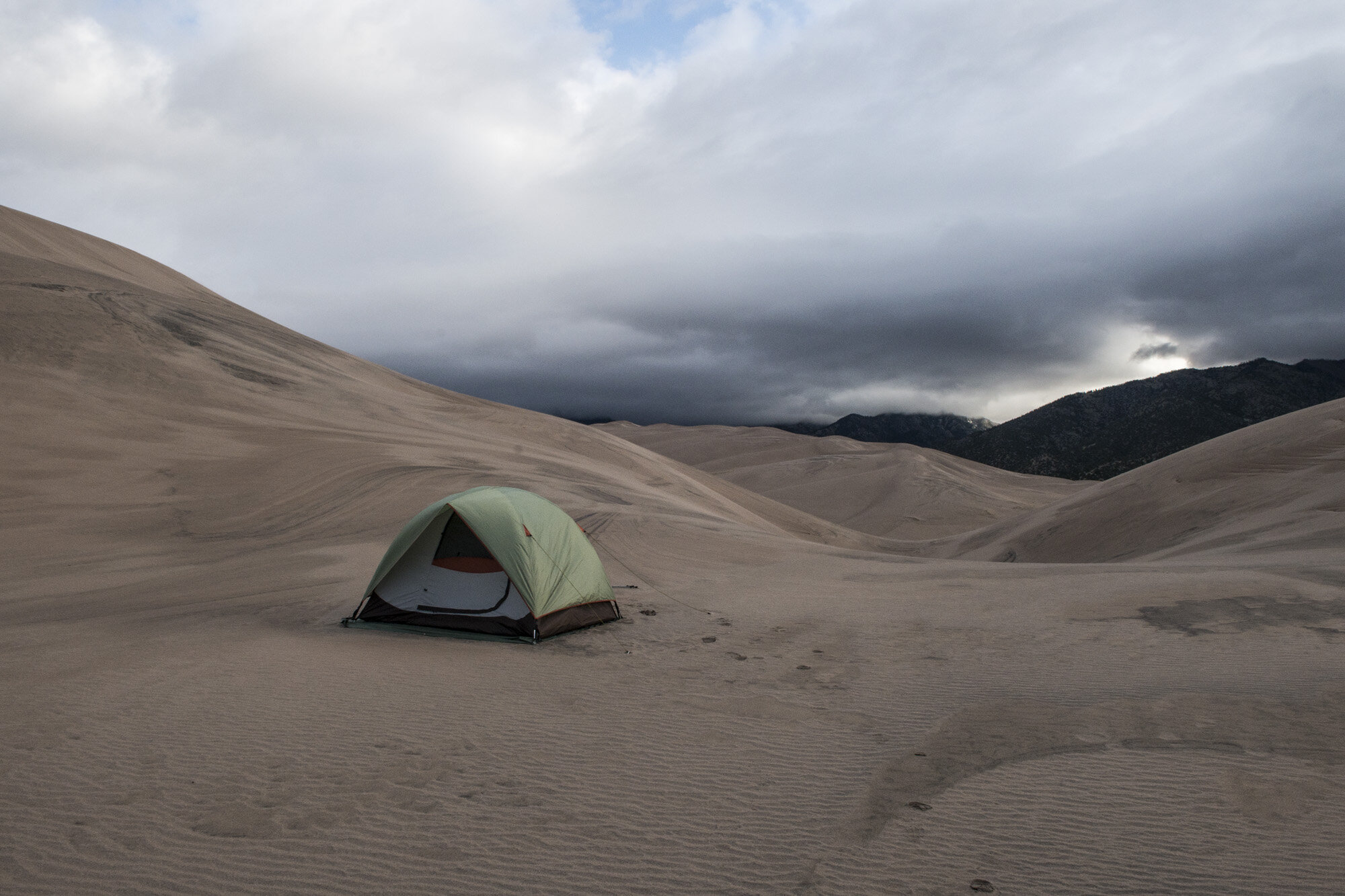
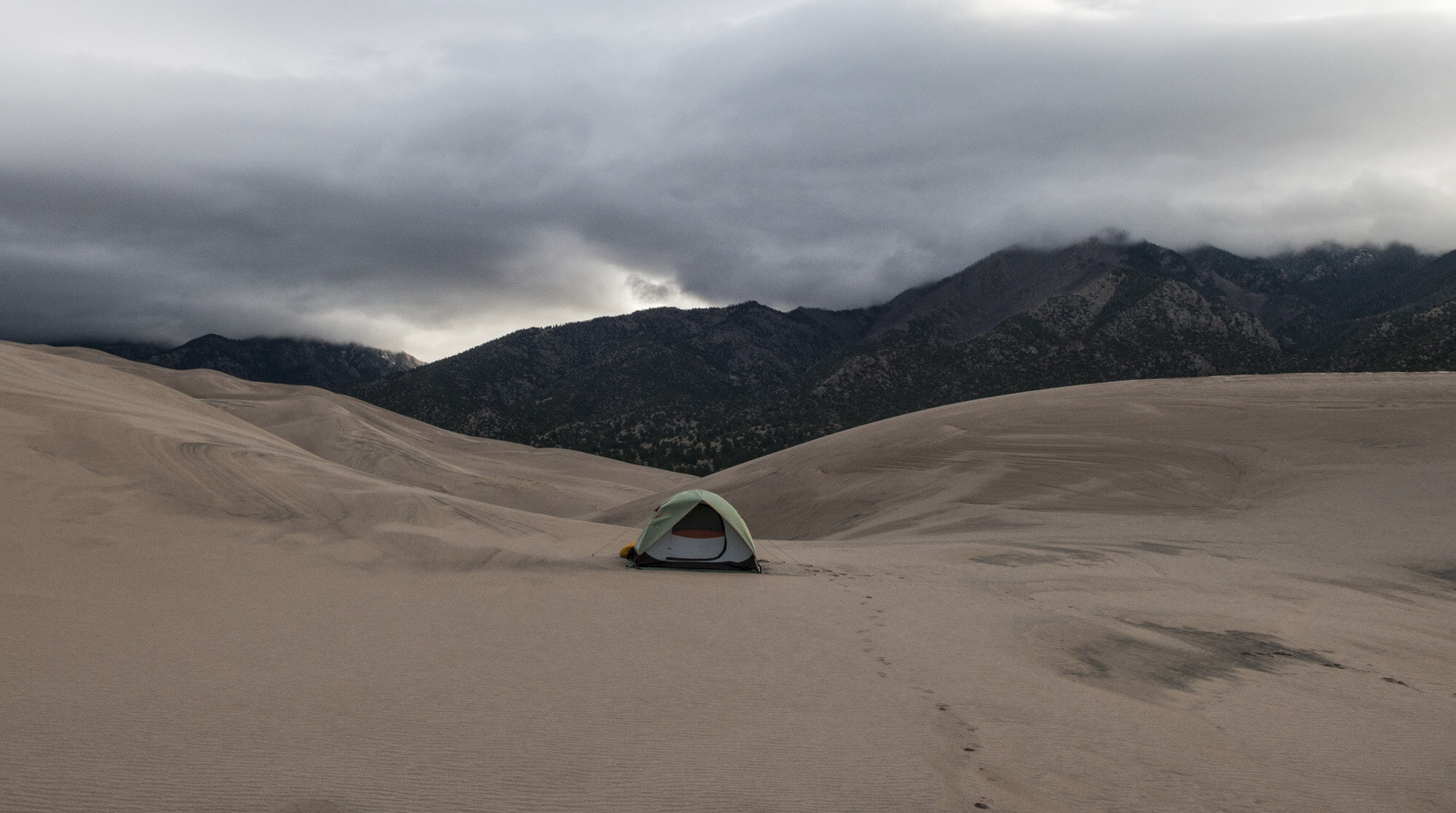
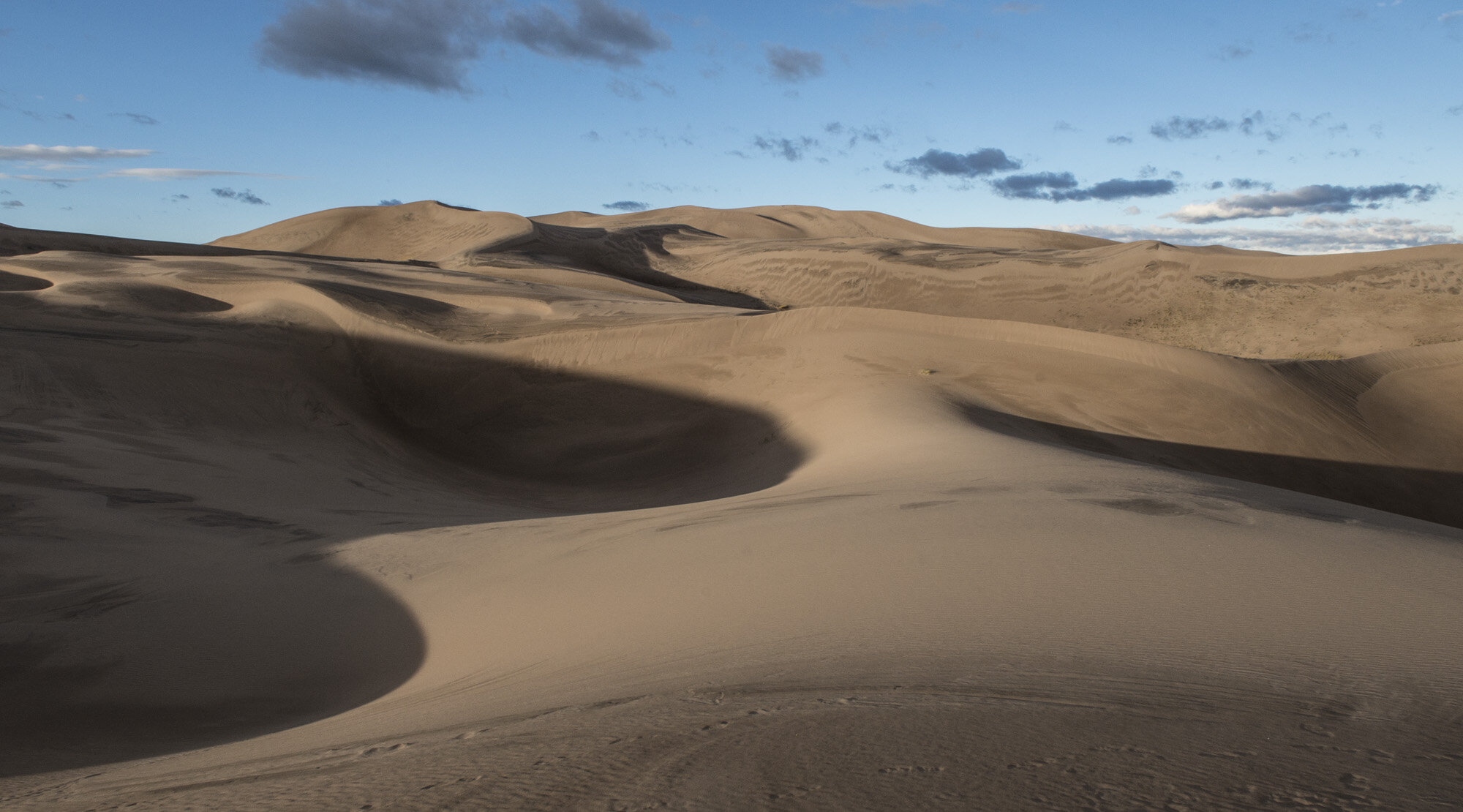
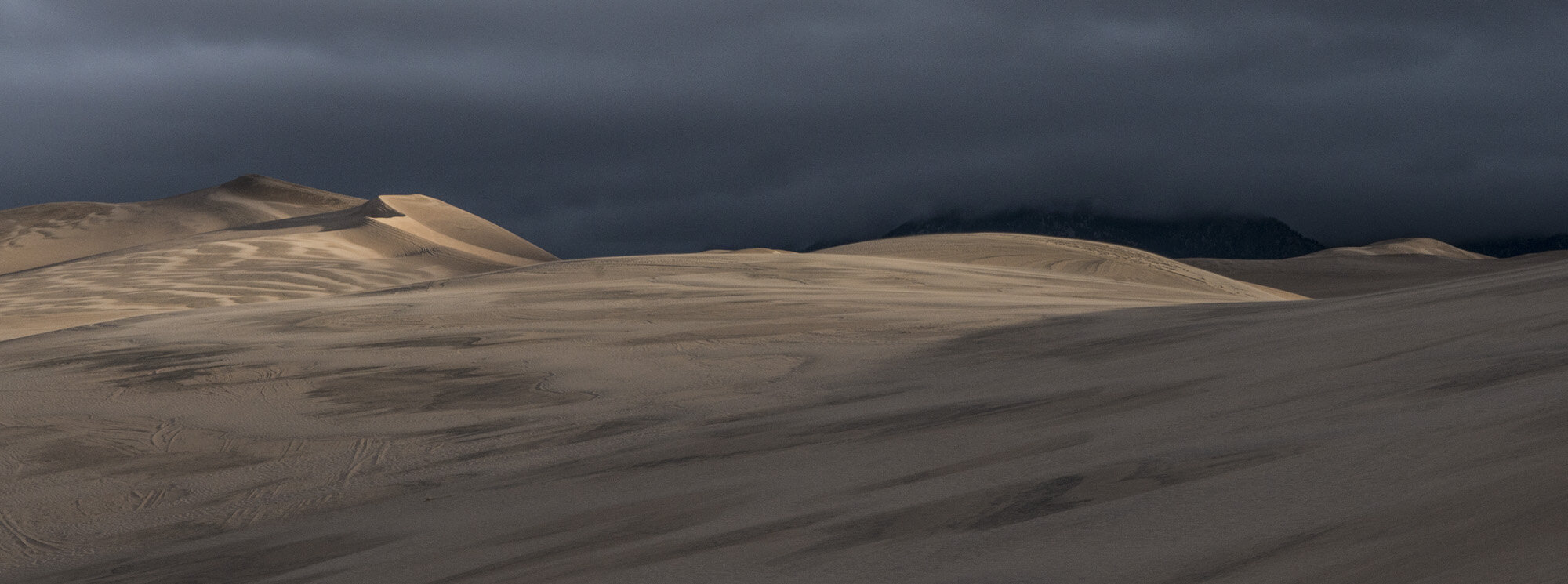
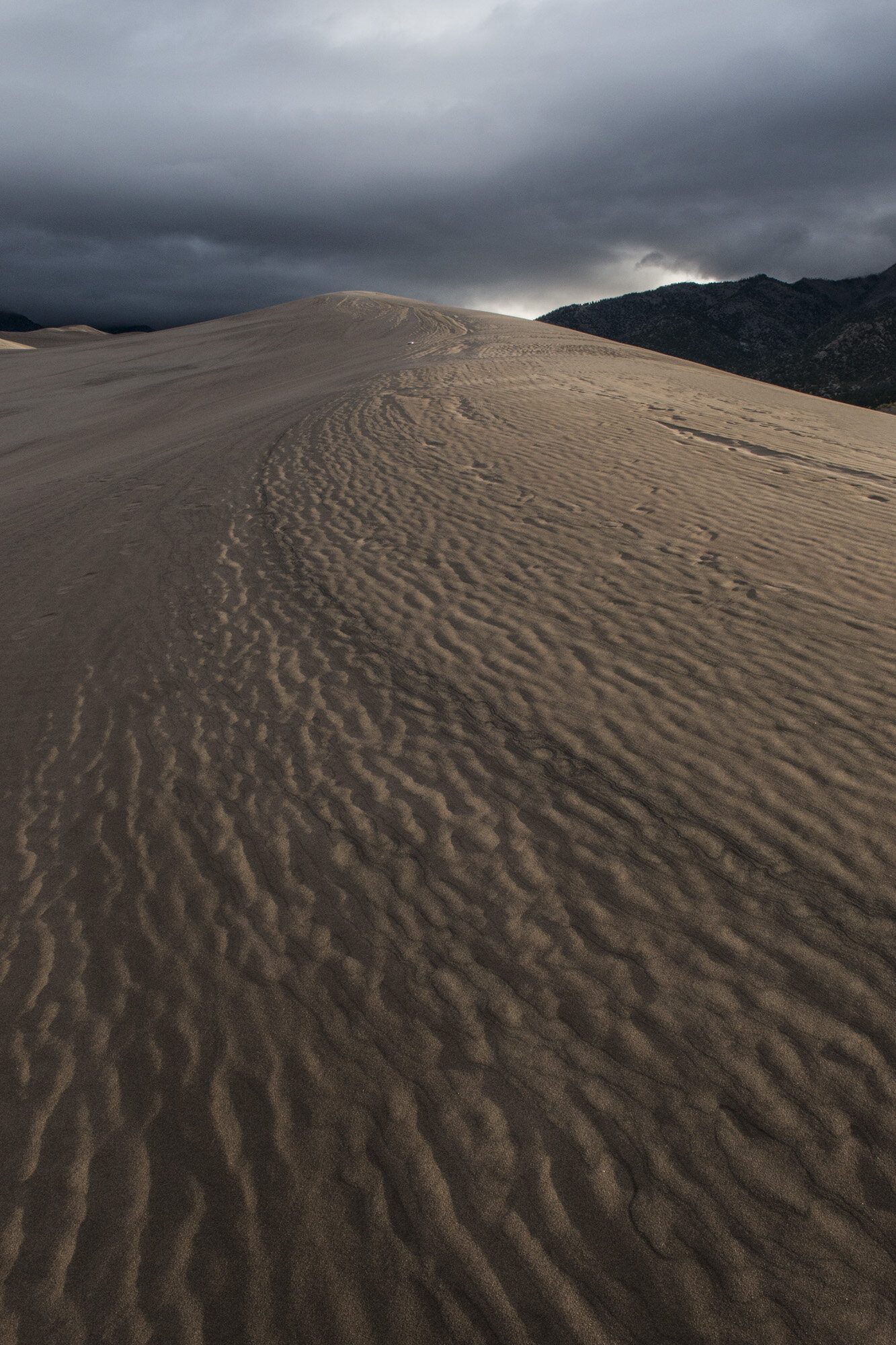
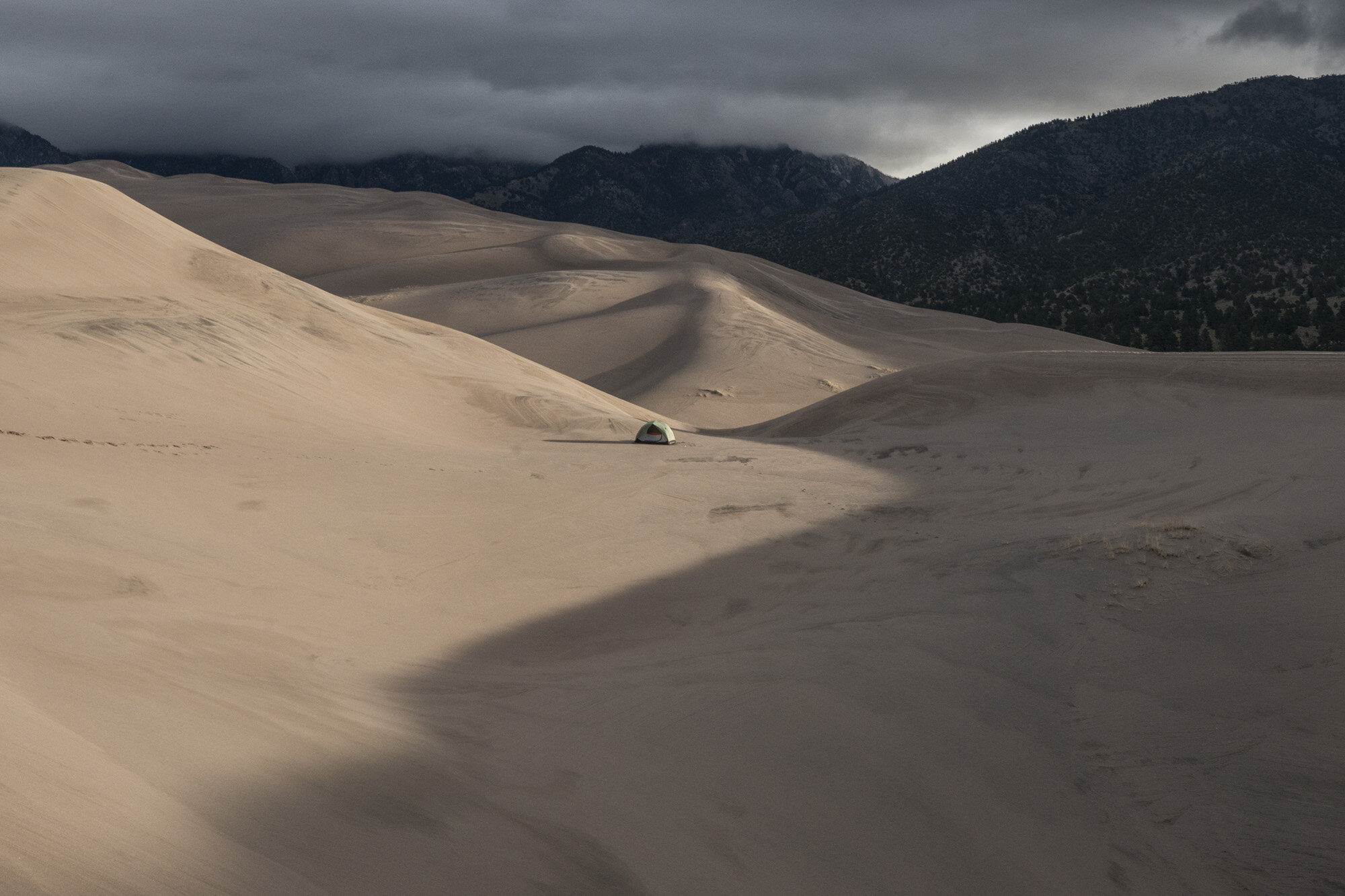
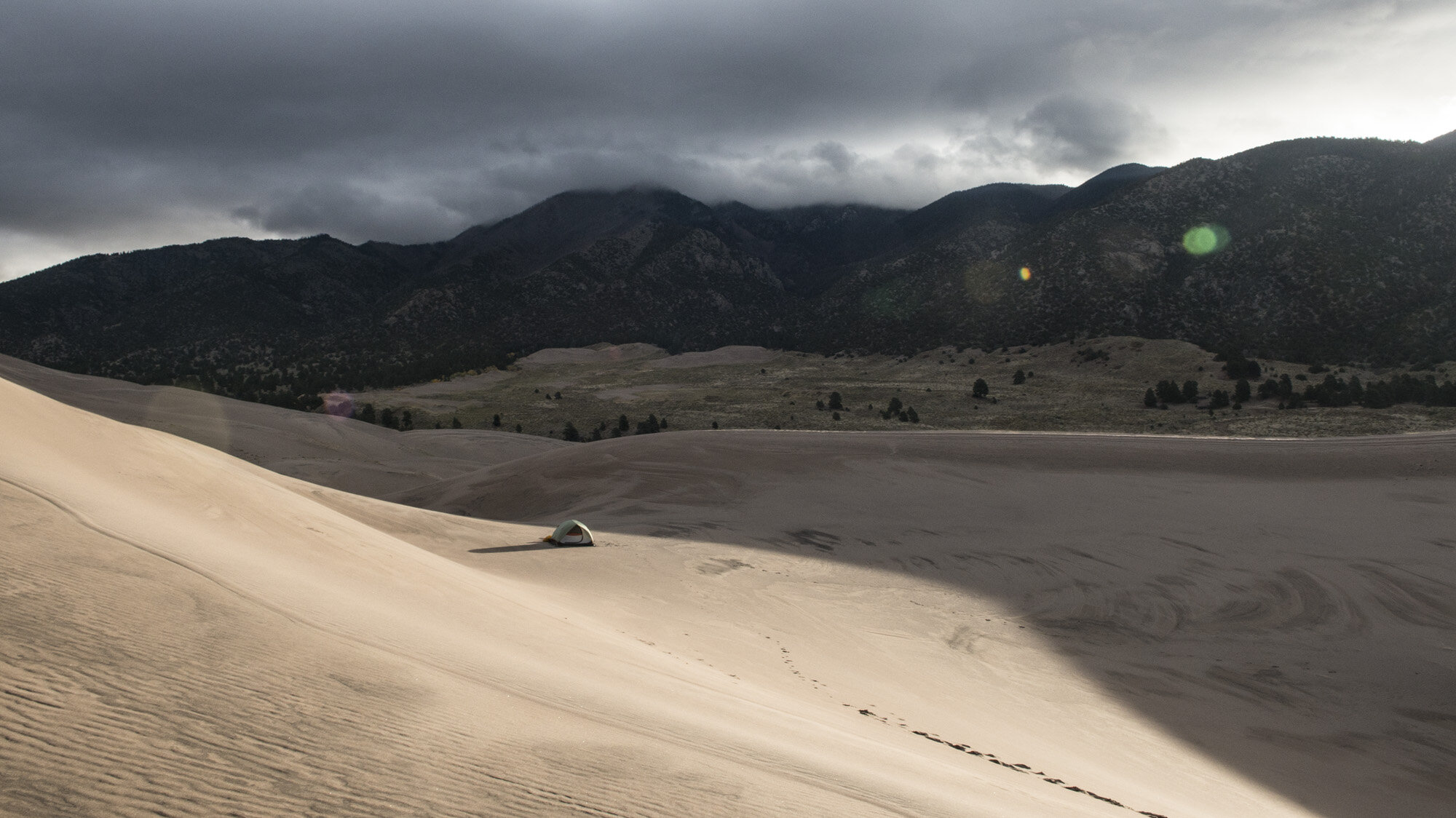
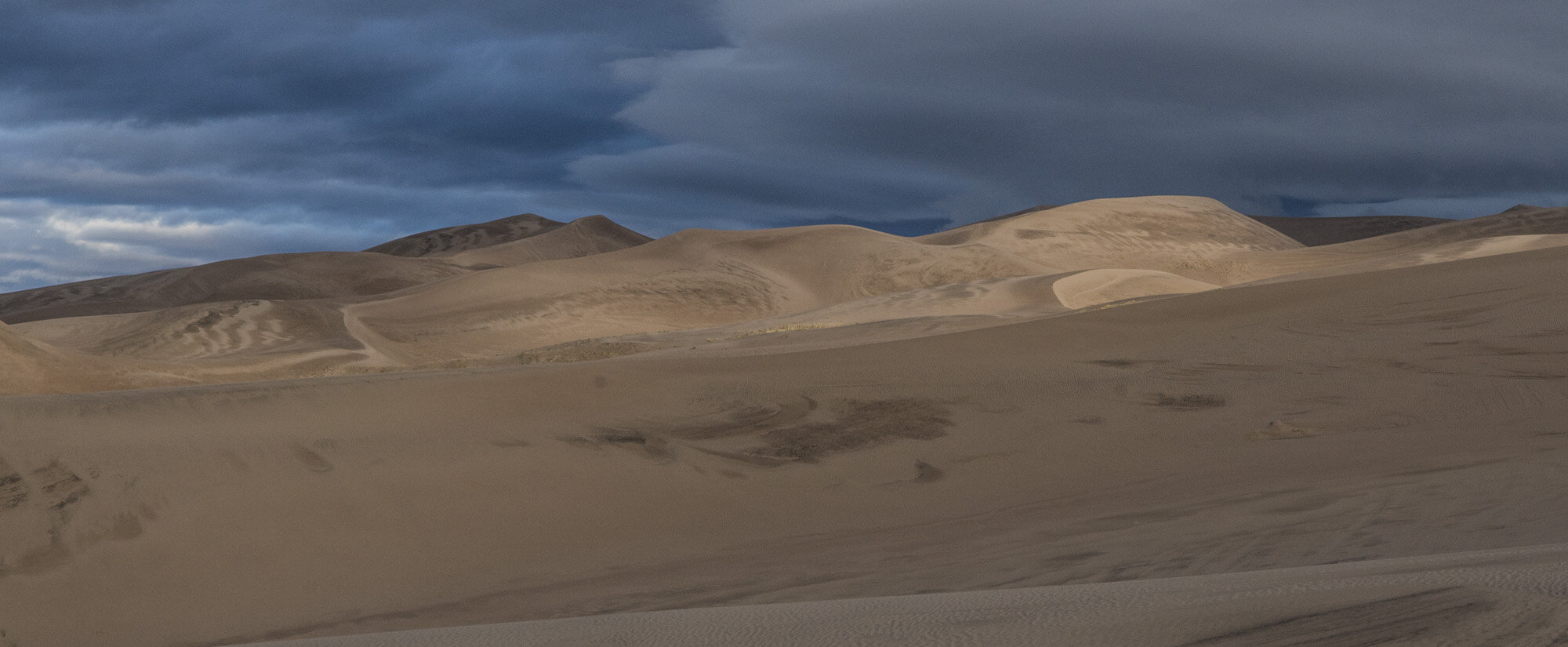
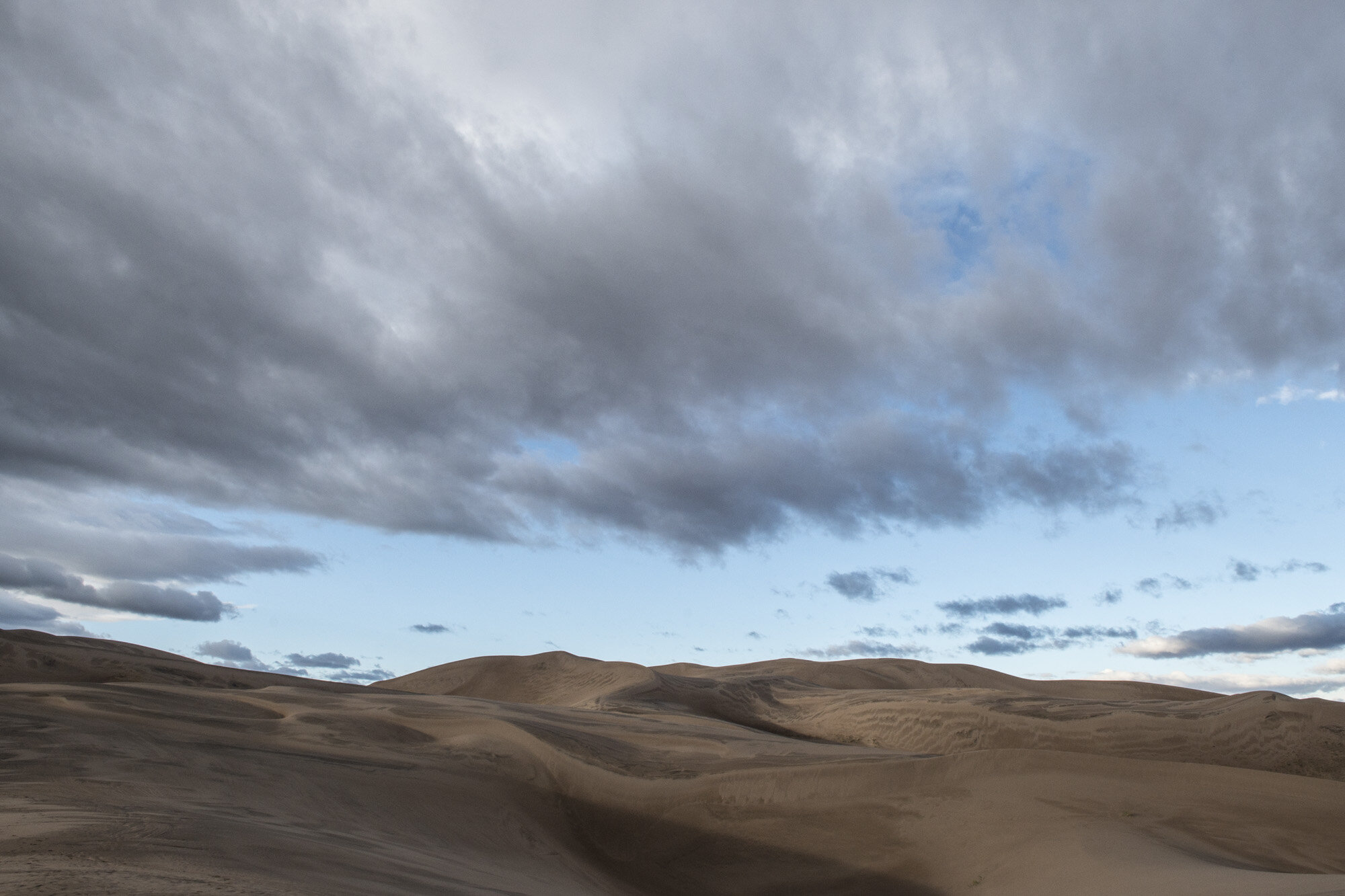
Other posts in this series:
Everglades National Park, Florida. Keeping My Feet On Not-So-Solid Ground.
Gateway Arch National Park, Missouri. Super sketchy, But I Did It.
Dry Tortugas National Park, Florida. Best Birthday Ever.
Theodore Roosevelt National Park, North Dakota. Stuck In A Dangerous Situation.
Great Basin National Park, Nevada. An Unexpected Journey.
White Butte, Highpoint of North Dakota. Really? More Goats?
Mount Katahdin, Highpoint of Maine. If At First you Don't Succeed...
Hawkeye Point, Highpoint of Iowa. So... Much... Corn...
Granite Peak, Highpoint of Montana. I Have Seen The Top Of The Mountain, And It Is Good.
Mount Borah, Highpoint of Idaho. The Great American Eclipse Of 2017.
Tri-Point Of Iowa, Nebraska, And South Dakota. Hot. Damn Hot. Real Hot.
Sassafras Mountain, Highpoint of South Carolina. Please excuse our mess.
Ebright Azimuth, Highpoint of Delaware. Rock bands and space shuttles.
Charles Mound, Highpoint of Illinois. A farmland stroll.
Tri-point of NC, TN, and VA. My car meets its match.
Mount Rogers, Highpoint of Virginia. OH MY GOD!!! LOOK AT ALL THE FUZZY PONIES!!!
Guadalupe Peak, Highpoint of Texas. Birth of an obsession. And big freaking bugs.









